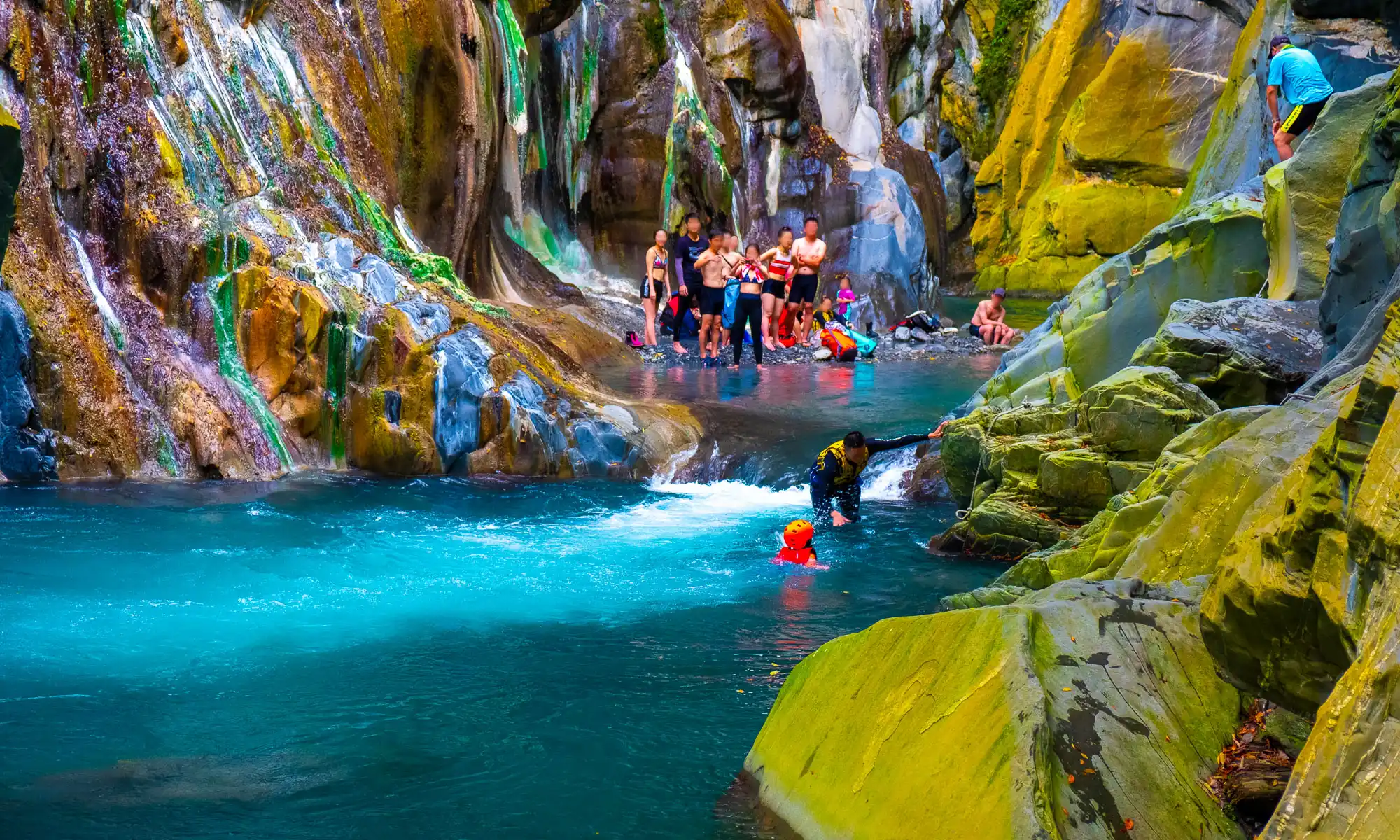An Insider’s Guide to Taitung City – The Beautiful and Lush Backyard of Taiwan
Known as the “Garden of Taiwan”, Taitung is a county that is rich in natural beauty and stands out as a destination for agricultural tourism and ecotourism.
From the serene landscapes of Chishang, known as Taiwan’s “Rice Heaven”, to the mesmerizing rock formations of Xiaoyeliu and the therapeutic waters of Green Island’s Zhaori Hot Spring, Taitung promises a diverse array of natural attractions.
For travelers with a penchant for off-the-beaten-track adventures, Taitung offers a variety of hikes that lead to some of Taiwan’s most remote and beautiful wilderness destinations. Two of Taiwan’s most well-known mountaineering destinations: Lisong Hot Spring, a serene natural hot spring, and Jiaming Lake, Taiwan’s most famous alpine lake, are both located on the Southern Cross-Island Highway near Chishang.
Whether you’re a nature enthusiast, a history buff, or someone seeking tranquility, Taitung’s blend of scenic vistas, agricultural heritage, and poignant historical sites makes it a must-visit destination.
Chishang Township
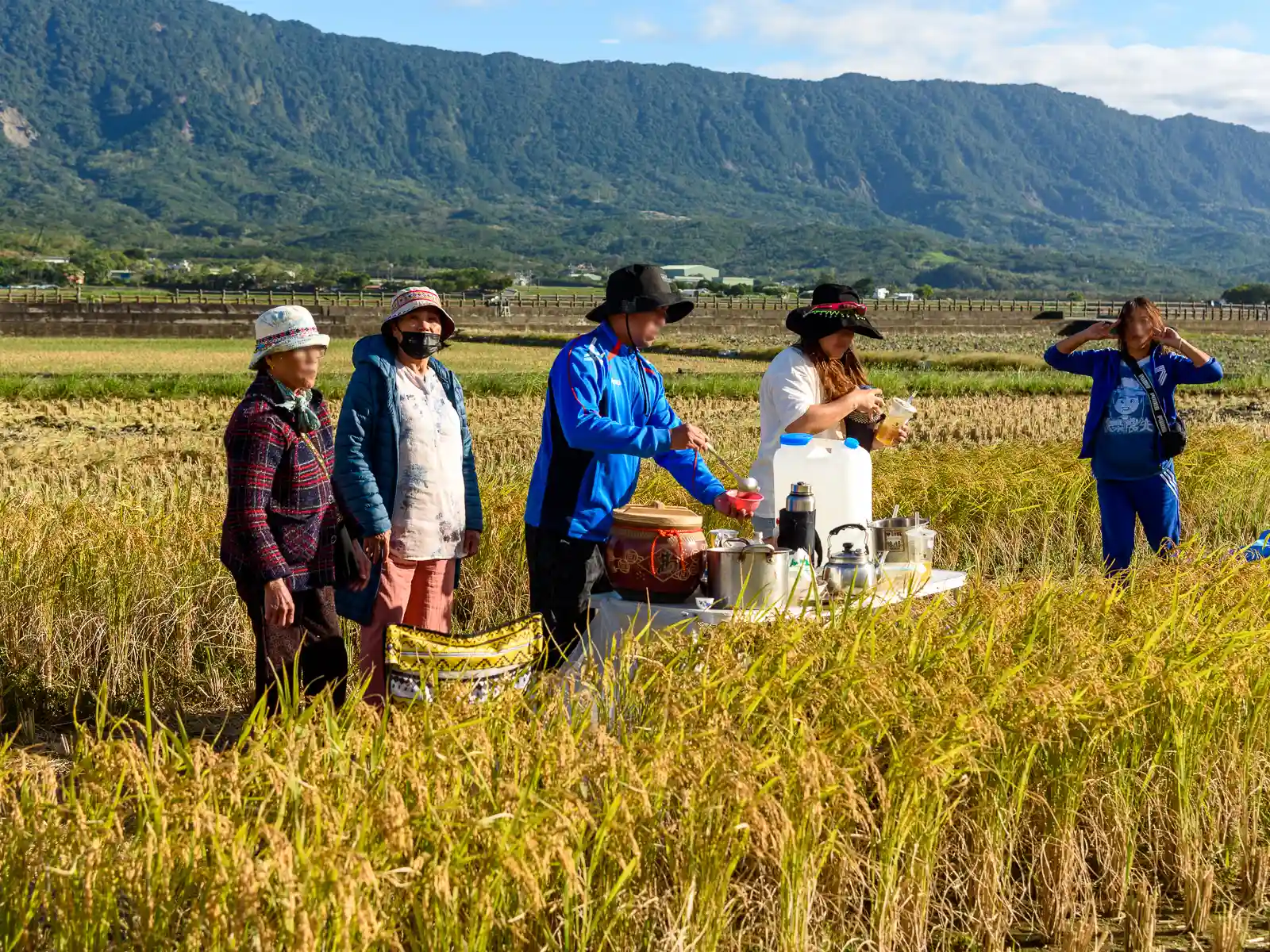
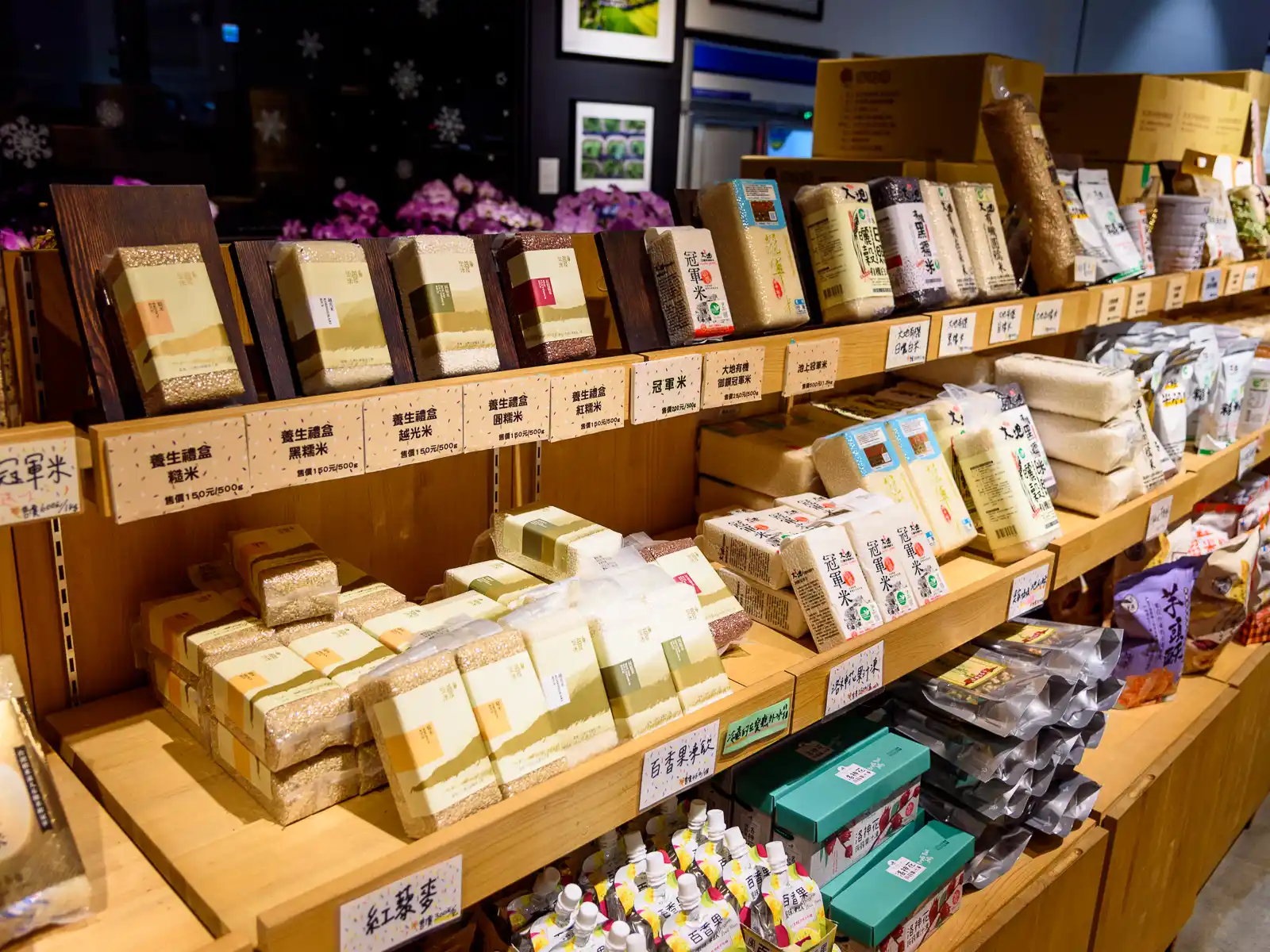
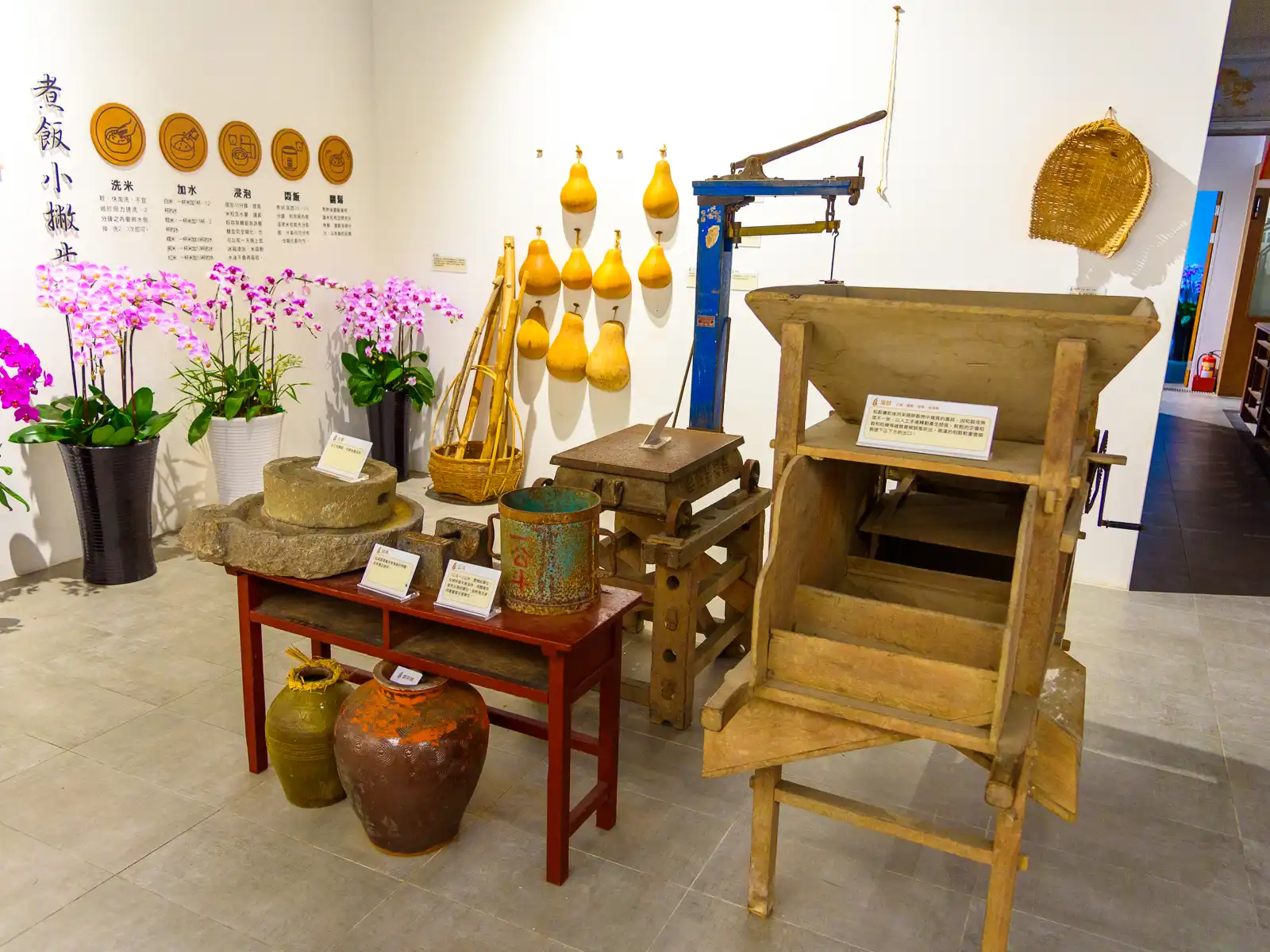
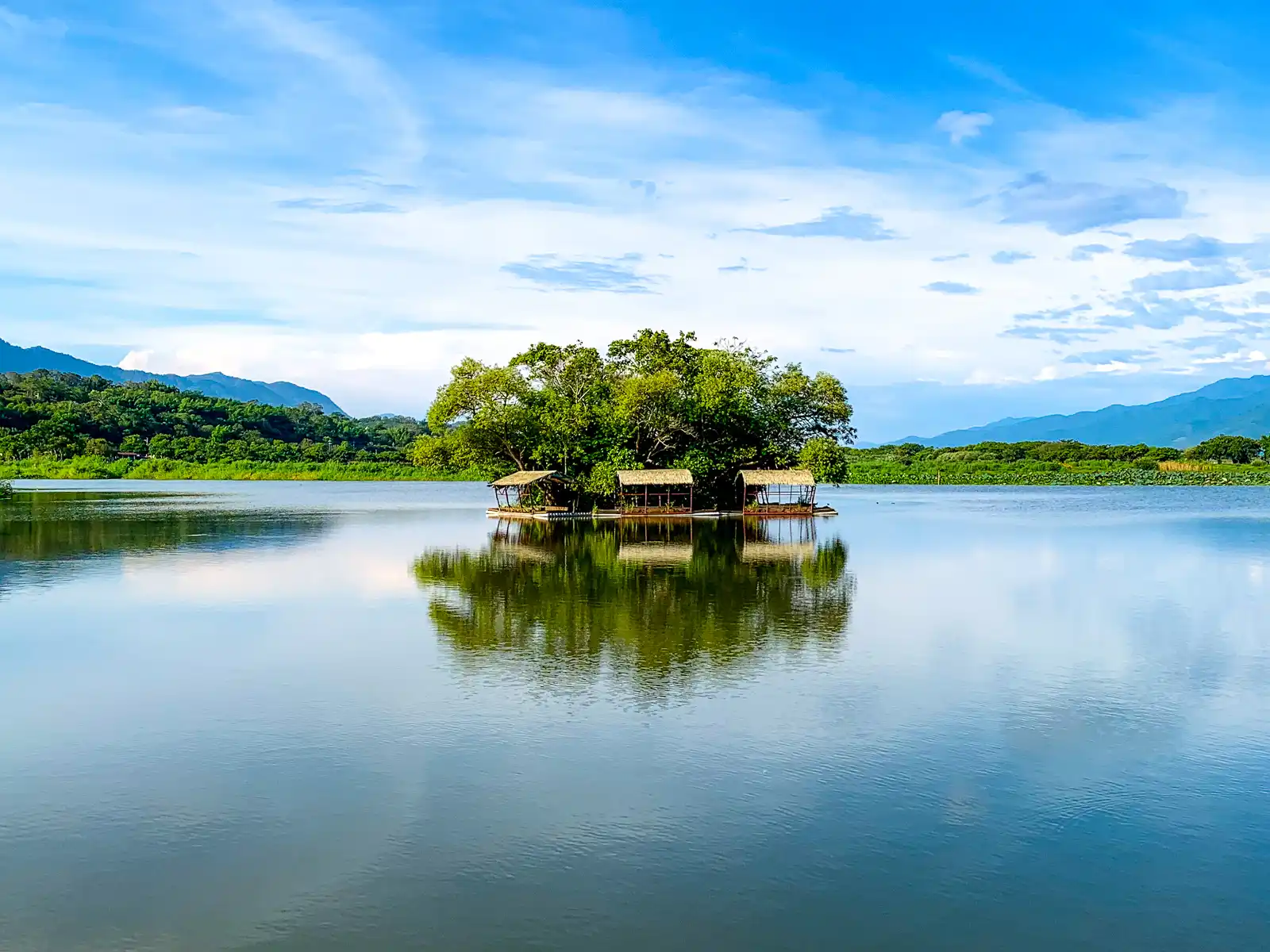

Chishang is a quiet, yet beautiful, town located at the epicenter of rice production in the East Longitudinal Valley (formerly known as the East Rift Valley). Surrounding the town, vast expanses of rice paddies stretch out against the backdrop of rolling mountains and offer breathtaking views that change with the seasons. The town’s agricultural heritage has earned it the title of Taiwan’s “Rice Heaven”, and locally grown rice is known to be the most delicious rice in Taiwan.
Due to the town’s popularity with tourists, the vibrant downtown is chock-full of cute cafes, healthy snack bars, and rustic eateries. The town also has a lively local arts scene and is home to a handful of workshops, museums, and artist galleries that make it one of the most worthwhile stops in the East Longitudinal Valley.
Mr. Brown Avenue
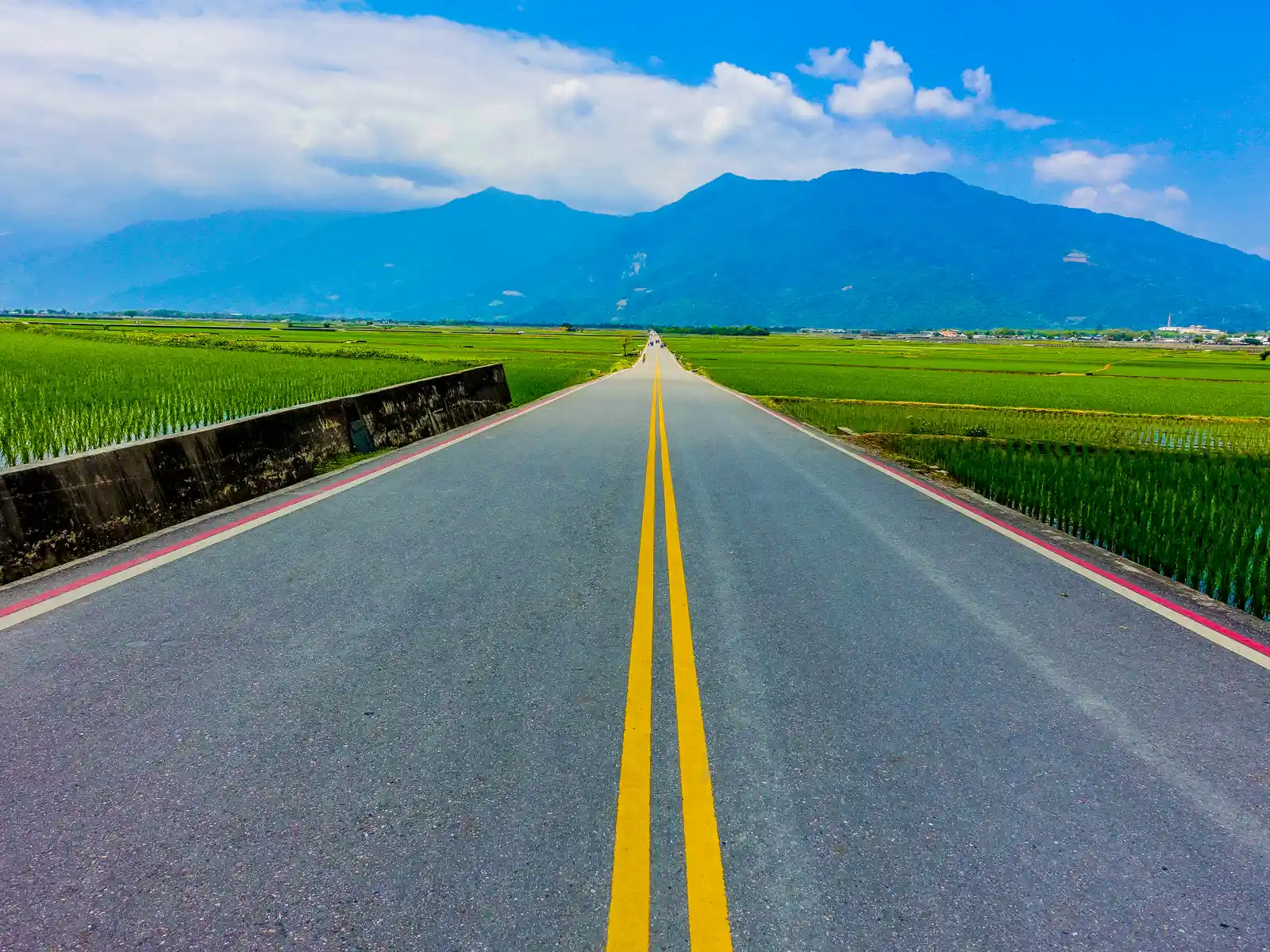
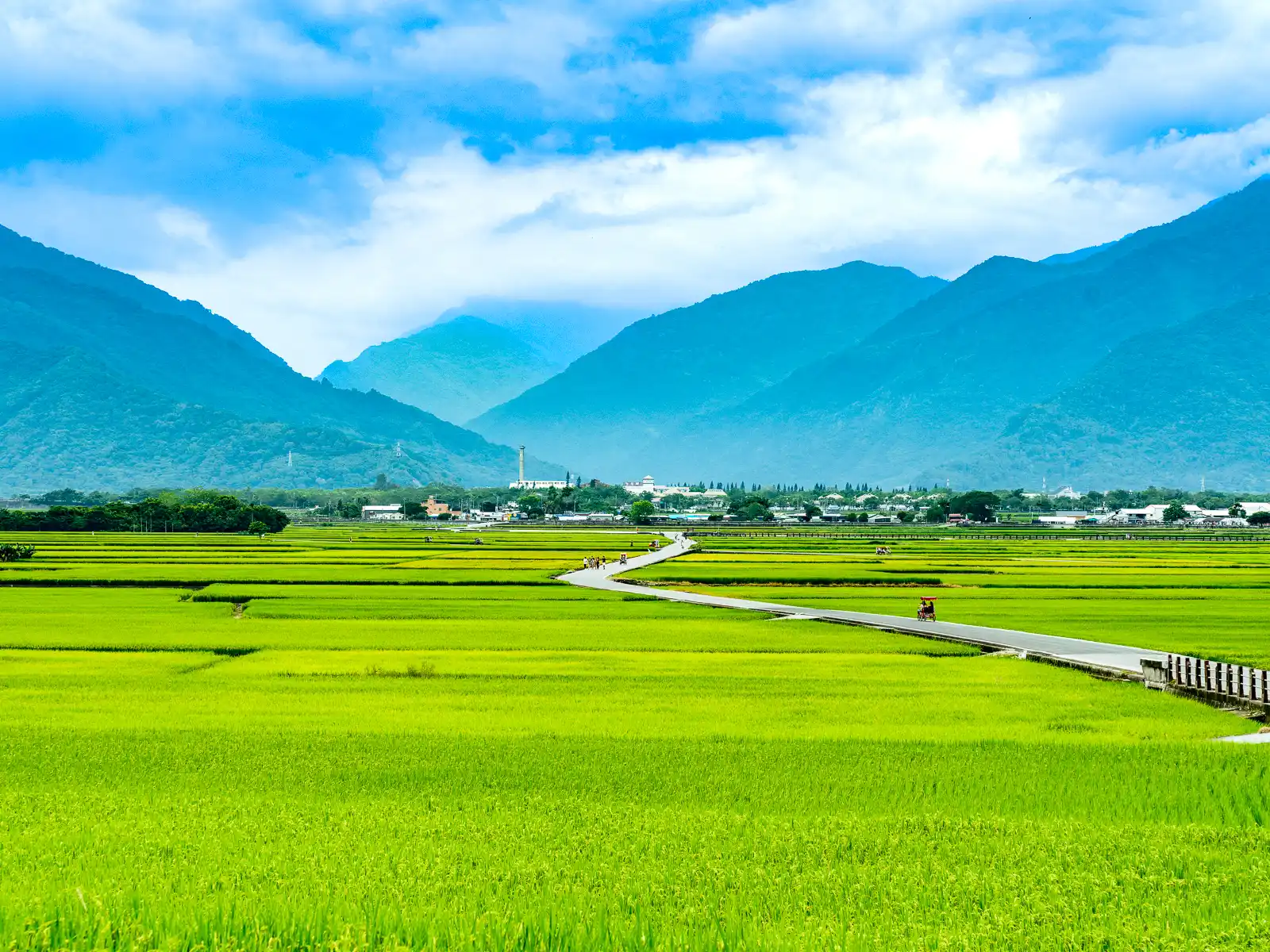
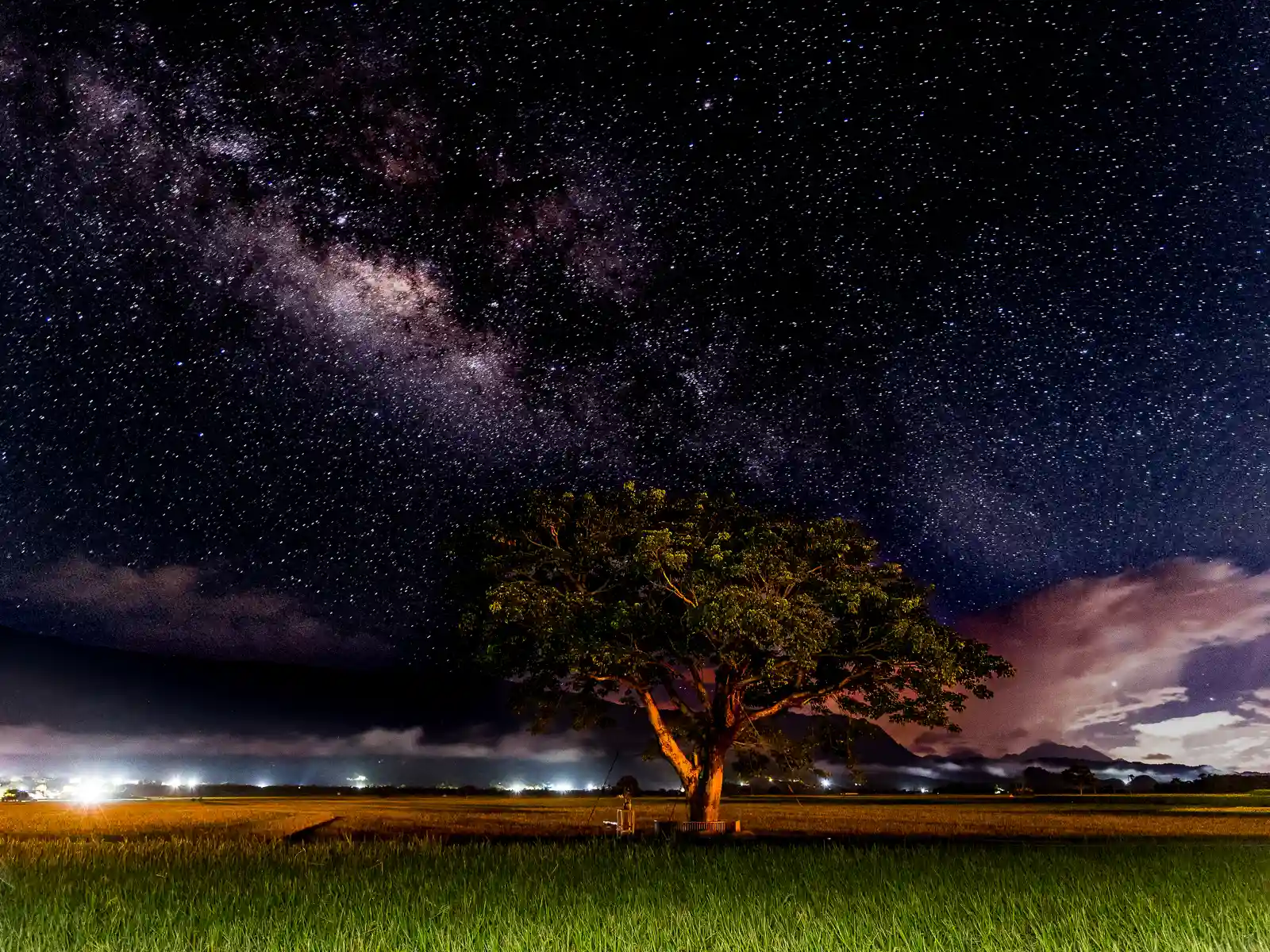
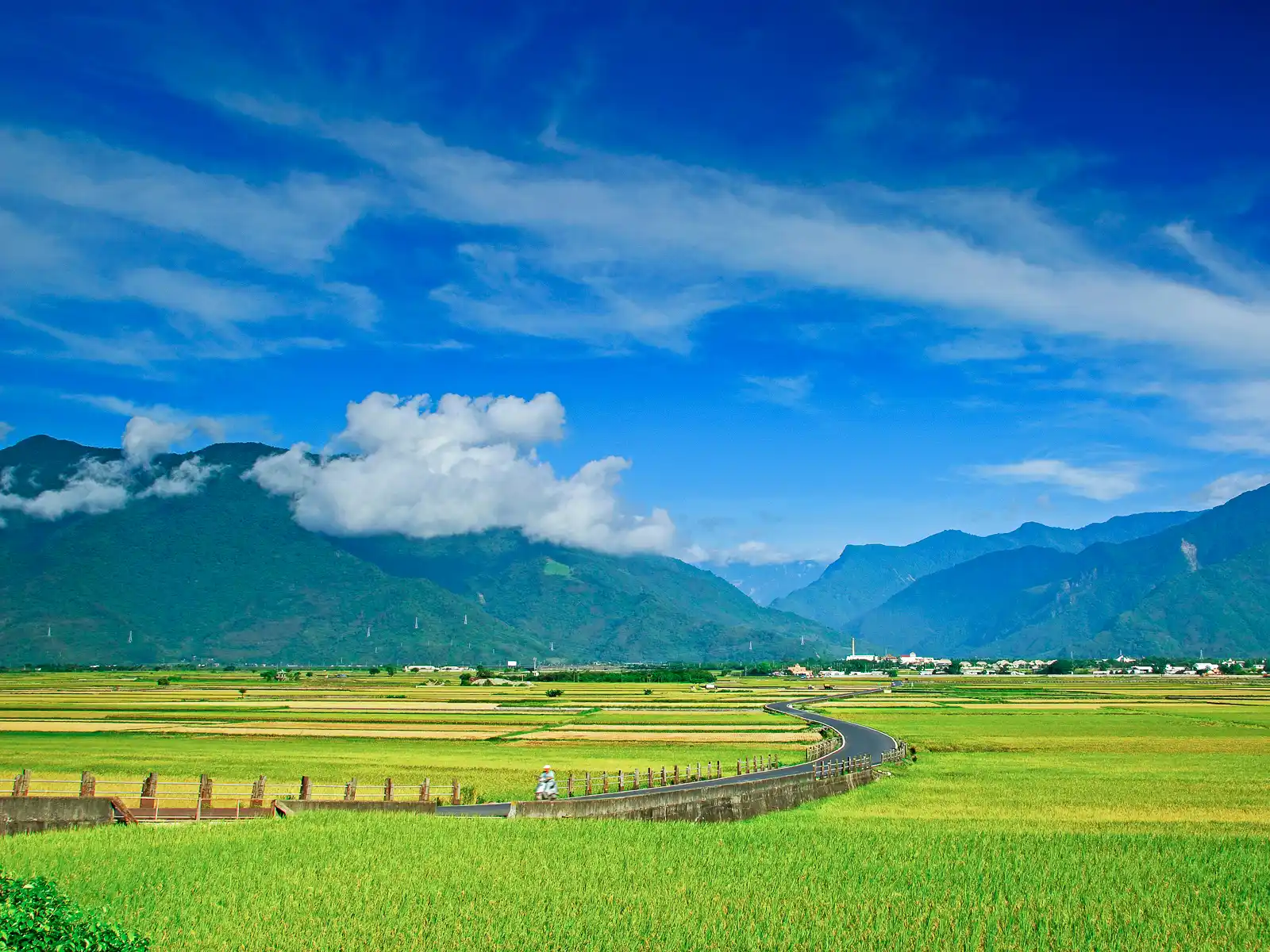
Located just outside of downtown Chishang, Mr. Brown Avenue is an idyllic agricultural road and famous cycling destination that runs diagonally through the rice fields of the East Longitudinal Valley. The landscape of the road changes throughout the seasons as crops are planted and harvested.
During the beginning of summer and again in autumn the road is surrounded by blooming fields of green rice paddies. Around January, rapeseed is planted as a cover crop, and offers a slightly different but equally picturesque landscape. When lit up by the sun, Chishang’s “fields of gold” are one of Taiwan’s most iconic sights.
Due to the area’s designation as a cycling destination, the roads in the vicinity of Mr. Brown Avenue are closed off to car traffic. Bike rentals are available in Chishang as well as right by the entrances to the rice fields.
Insider’s Tip: While times vary on a yearly basis, in general May through June, and September through October are the best times to visit in order to see mature rice fields.
Lisong Hot Springs
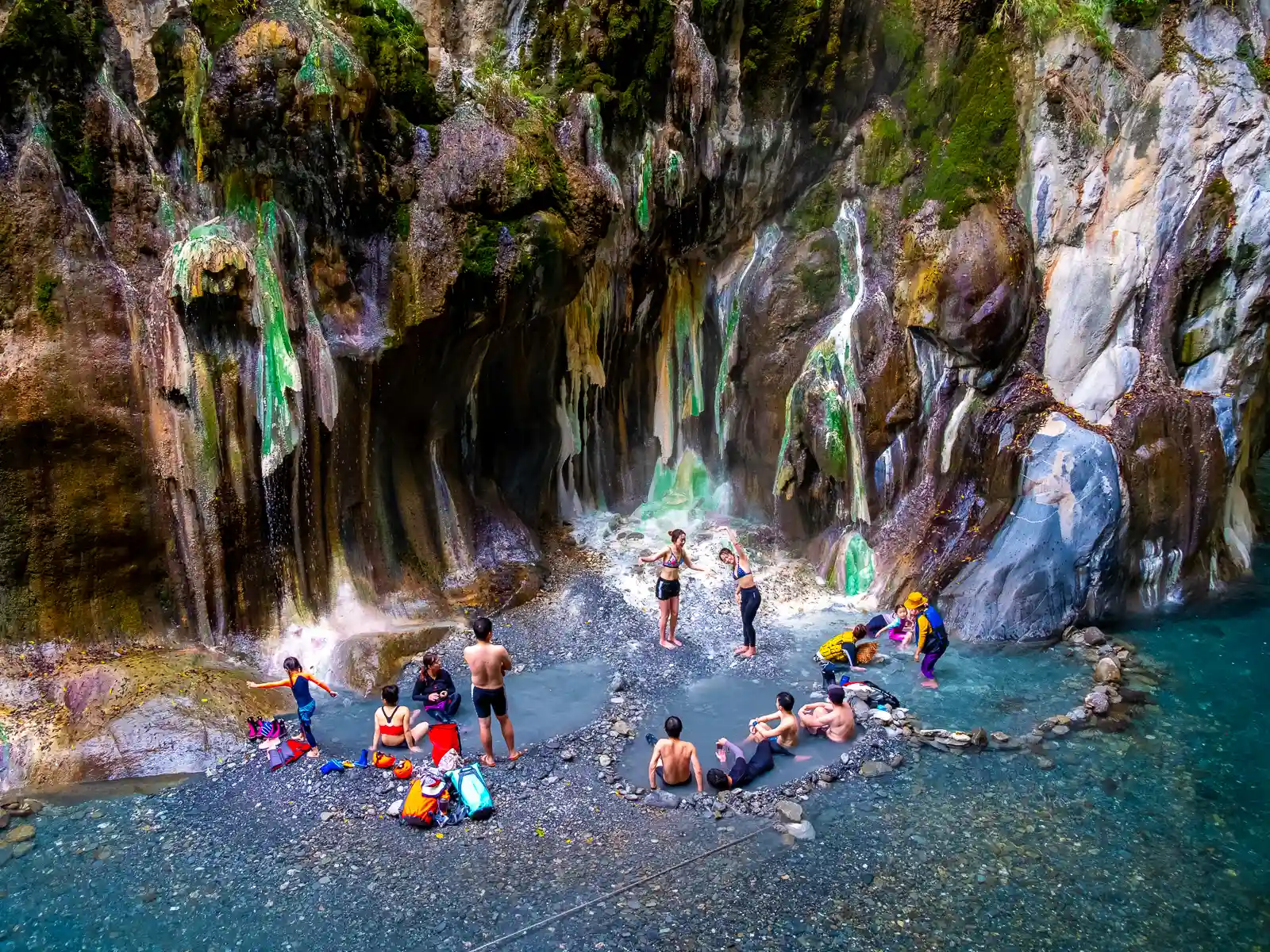
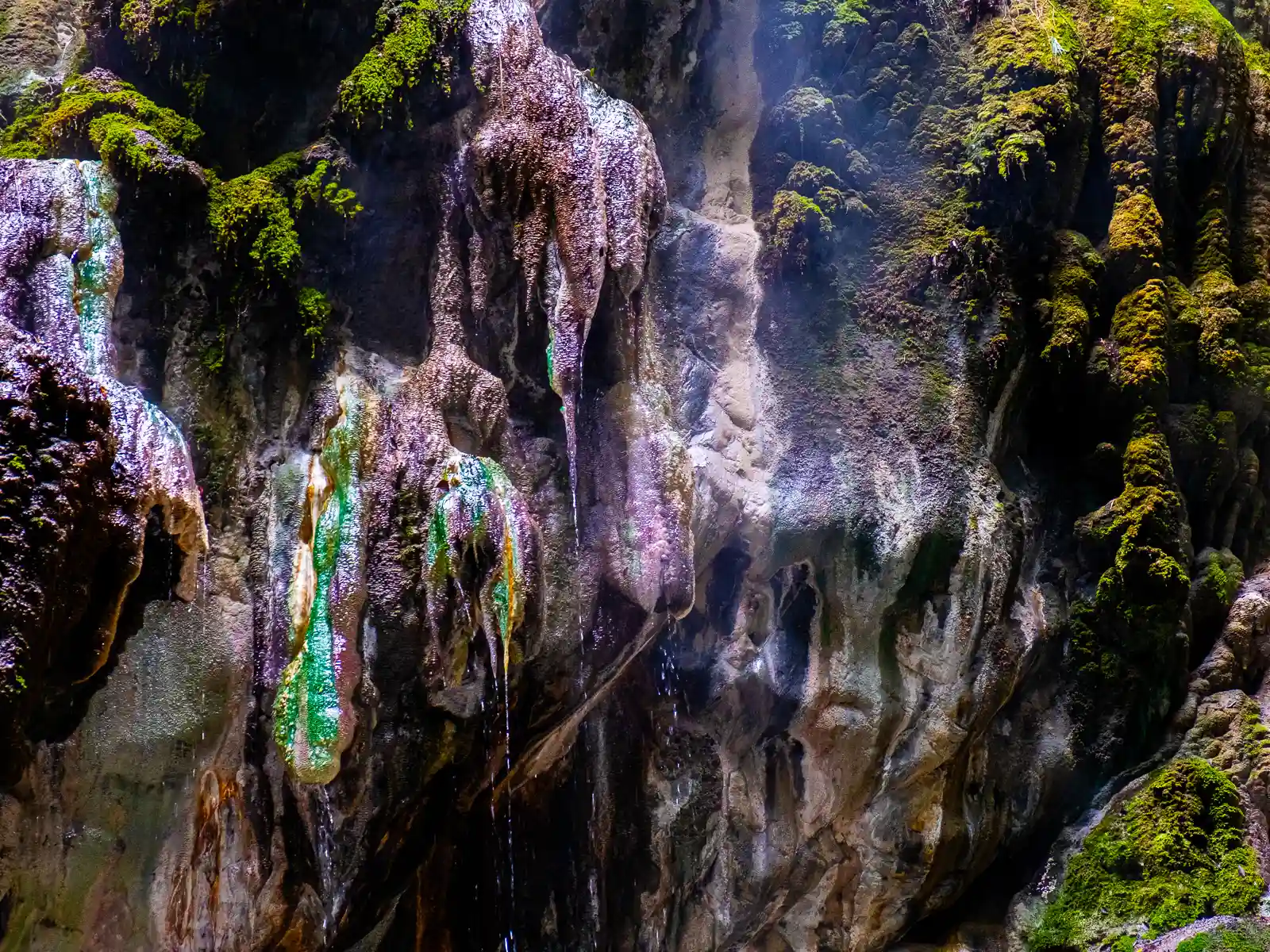
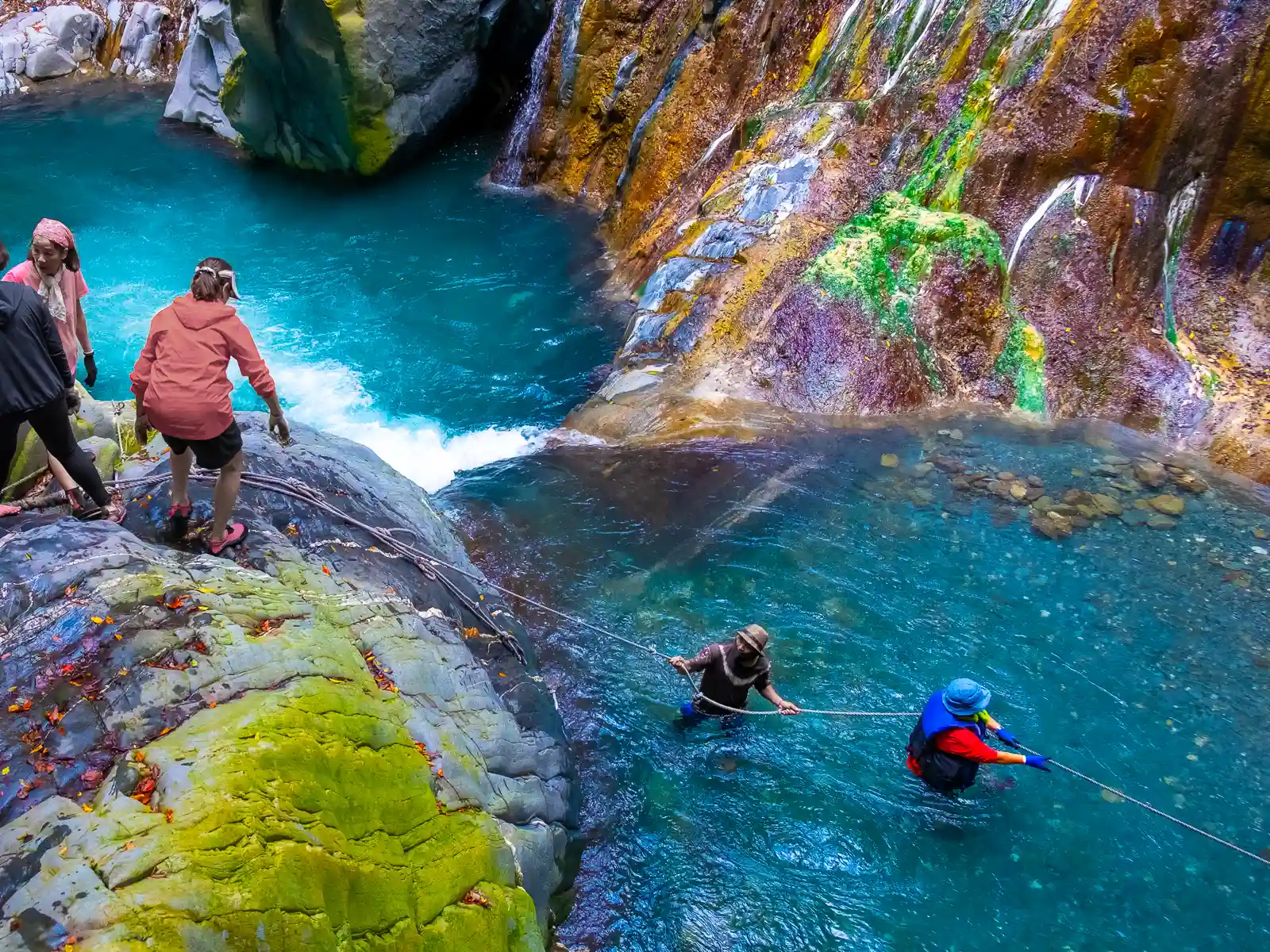
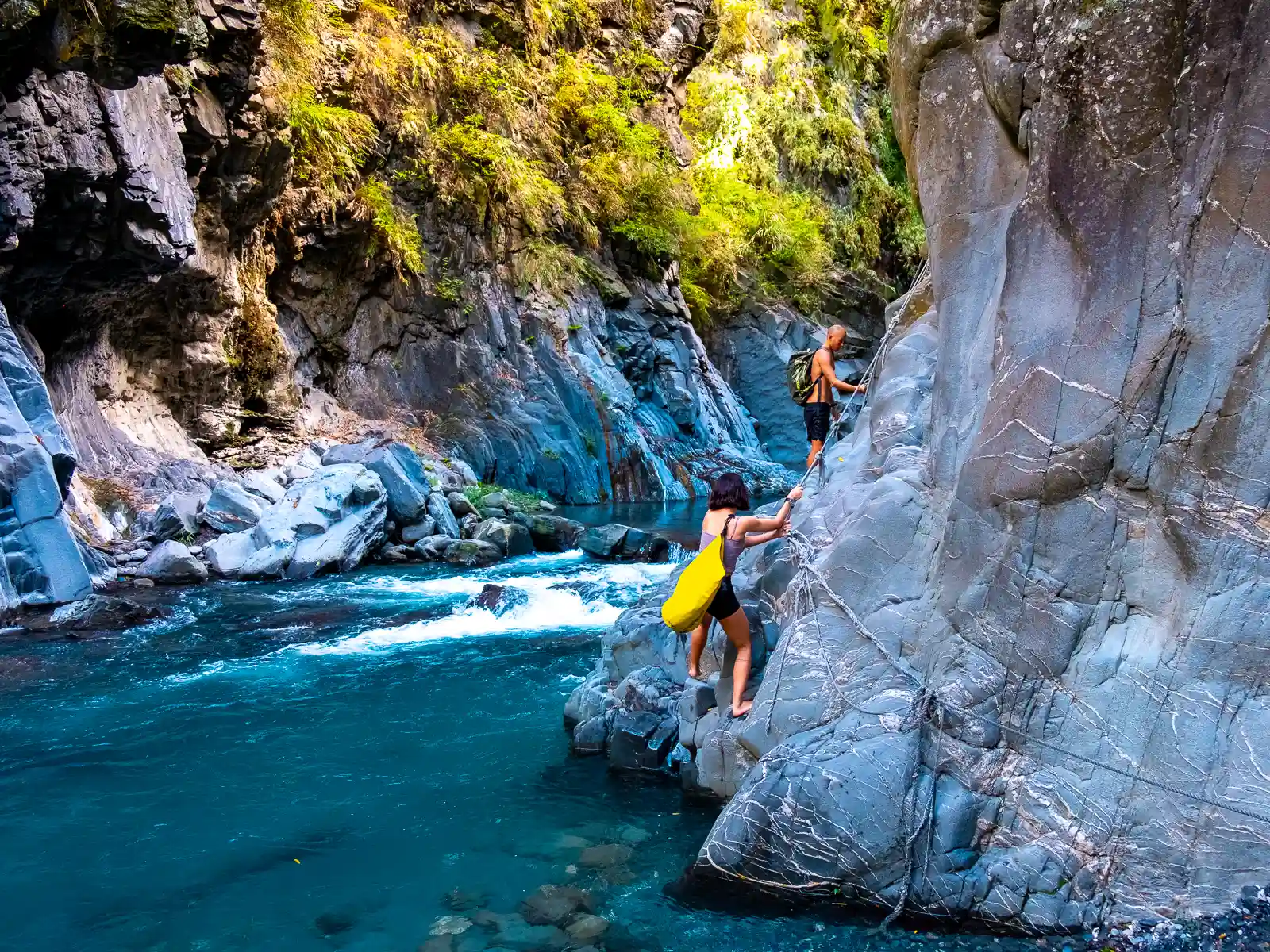
Hailed as “Taiwan’s Most Beautiful Wild Hot Spring”, Lisong Hot Spring is a sodium bicarbonate hot spring hidden deep in a canyon near the alpine region of the Southern Cross-Island Highway.
While this enchanting destination promises an experience like no other, the trip is not suitable for the faint of heart. The path to Lisong Hot Spring is a challenging hike that can take between 3-6 hours, depending on one’s fitness level. Contrary to most hikes, the approach is actually the easy part; it’s the ascent back up from the canyon that poses the greatest challenge.
The hike begins from this trail entrance which can be accessed by car or scooter from Chishang. It’s highly recommended to book a guide for the trip, as they will ensure you have adequate food and water, aid you in crossing the river, and will be able to assist you during technical sections.
Insider’s Tip: The best time to visit Lisong Hot Spring is between November and April when the weather is cooler and generally more stable.
Jiaming Lake National Trail
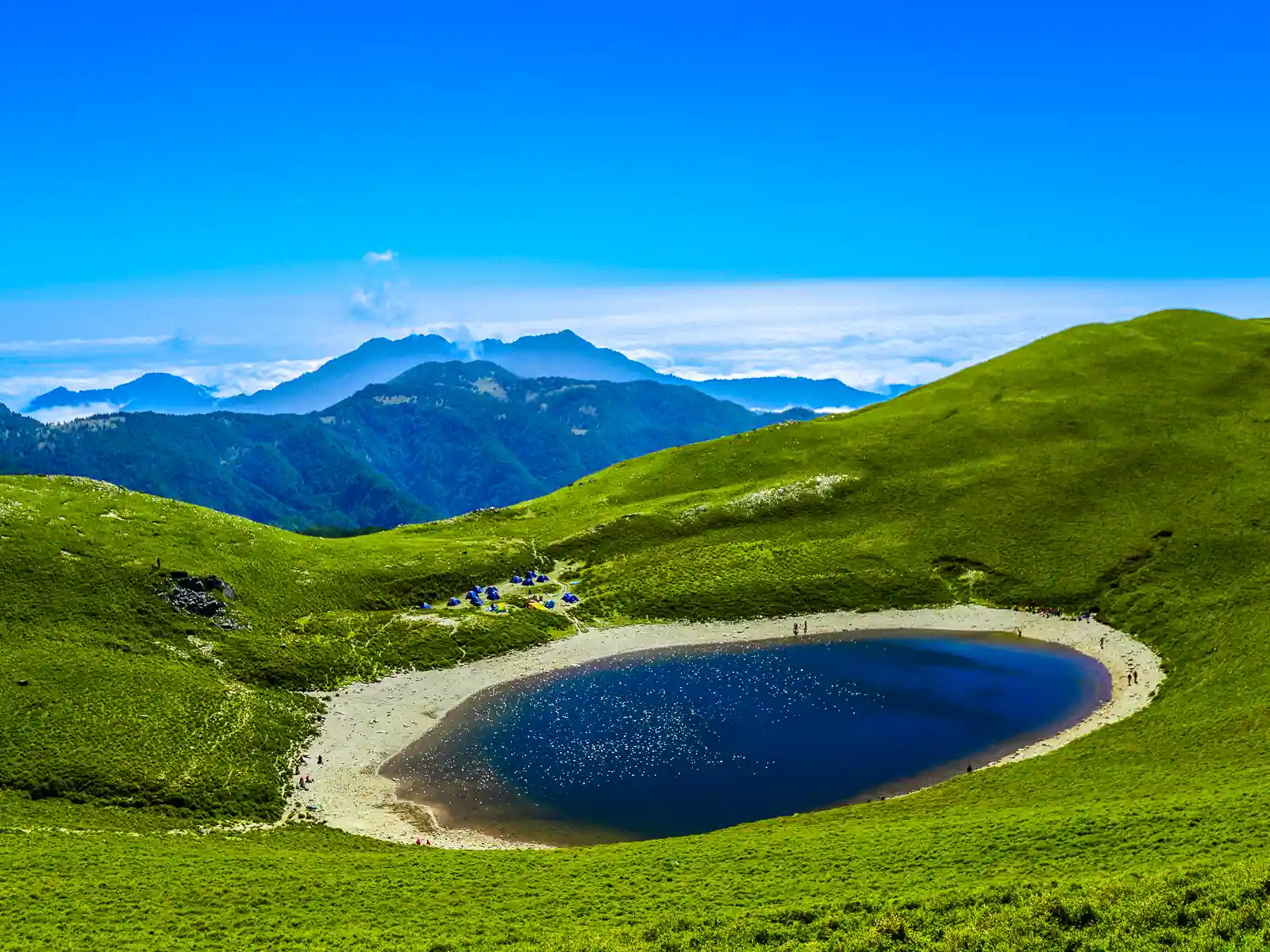
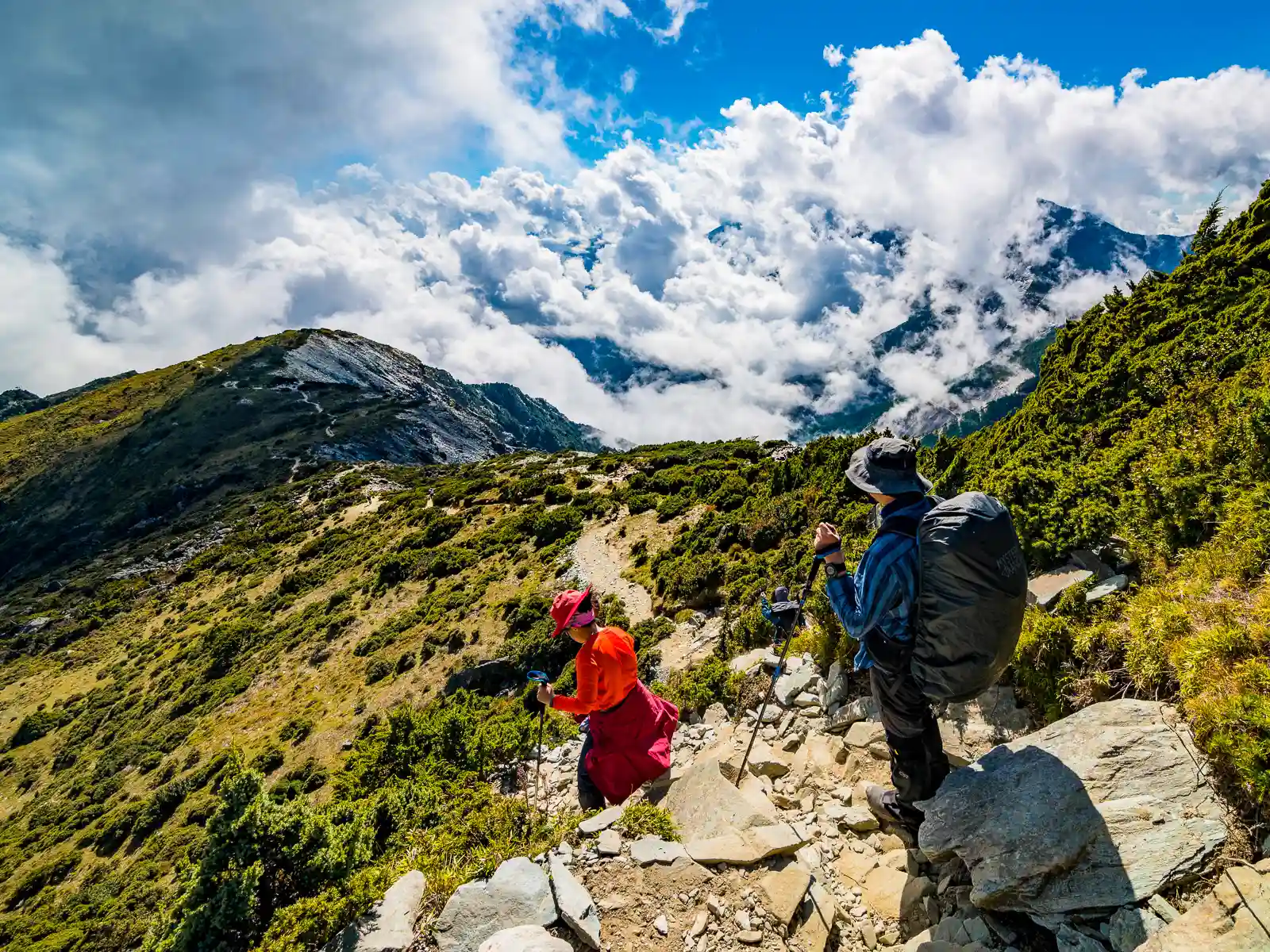
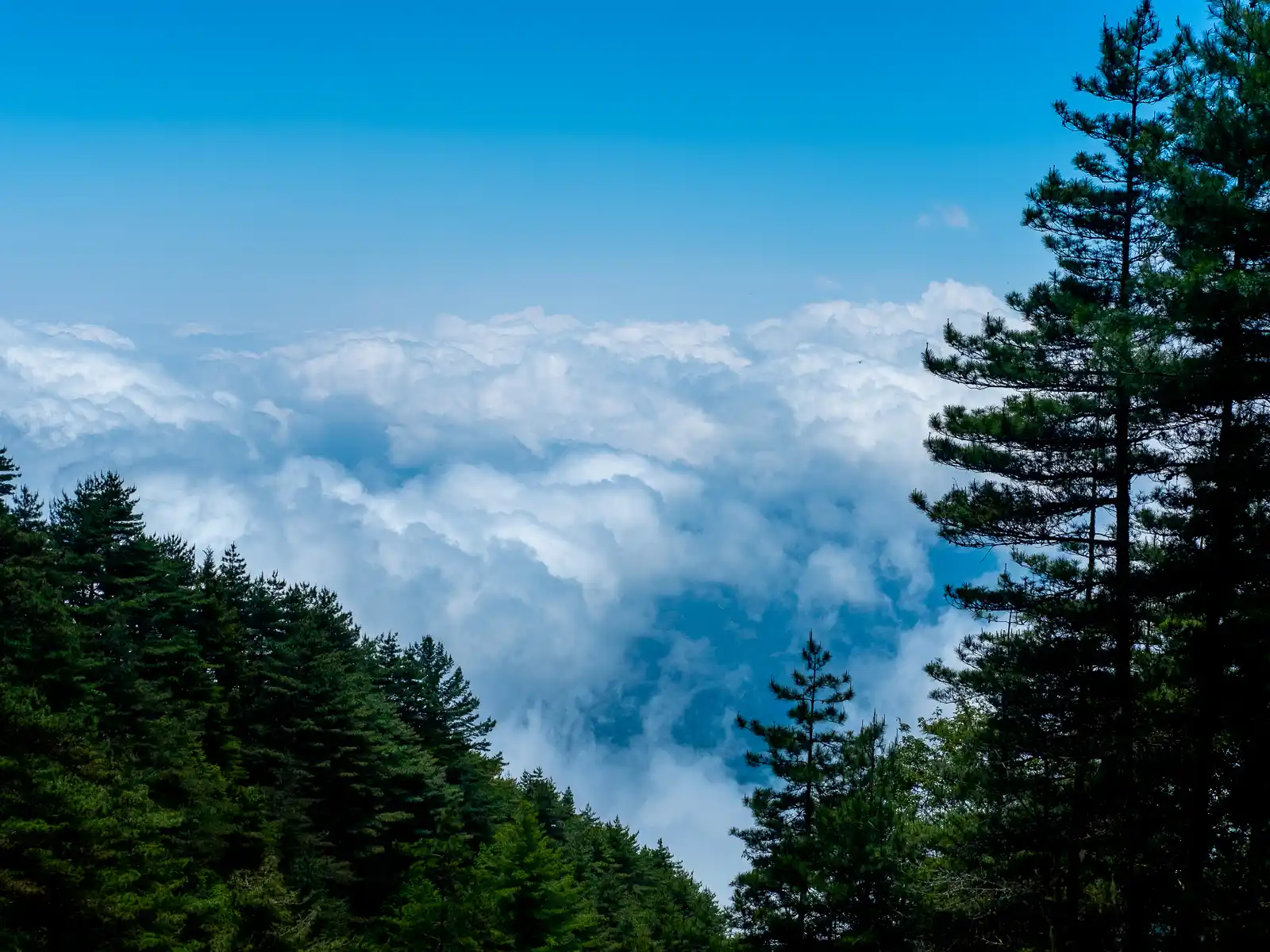
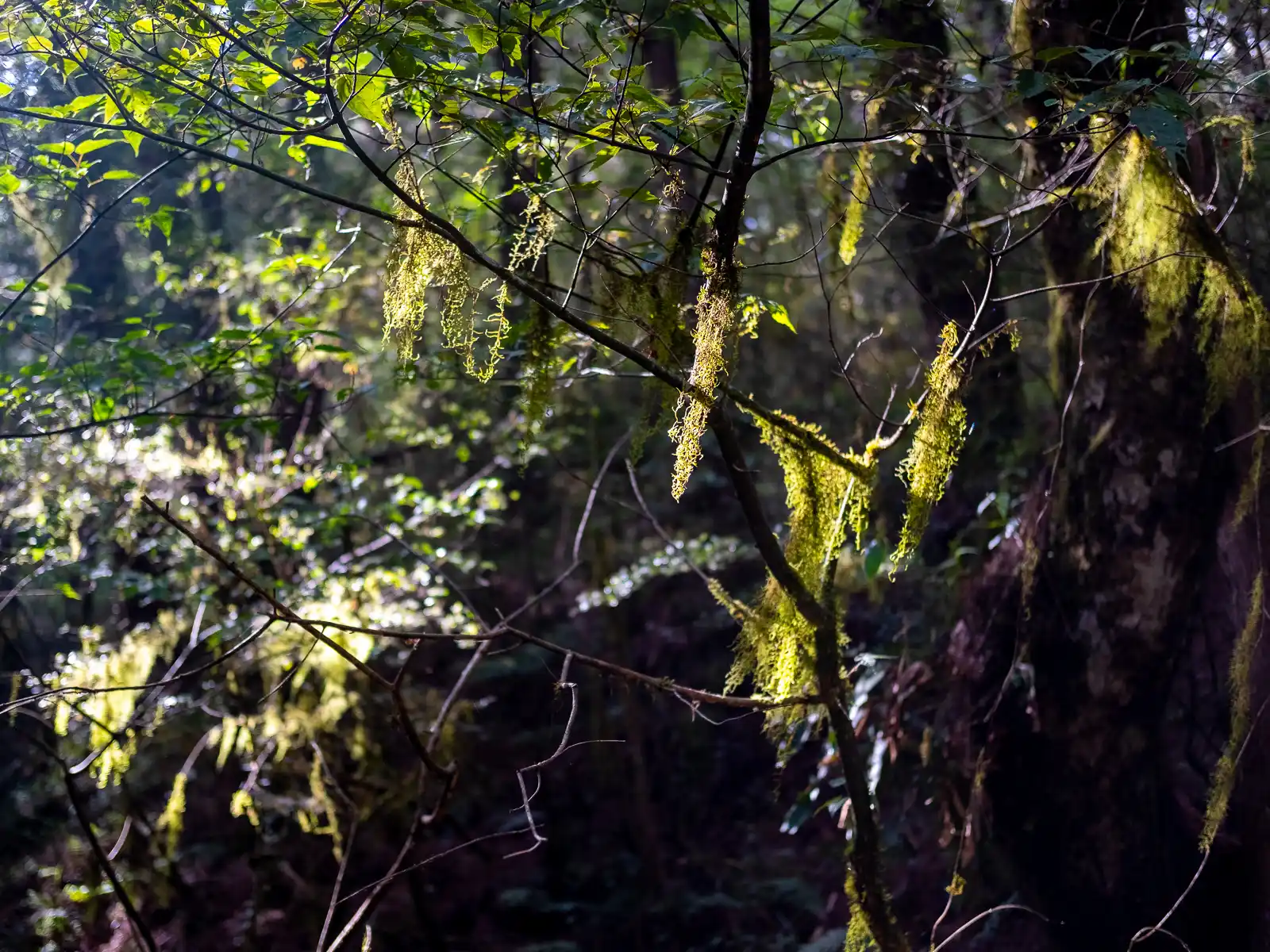
The Jiaming Lake National Trail, one of Taiwan’s most popular mountaineering trails, takes hikers to Taiwan’s most beautiful alpine lake, Jiaming Lake. Known as the “Angel’s Tear” for its elusive beauty and clear blue water, the lake is surrounded by alpine grasslands and is often situated above a sea of clouds.
The 26-kilometer-long trail begins at an elevation of 2,320 meters above sea level and travels through the Guanshan Major Wildlife Habitat, which features plentiful wildlife including some of Taiwan’s largest herbivores: the cute Formosan sambar deer; as well as Taiwan’s official mascot: the reclusive Formosan black bear.
Along the way, the trail climbs over two of the 100 Peaks of Taiwan: Xiangyang Mountain and Sancha Mountain, before reaching Jiaming Lake. (The “100 Peaks of Taiwan”, known locally as the “Baiyue”, refers to a list of the tallest peaks in Taiwan compiled by the now-defunct Taiwan Alpine Association.)
The trailhead is located at the Siangyang (Xiangyang) National Forest Recreation Area on the Southern Cross Island Highway, about a 2-hour drive from Chishang.
Guided tours are recommended for those wishing to visit Jiaming Lake, as permits need to be applied for months in advance, and, as is true of all of Taiwan’s mountaineering routes, the trek itself can be deceivingly treacherous in poor weather.
Wuling Green Tunnel
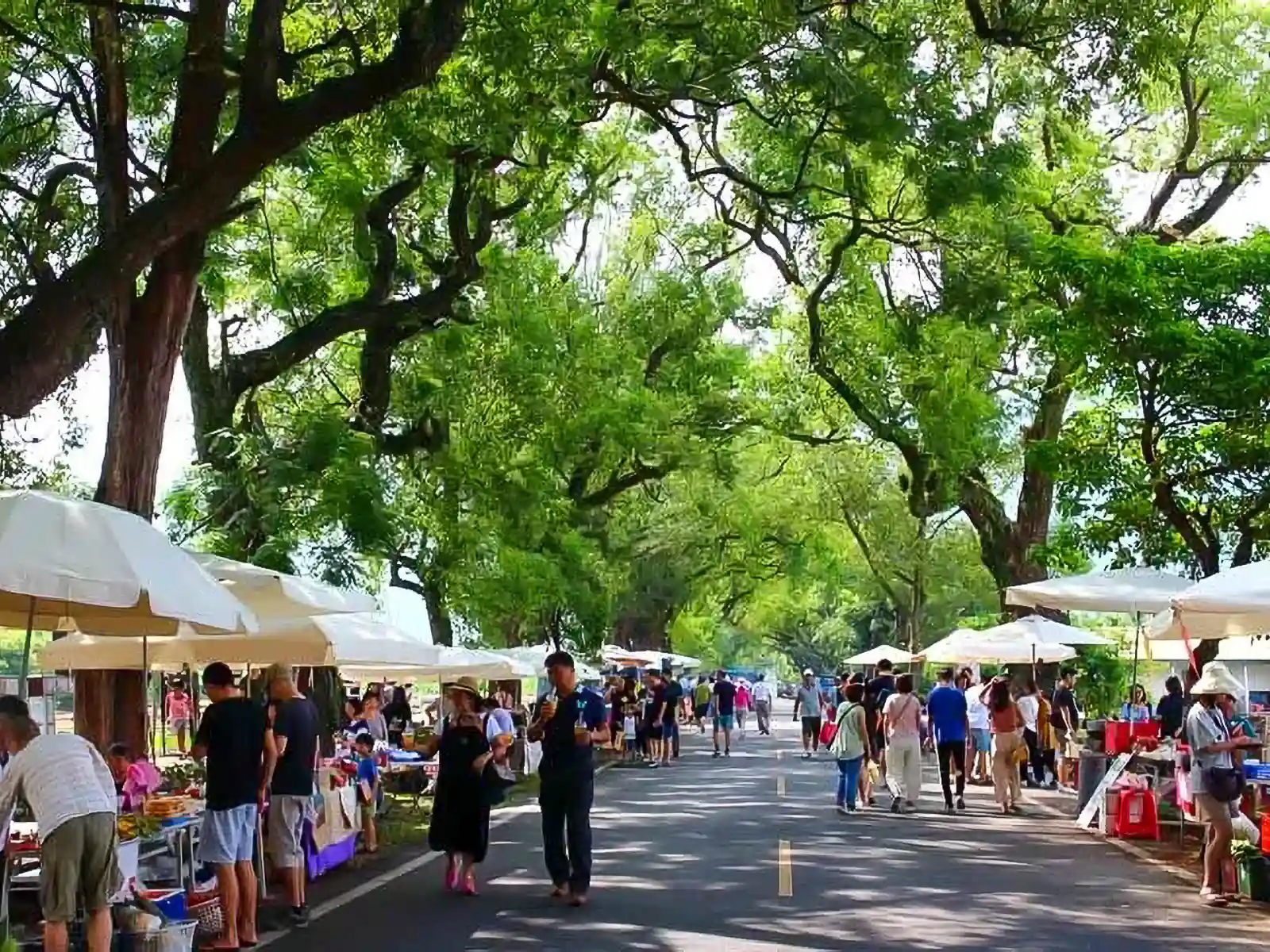
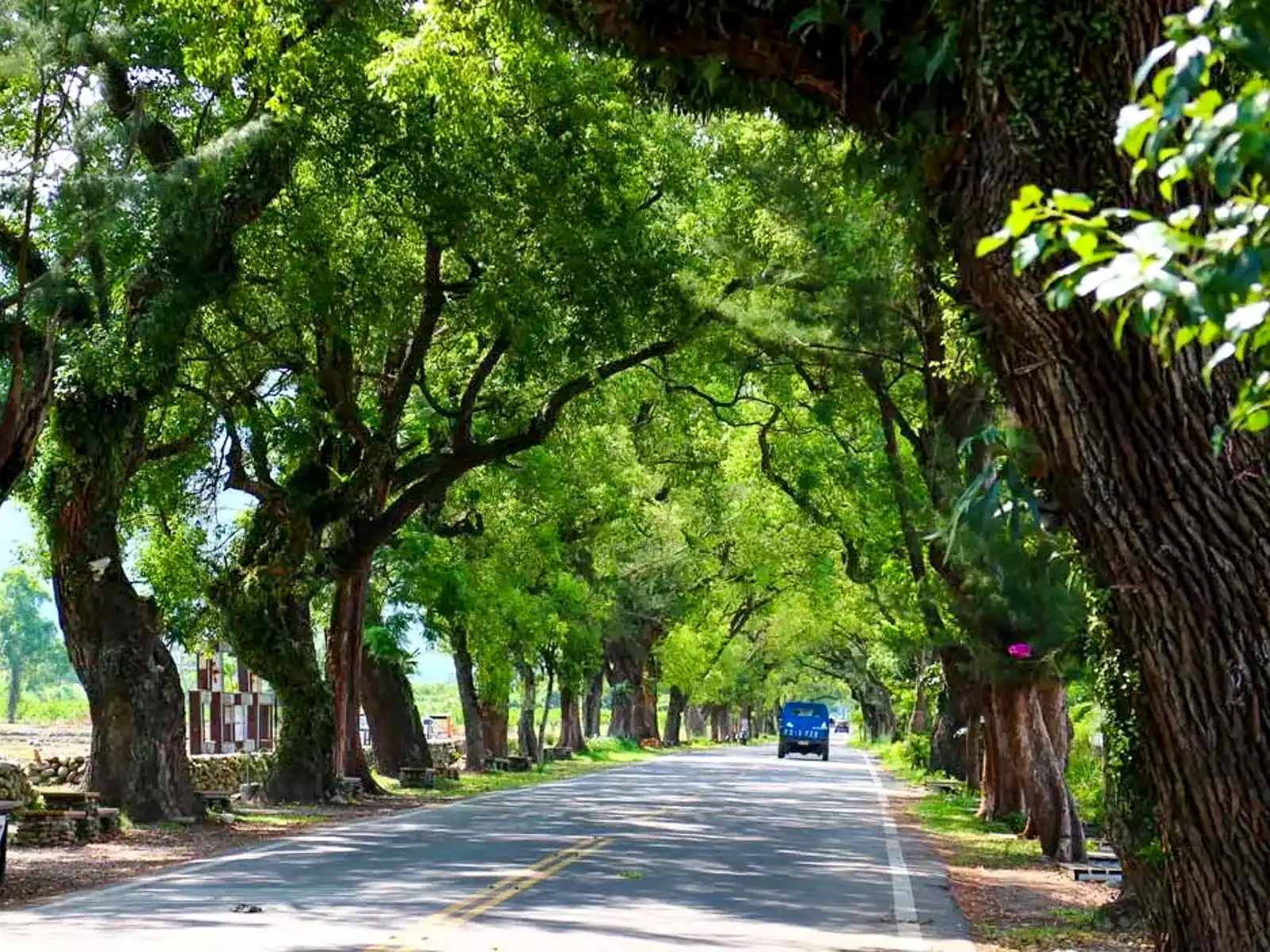
The Wuling Green Tunnel is a scenic stretch of country road, approximately 4.5 kilometers long, that runs from Provincial Highway 9 to the small town of Wuling. The road is famous for its relaxing and picturesque canopy composed of camphor, beefwood, and other trees that extends over its two lanes.
With its cool breezes and dappled sunlight, the tunnel not only offers a refreshing escape from the urban hustle, but also serves as a rest stop for those traveling between Hualien and Taitung.
Every other Saturday, a local market showcasing a variety of local agricultural products, snacks, and creative handicrafts, is held on this stretch of road, making it an excellent destination for those who want to see a local Taiwanese crafts market.
Longtian Green Tunnel
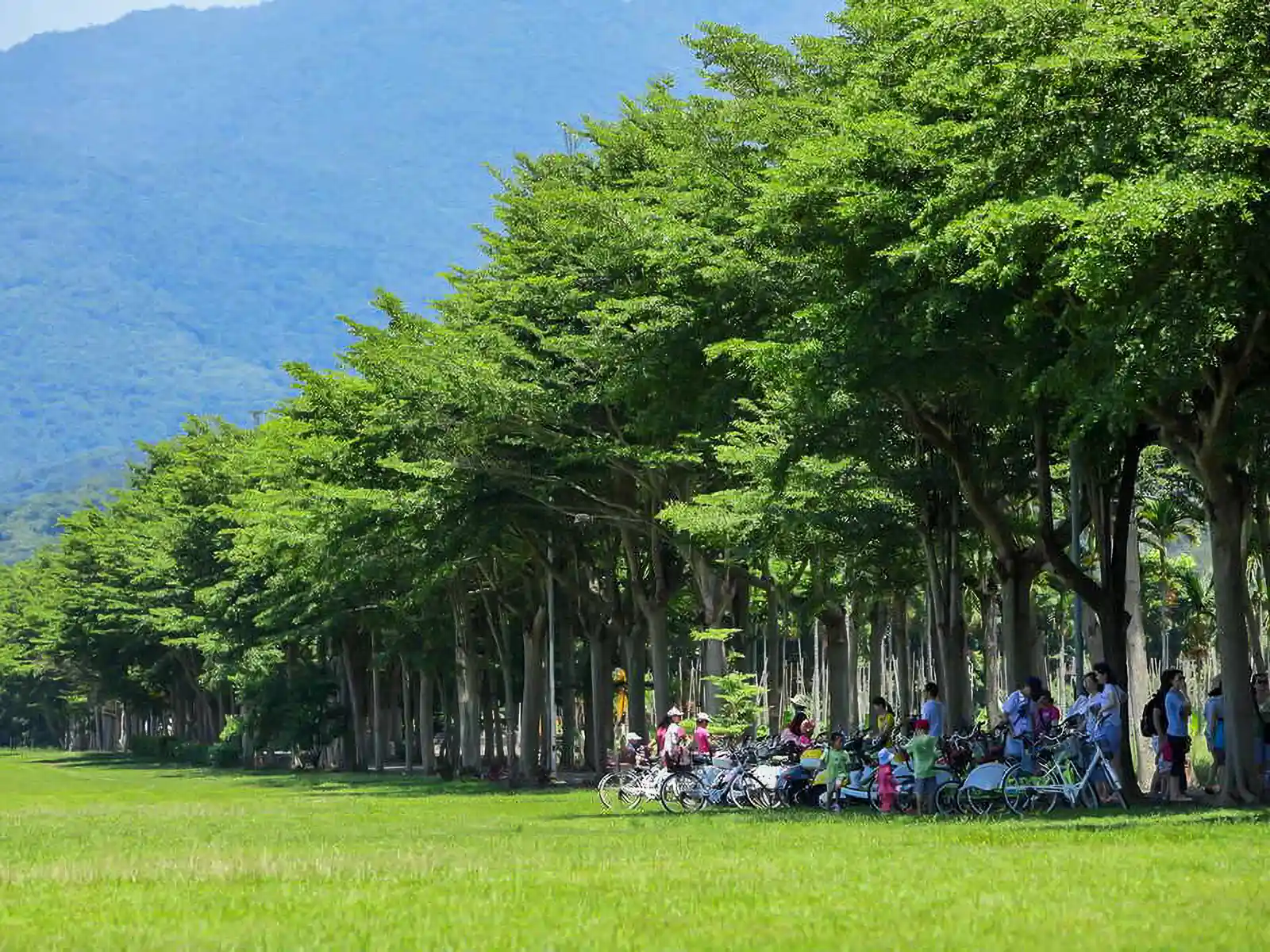
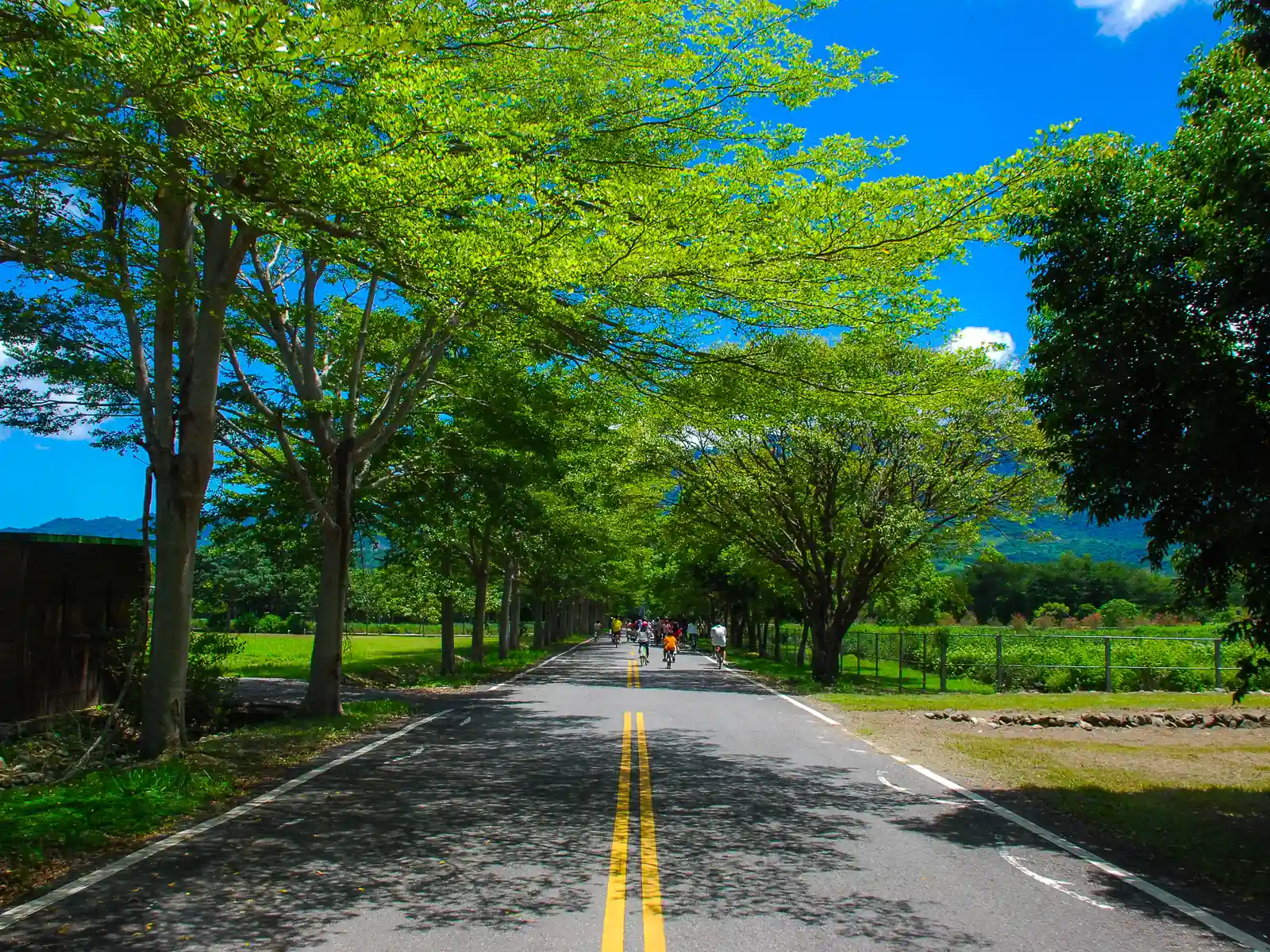
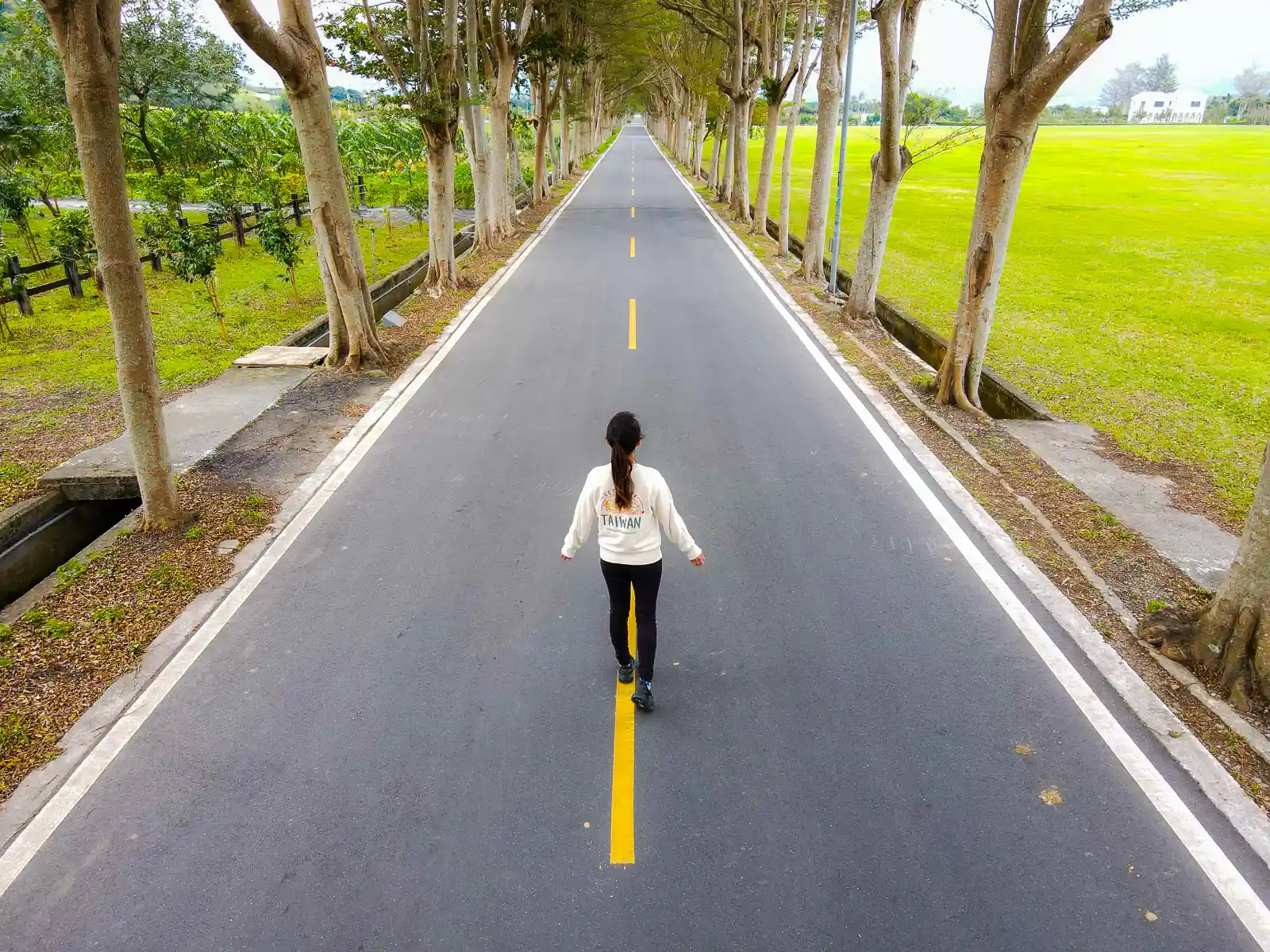
The Longtian Green Tunnel is a 1.2-kilometer-long segment of the longer 7.2-kilometer Longtian Bicycle Trail that runs from Luye Railroad Station to Bunun Tribal Leisure Village and passes through the agricultural sector of Longtian Village.
A standout for its beautiful Madagascar almond trees and relaxing surroundings, which include green meadows and tea fields, it’s easy to see why this secluded spot is a favorite of local tourists. This section of road has very little automobile traffic and is perfect for taking a walk, enjoying the idyllic surroundings, or touring as part of a longer bicycle route.
Just nearby, the Longtian Grand Meadow (also called the Longtian Grass Field) is a landing spot for paragliders. Furthermore, don’t be surprised if at any time you are surrounded by a group of butterflies — the village of Longtian carries the name “hometown of butterflies” for the large local population.
Luye Township
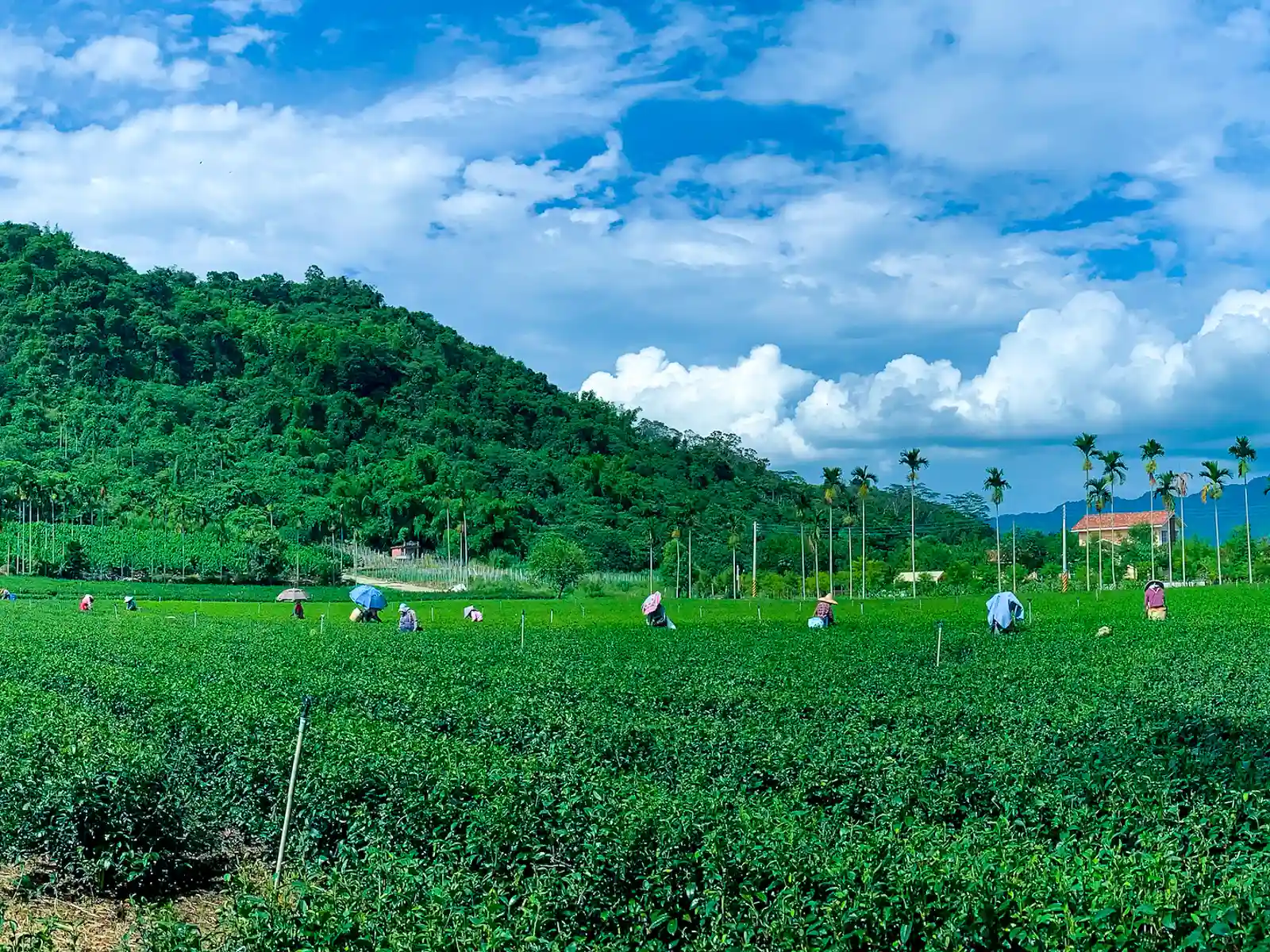
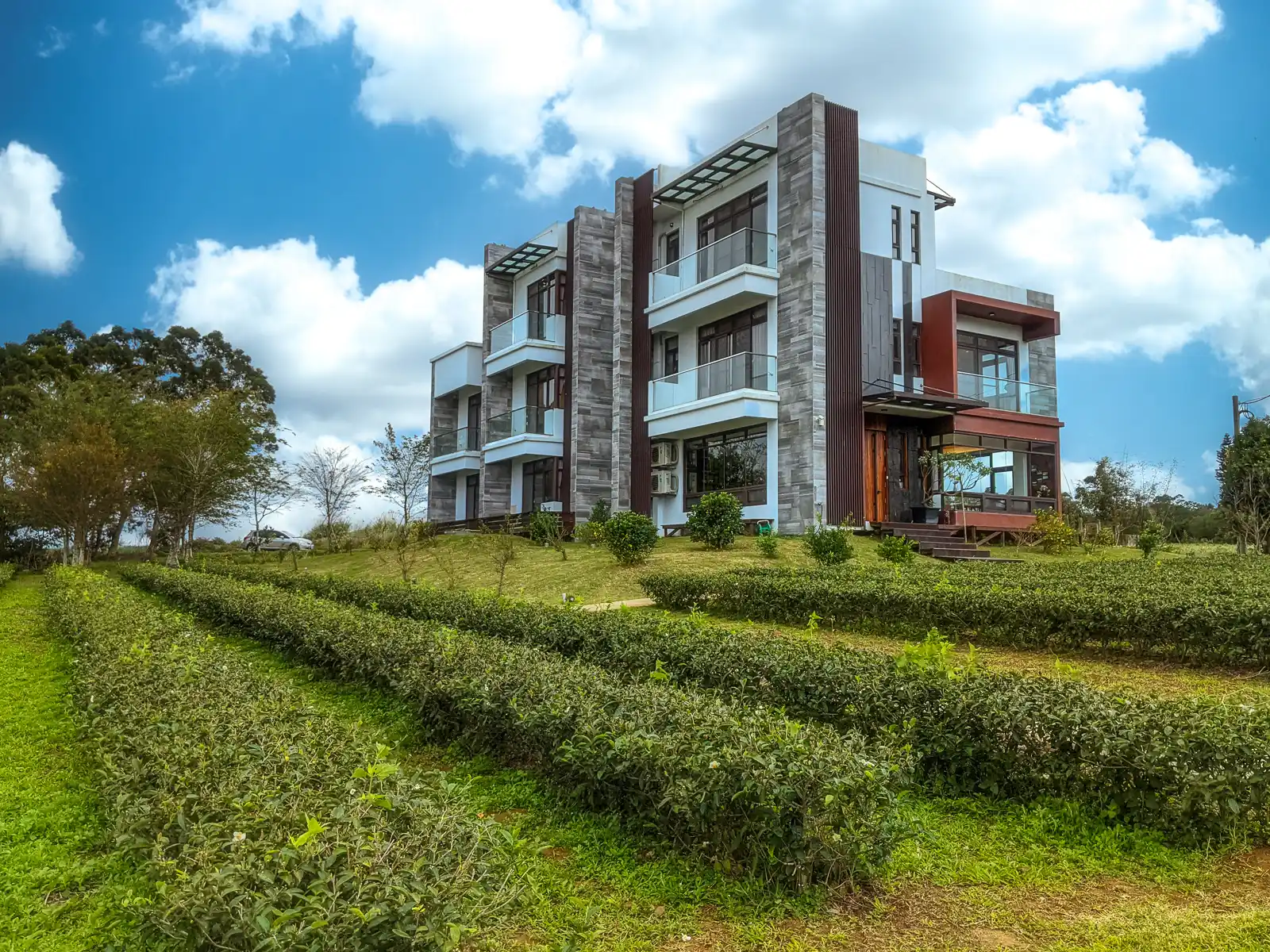
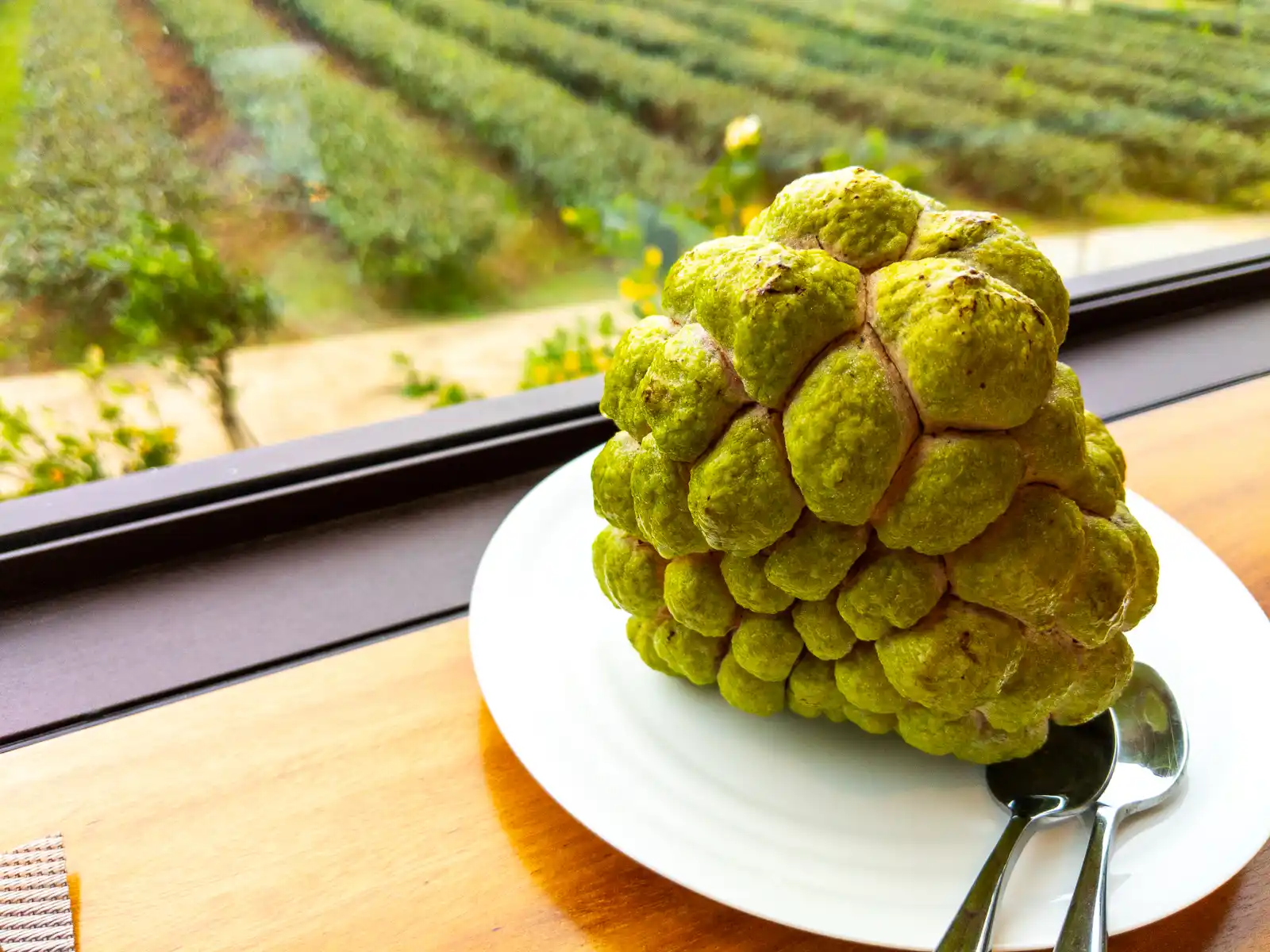
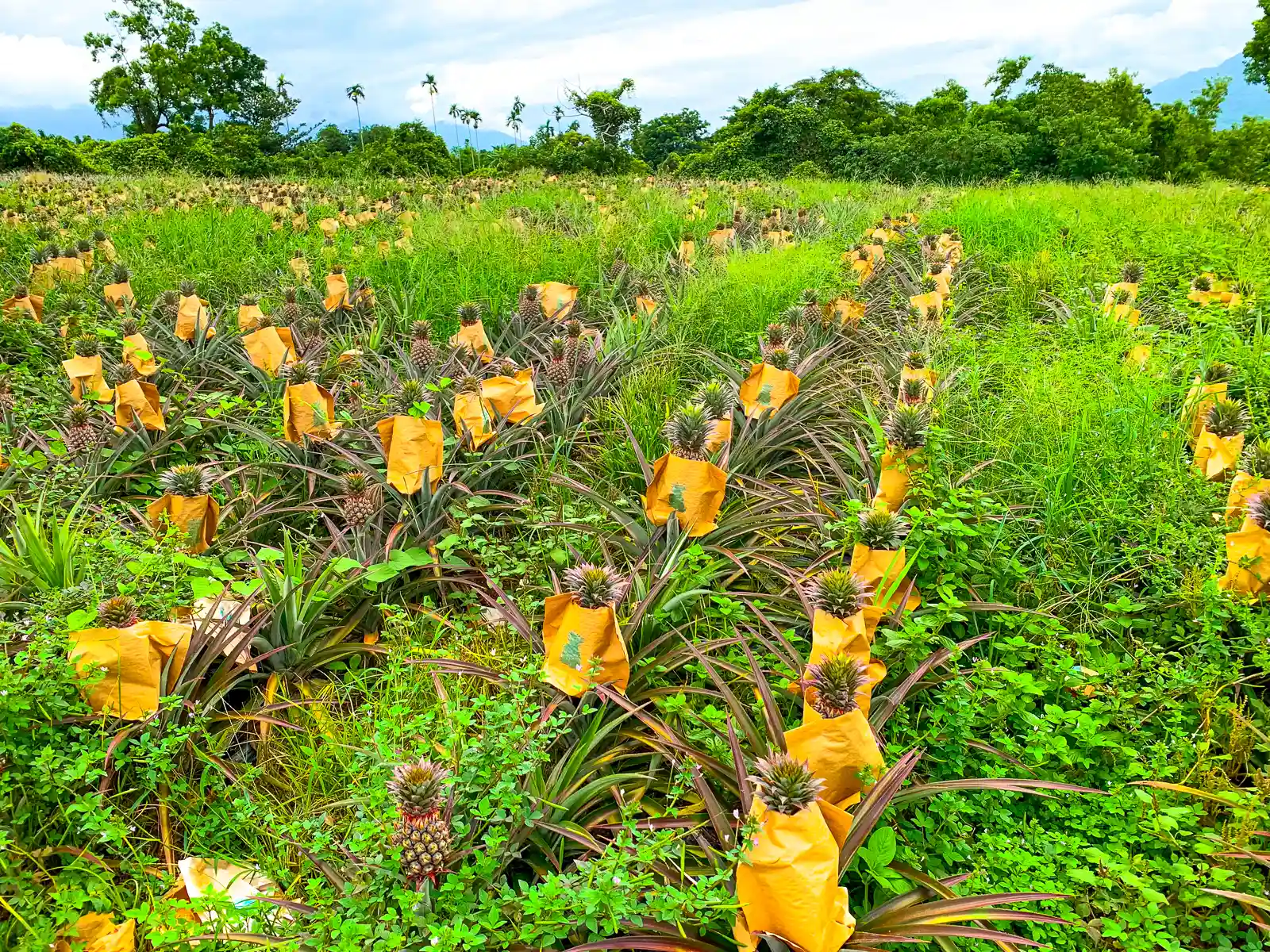

Luye is a charming village located between the rice fields of Chishang and downtown Taitung City. Known for its hilly landscapes, tea production, and agricultural richness, the town offers tranquility and a respite from city life.
Luye’s extensive tea plantations, renowned for producing high-quality tea, are quite tourist friendly. Most local farms have tasting areas where guests can spend time learning about and understanding the unique qualities of local tea. Exploring tea fields, learning about the tea-making process, and engaging in tea-related DIY activities are also possible experiences.
The town’s second claim to fame is its abundance of fruit farms. A favorable climate and fertile soil create ideal conditions for cultivating sweet and juicy fruit such as pineapples, which are a must-try for anyone visiting the area.
Beyond its agricultural offerings, Luye is also a destination for a range of outdoor activities such as hot air ballooning, paragliding and hiking.
Luye Highlands & Taiwan International Balloon Festival
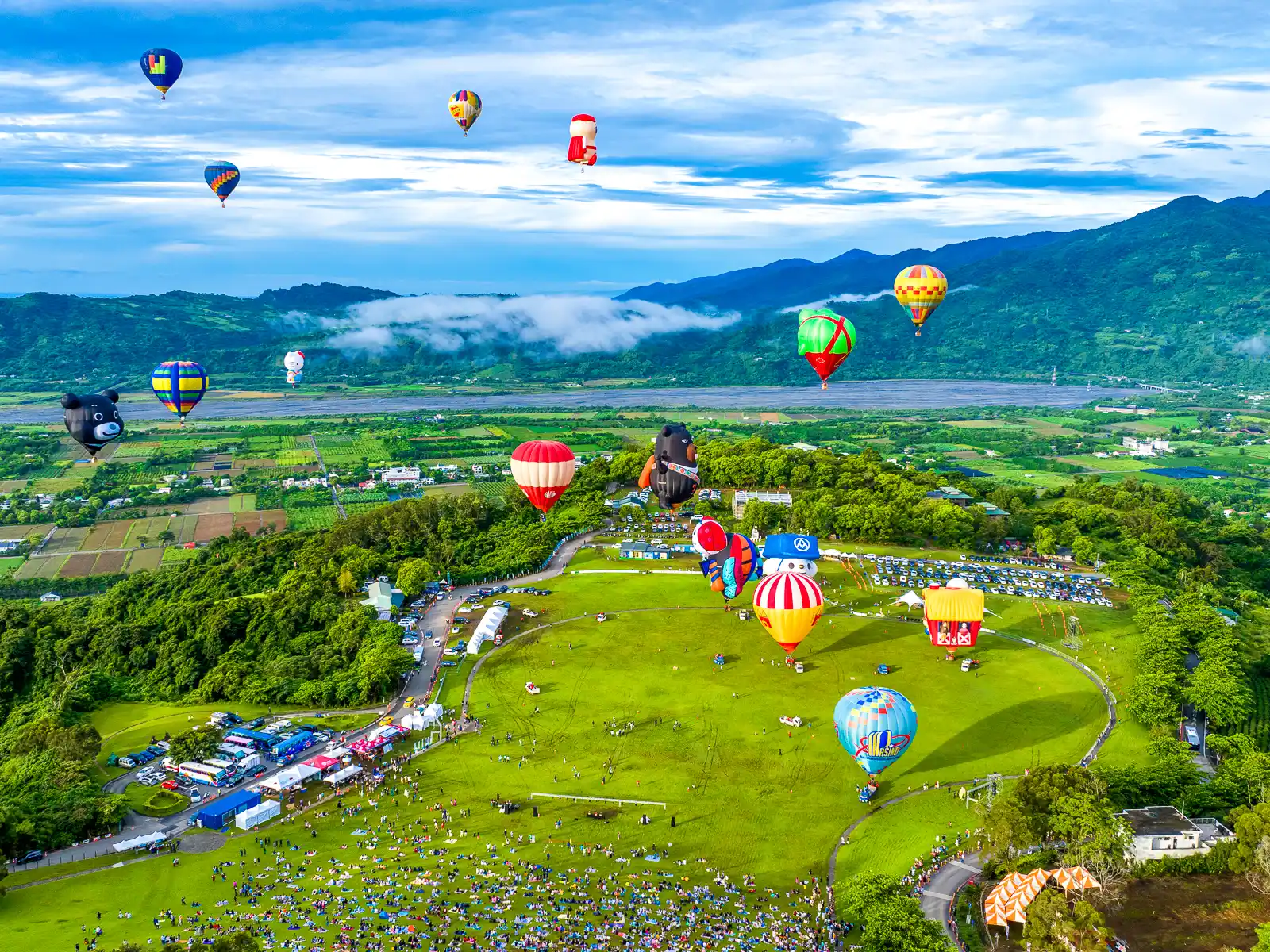
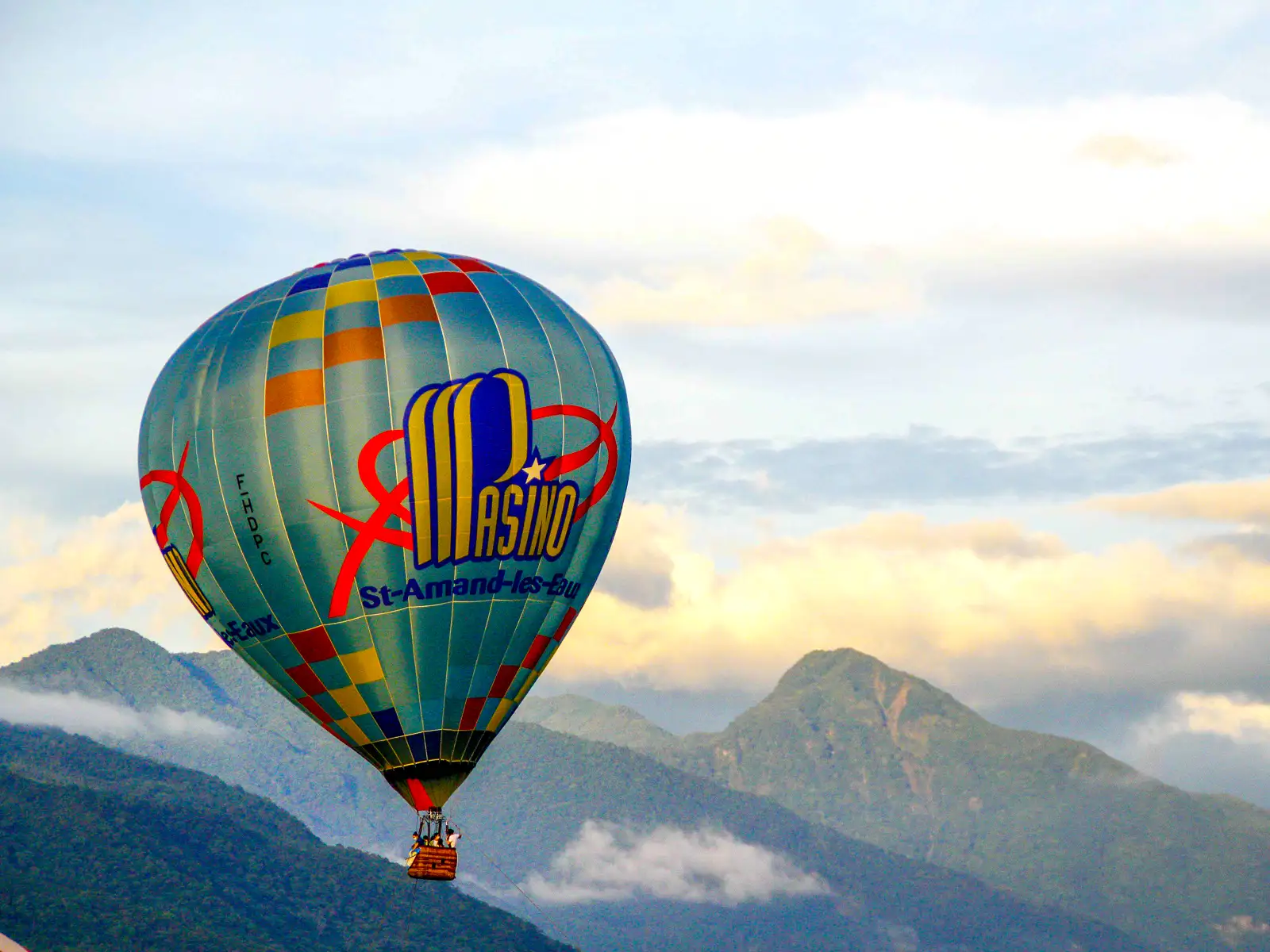
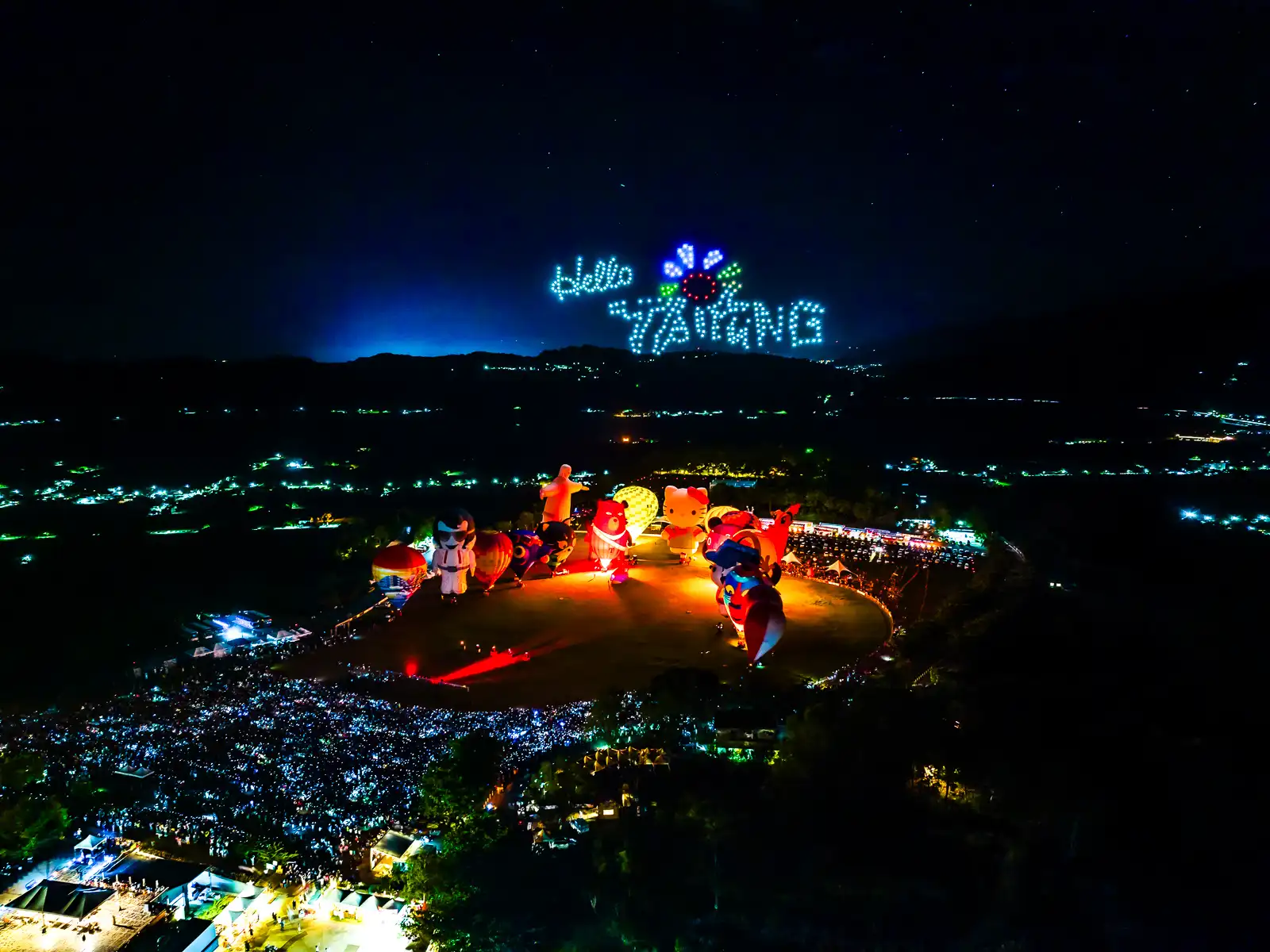
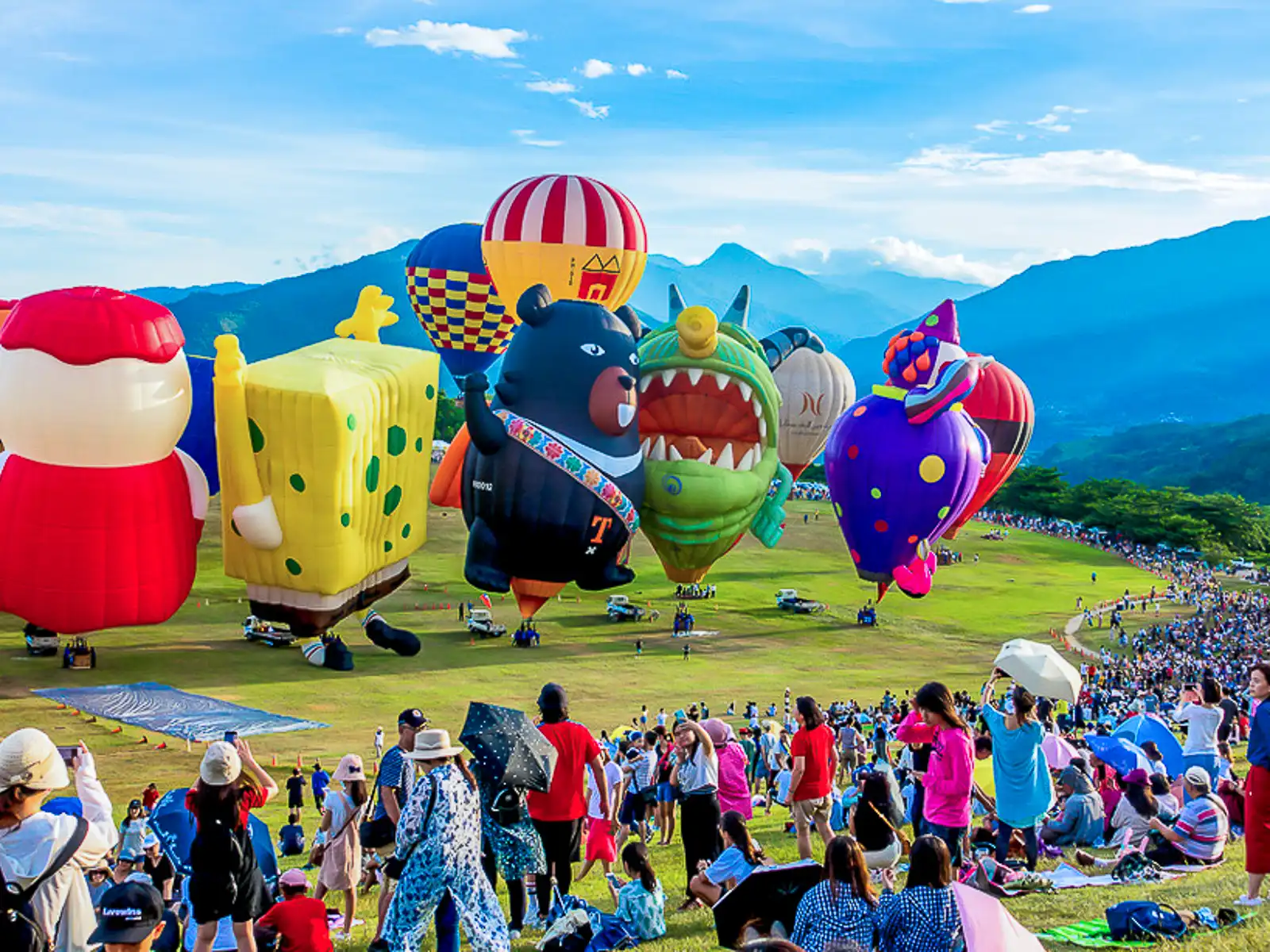
The annual Taiwan International Balloon Festival, which takes place in the Luye Highlands, is one of the summer’s most anticipated events. Between July and mid-August of each year, the festival features light shows, balloon rides, and a rotating array of unique-shaped and creatively themed balloons.
Observe hot air balloons taking off against the backdrop of the surrounding mountains, or hop in one and take a ride across the hilly landscape of Luye and the East Longitudinal Valley.
In the past, the festival’s themed balloons have featured the likes of: Mickey Mouse, SpongeBob SquarePants, Angry Birds, a massive rooster, the Taiwan Tourism Bear, Hello Kitty, and many more.
Named one of the “Top 12 Hot Air Balloon Festivals in the World” by the Travel Channel, the Taiwan International Balloon Festival is a unique event sure to delight flight enthusiasts and those traveling with children.
For more information including event schedule, traffic information and special announcements, visit the Taiwan International Balloon Festival official website.
Insider’s Tip: Be sure to plan to arrive early in the morning to witness the beauty of balloons taking flight at sunrise. There are also a limited number of tickets available for purchase on location each day.
The Taiwan International Balloon Festival can also be incorporated into a custom tour of Taiwan to make a memorable family vacation.
Ice Spring Luye 76
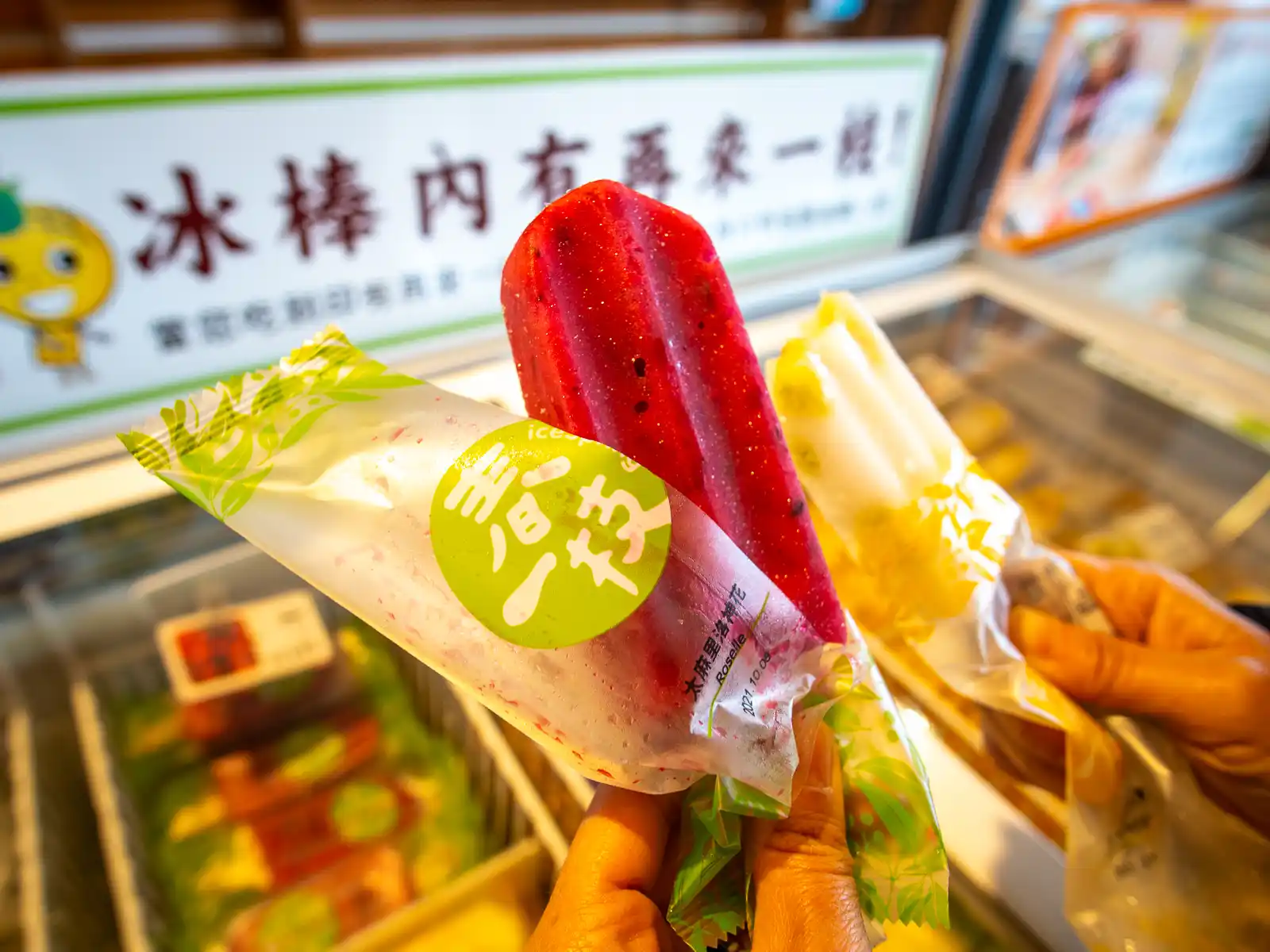
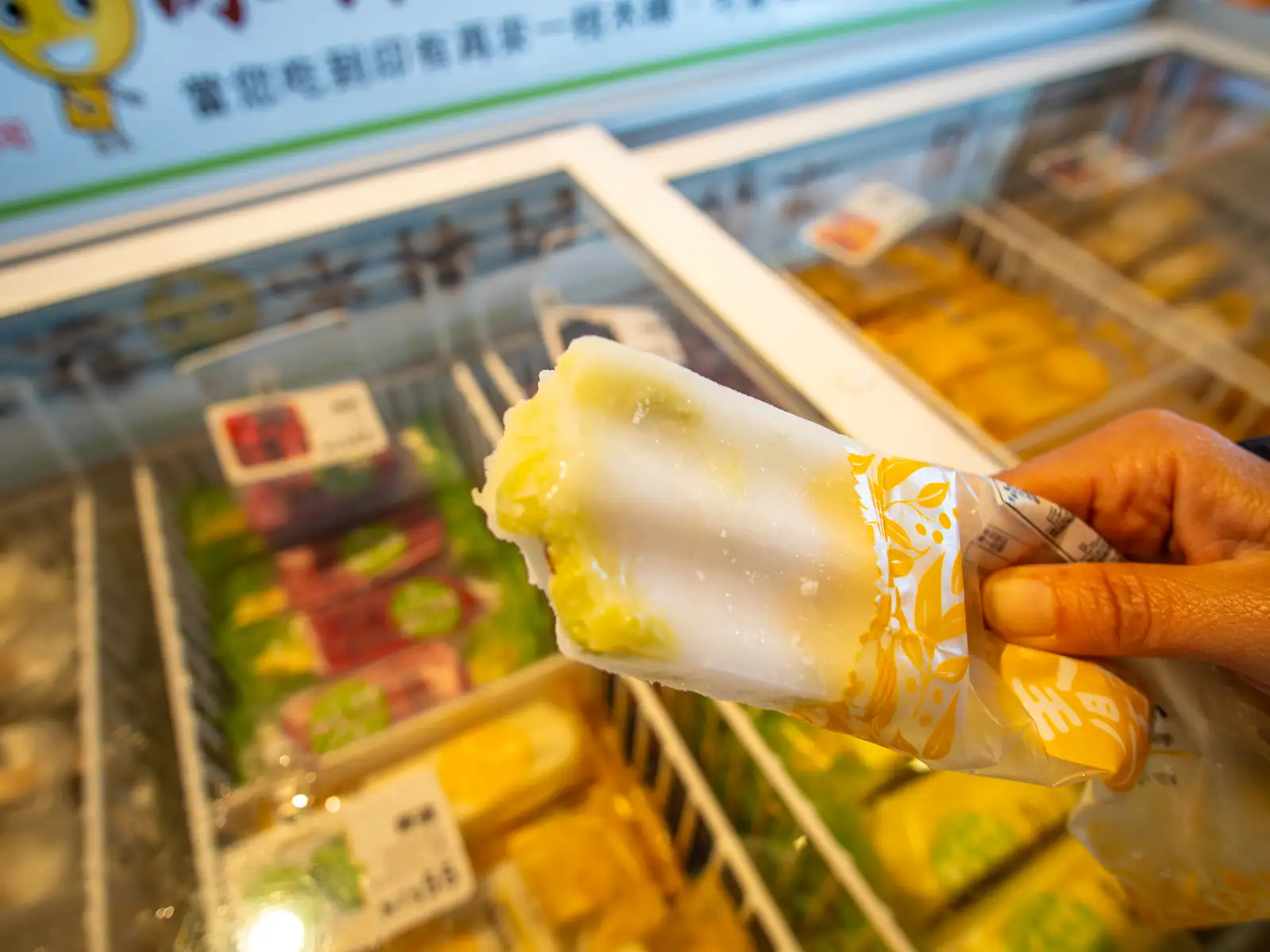
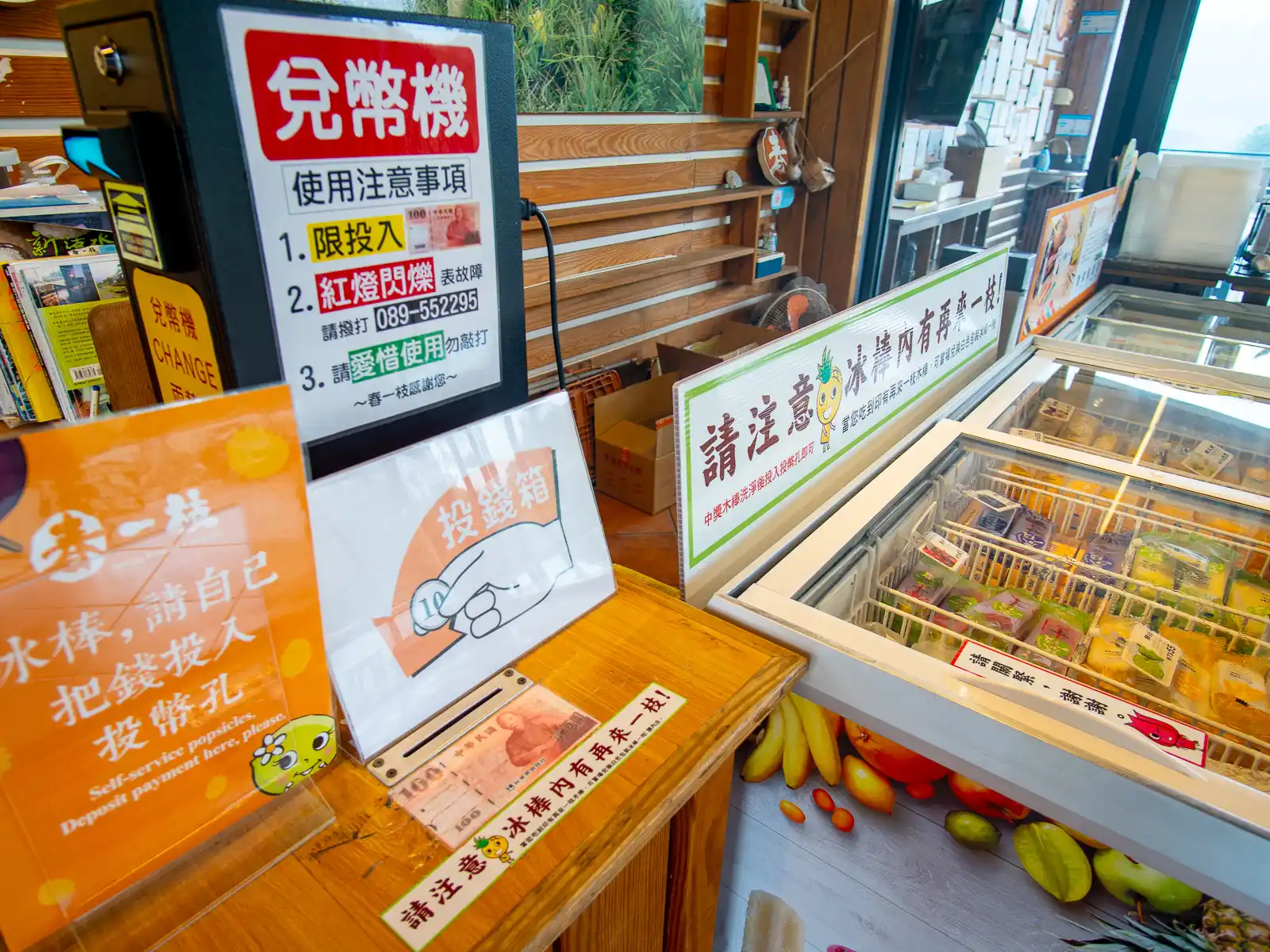
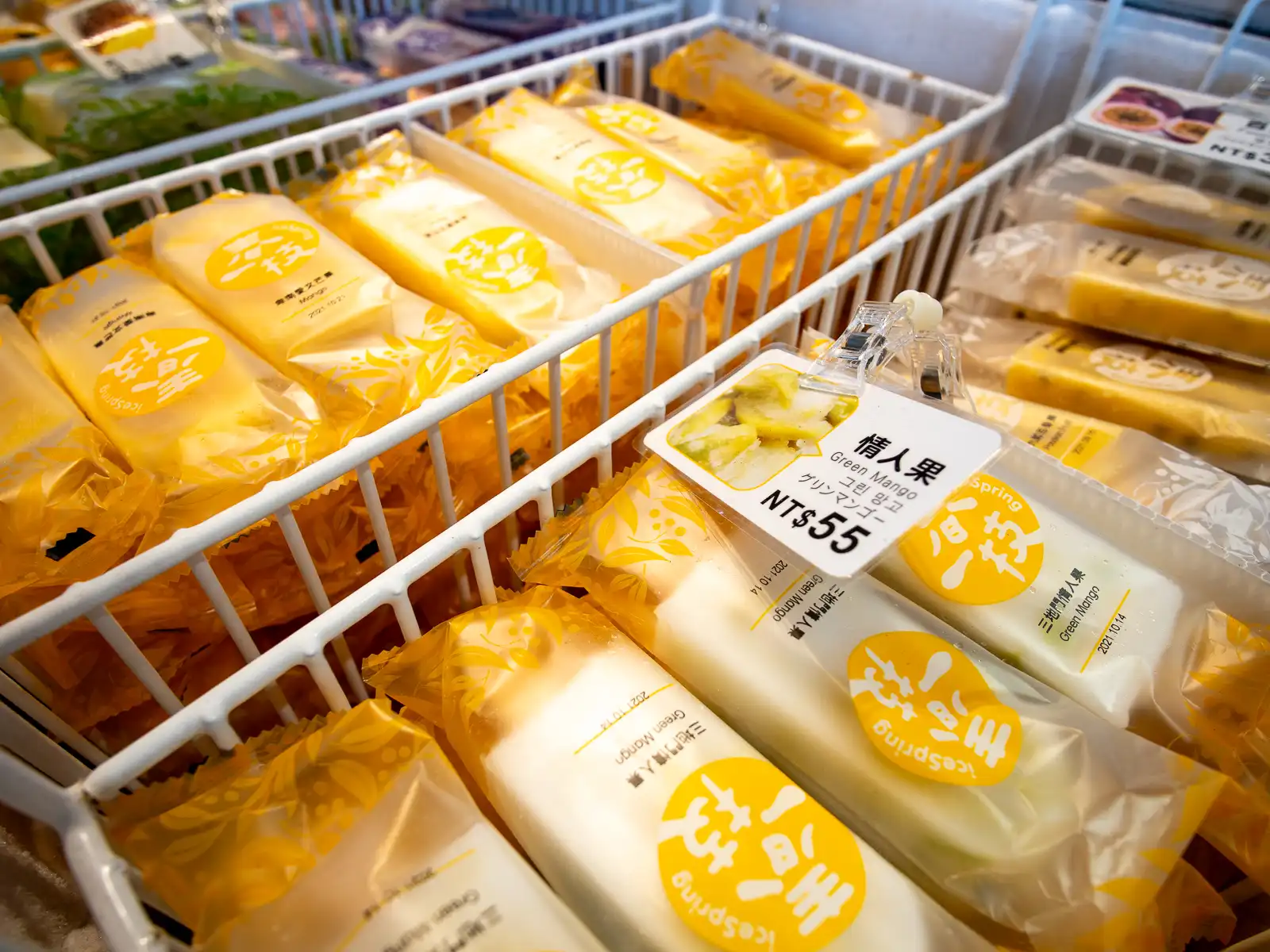
Ice Spring Luye 76 operates as a self-service ice pop shop, relying on the honor system. It commemorates the location where Minghuang Li, the company’s founder, settled upon moving to the East Longitudinal Valley. It was in this serene setting, amidst the dreamlike scenery of the valley, that Mr. Li was inspired to establish his social enterprise, the Ice Spring Ice Pop Company.
The primary goals of Ice Spring are to promote local agriculture and minimize food waste. Their delectable and refreshing ice pops are crafted from surplus fruit sourced from local farmers, and importantly, no preservatives, artificial flavors, or sugars are introduced during the production process.
While the company has come a long way since Mr. Li started experimenting with leftover fruit in 2007 (Ice Spring stores are now located all over Taiwan), this particular location marks the company’s humble beginnings.
Taitung Sugar Factory Cultural and Creative Park

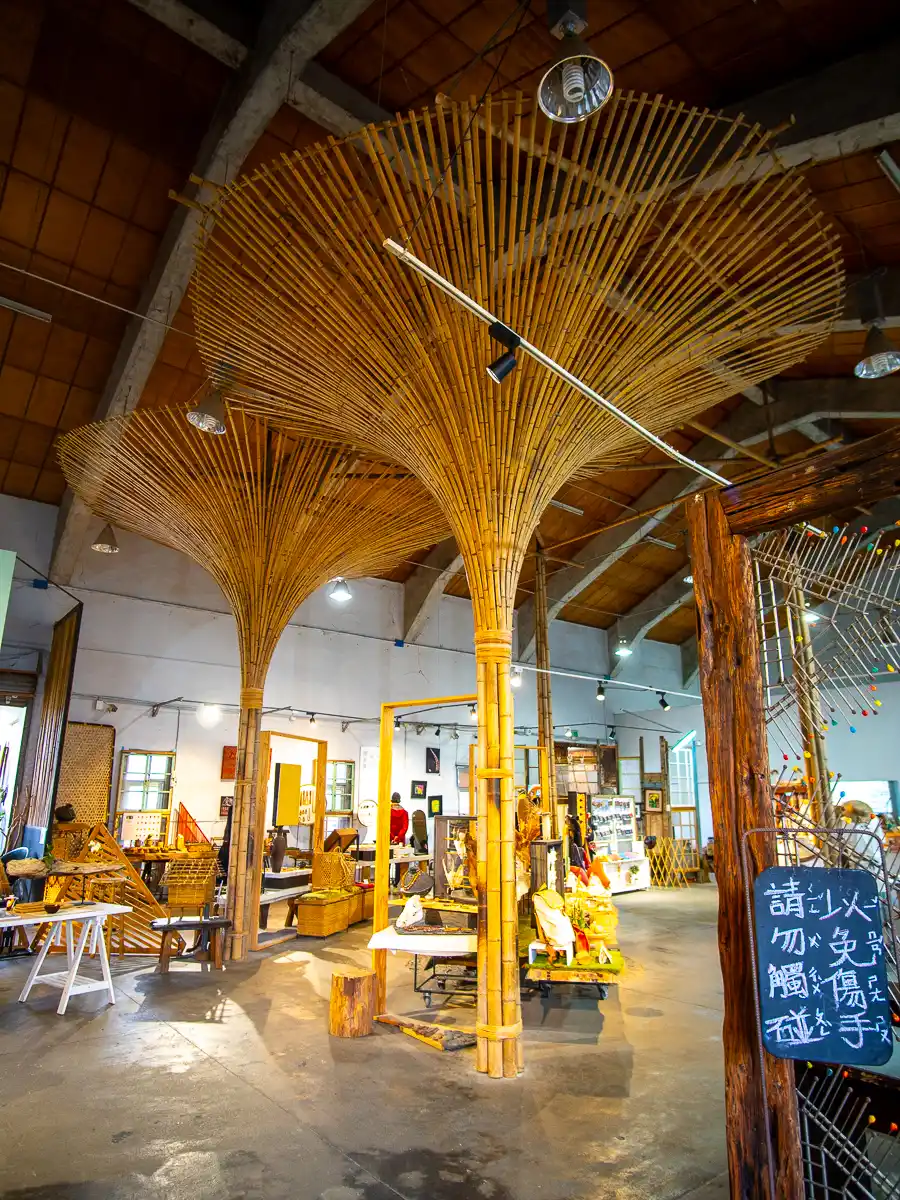
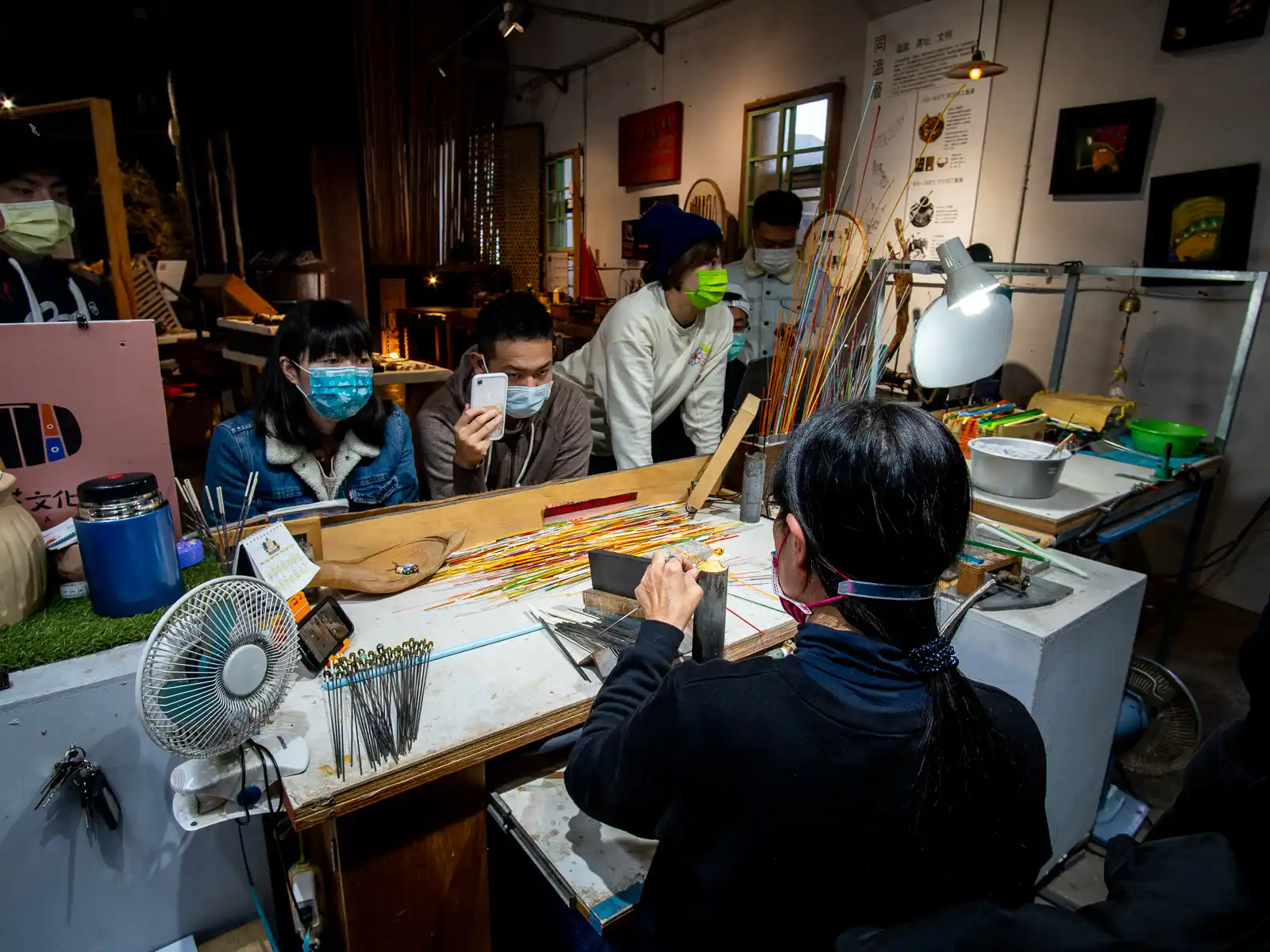
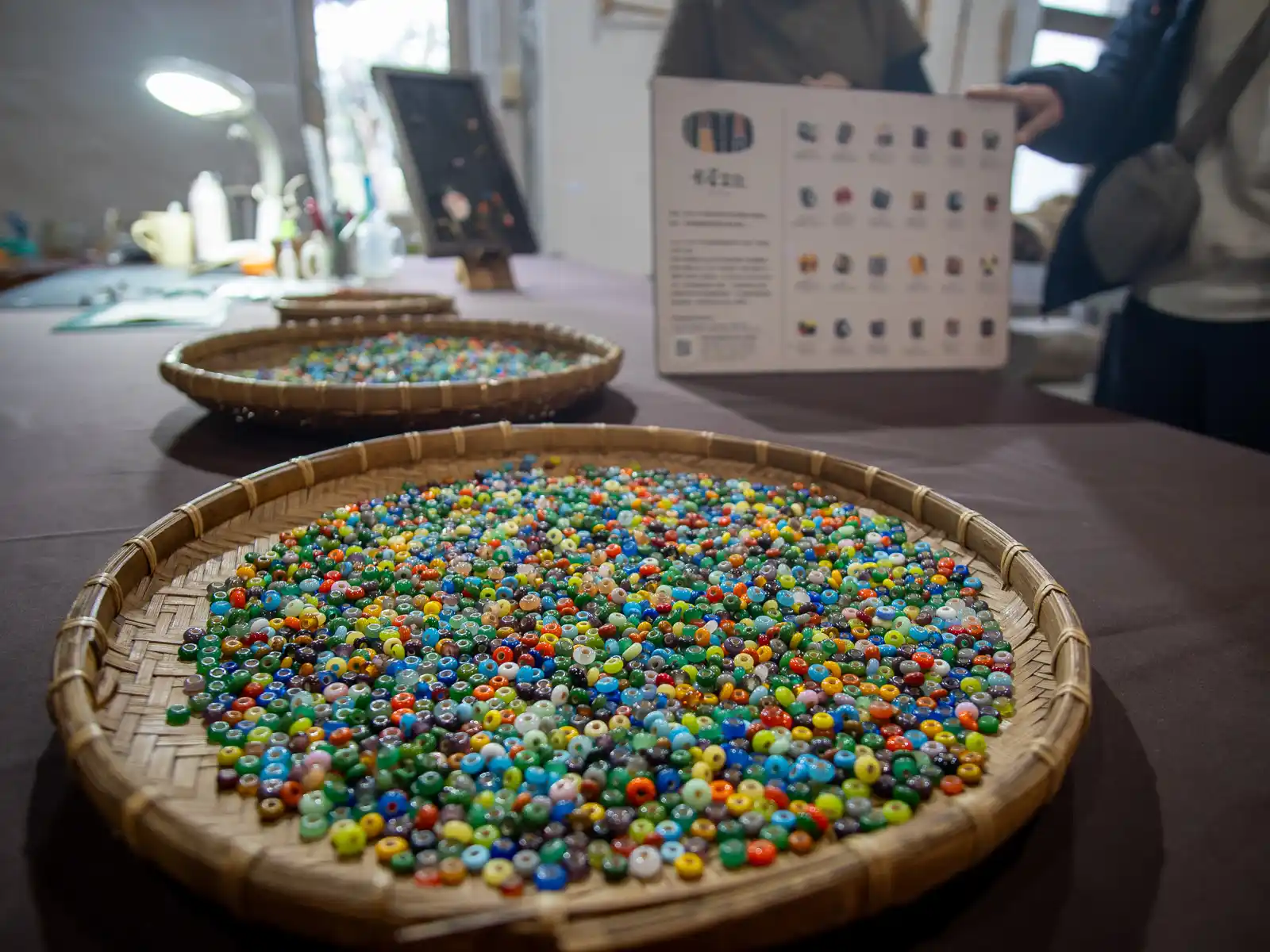
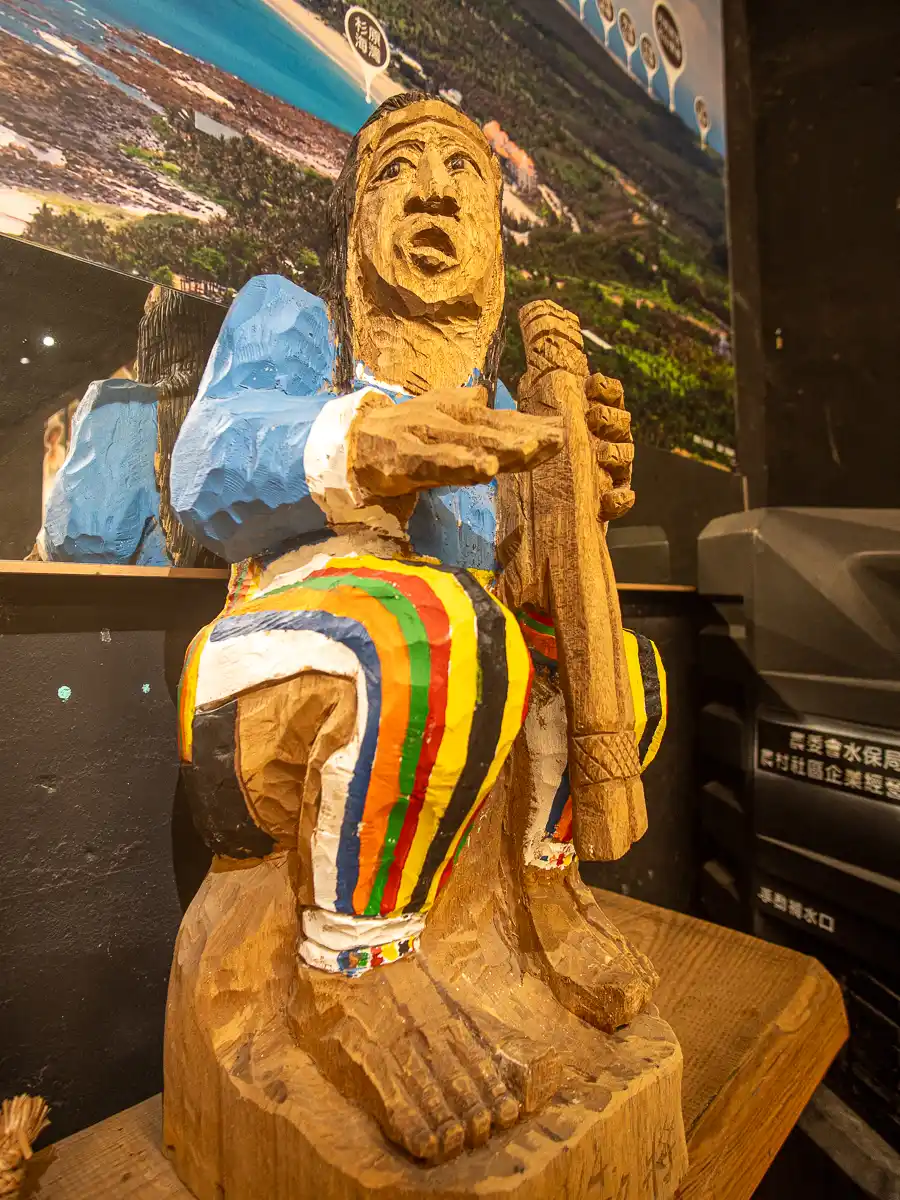
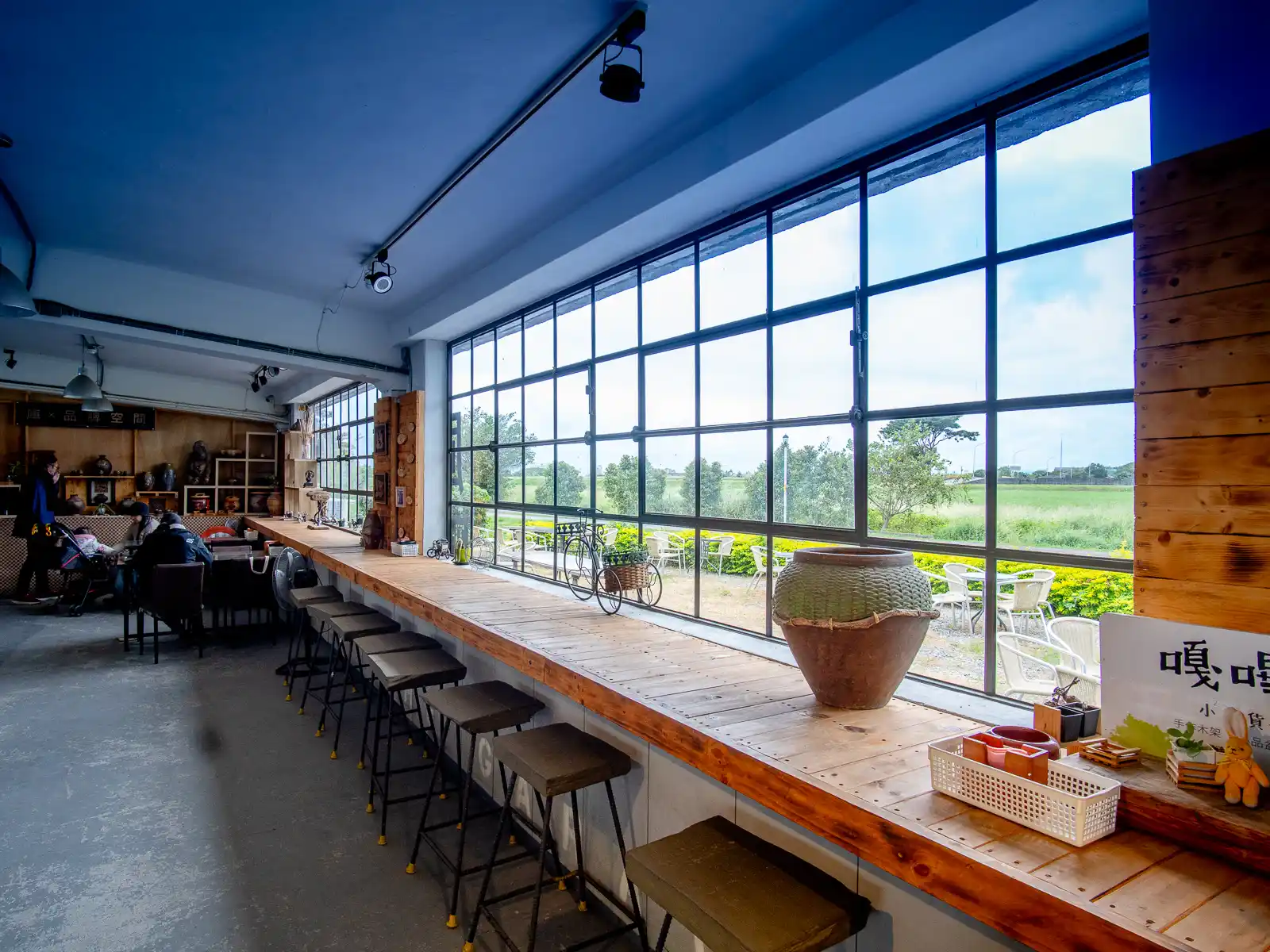
Established in 1913 and having operated until 1996, the Taitung Sugar Factory stands as Taitung County’s most significant industrial relic. Since being registered as a historical site in 2004, the location has been transformed into a local hub of culture known as the Taitung Sugar Factory Cultural and Creative Park.
The park has undergone numerous renovations, with former warehouses now housing trendy cafes, artist exhibitions, workshops, and crafts boutiques. Many of these exhibitions and workshops are dedicated to sharing local culture, making it a great stop for those who want to explore Taitung’s indigenous cultural heritage.
While you’re in the area, consider visiting the Taitung Sugar Corporation Super Market just across the street for its delicious home-made ice cream.
Taitung Railway Art Village
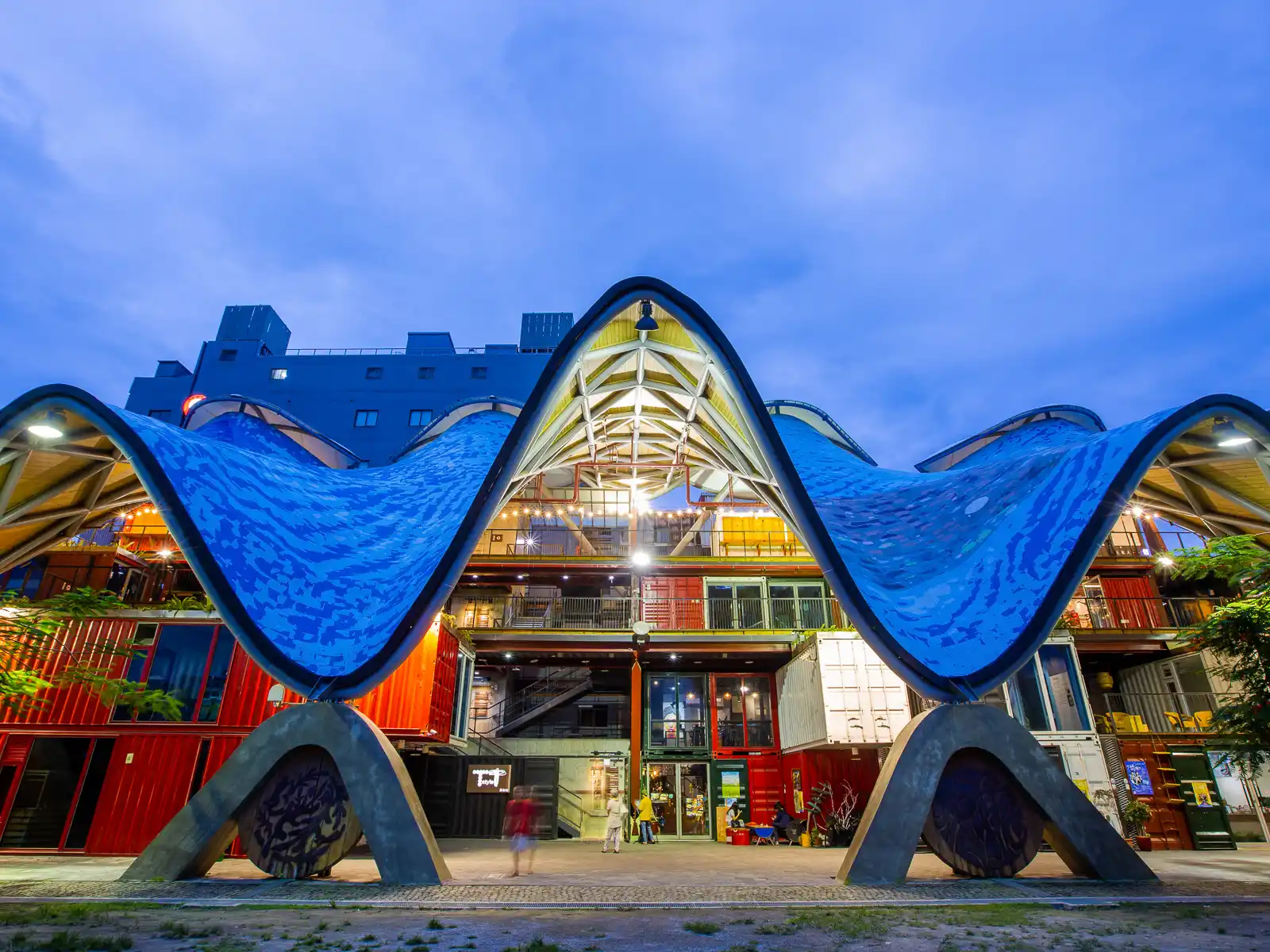
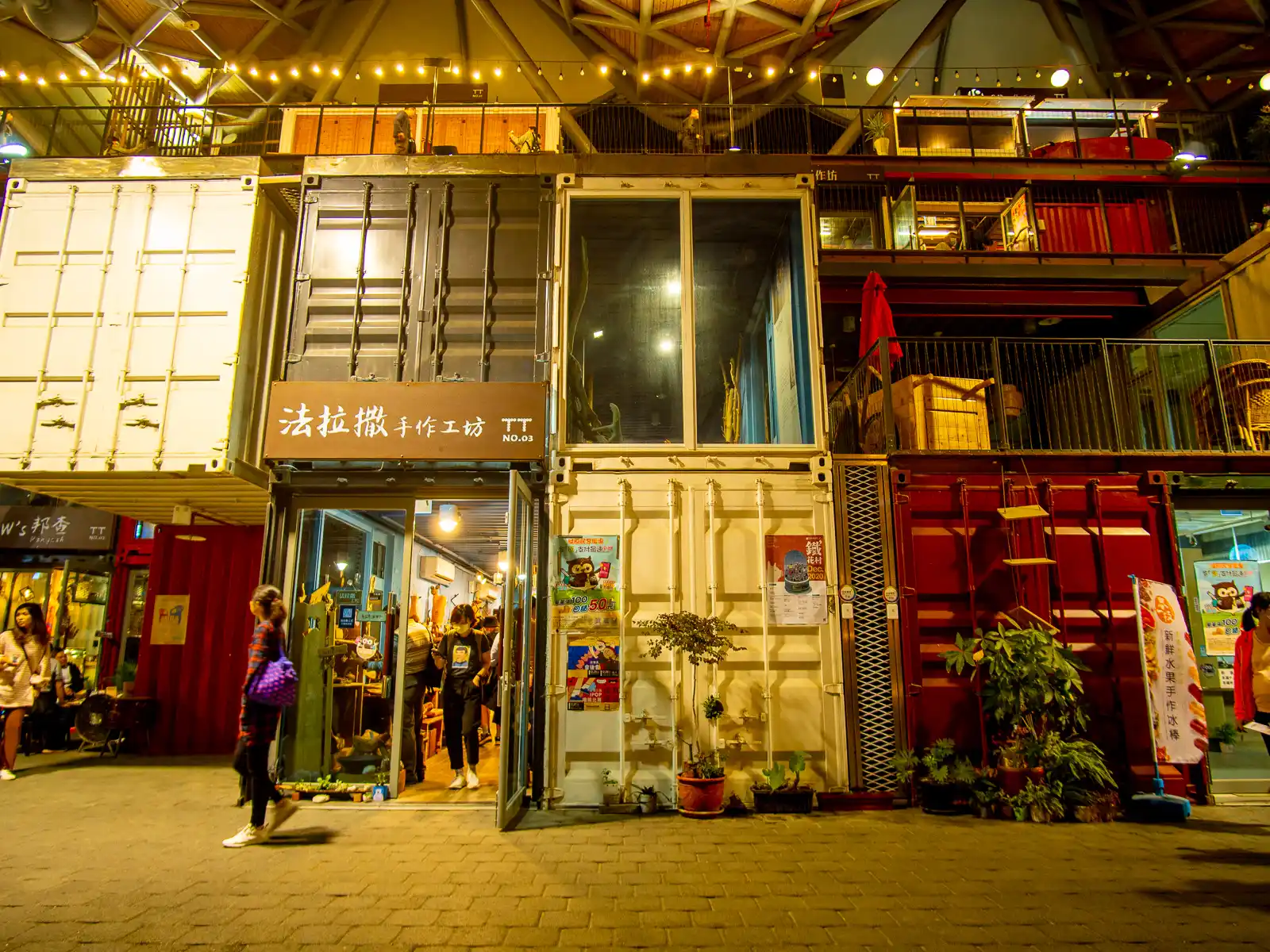
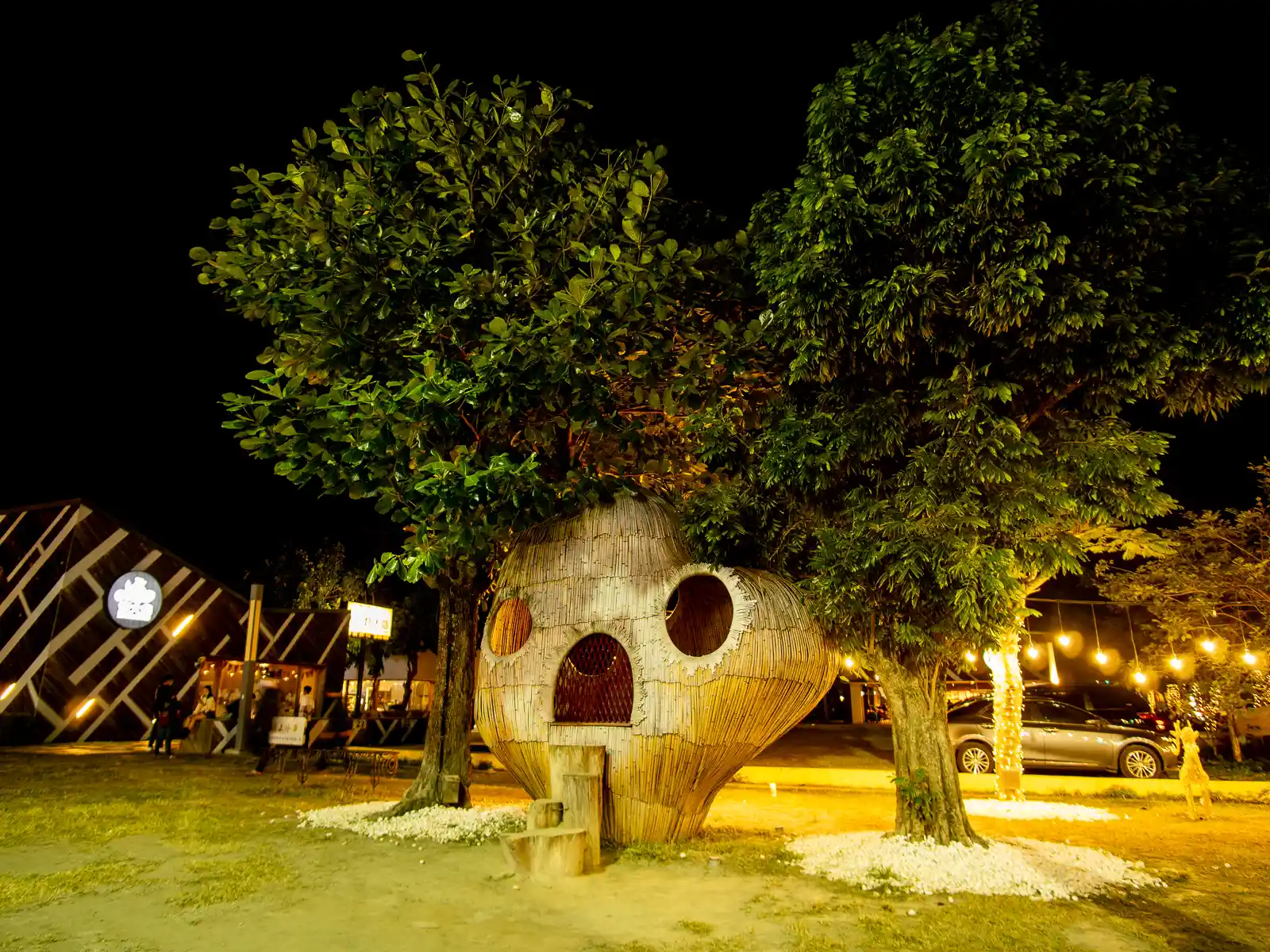
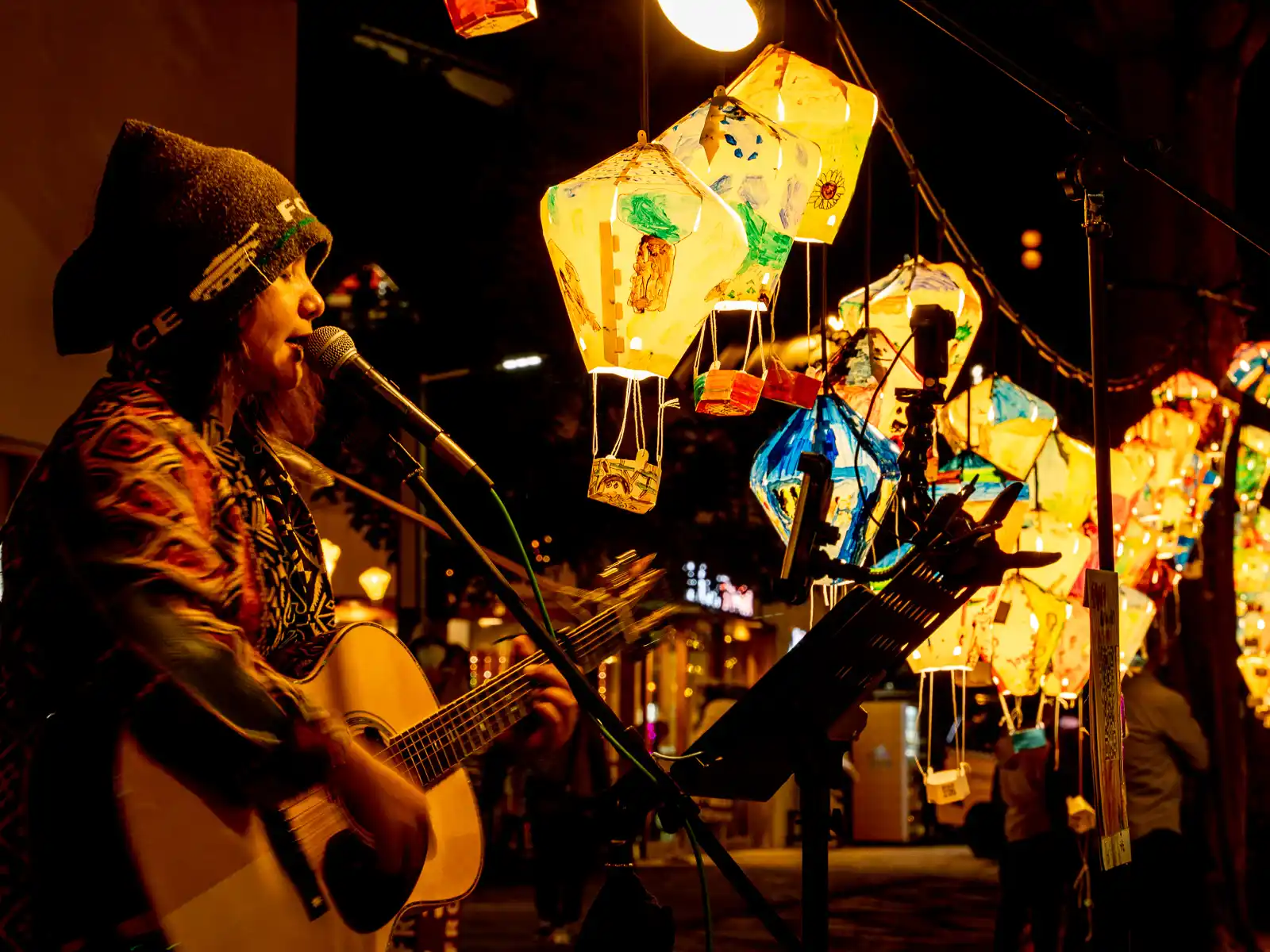
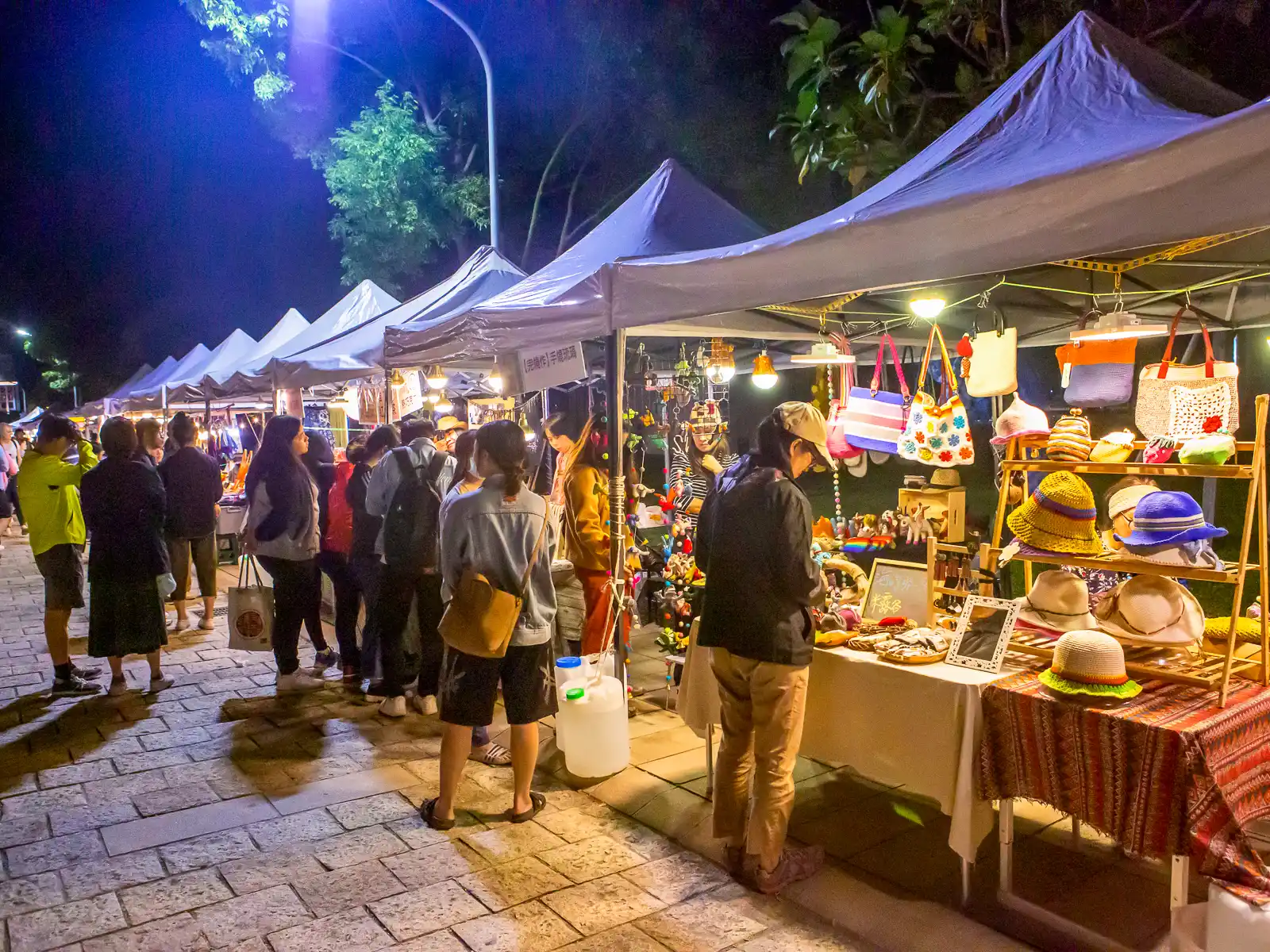
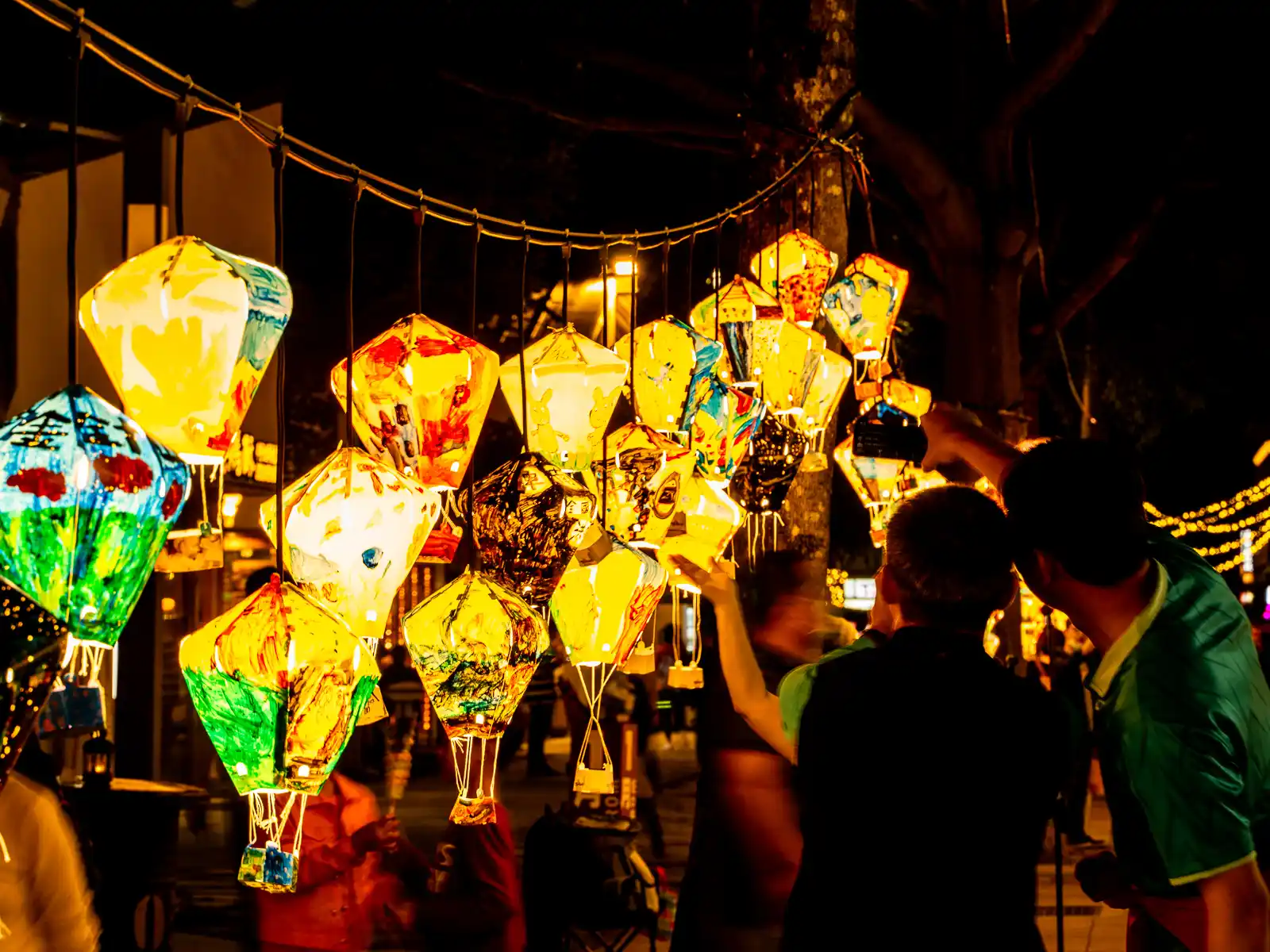
A popular destination for tourists and locals alike, Taitung Railway Art Village is the best place to enjoy the town’s laid back atmosphere and get a taste of its quirky artistic vibes.
This open-air complex is home to shops, performances spaces, installation art, and a local market featuring high-quality crafts and local farm products.
The village is particularly renowned for its vibrant atmosphere, with live music performances on the weekends by both up-and-coming local artists, and popular touring groups from around the island. Come for a unique blend of music, art, culture and friendliness that exemplifies the spirit of Taitung.
Coastal Attractions: Xiaoyeliu, Jialulan Recreation Area, Fushan Fish Reserve
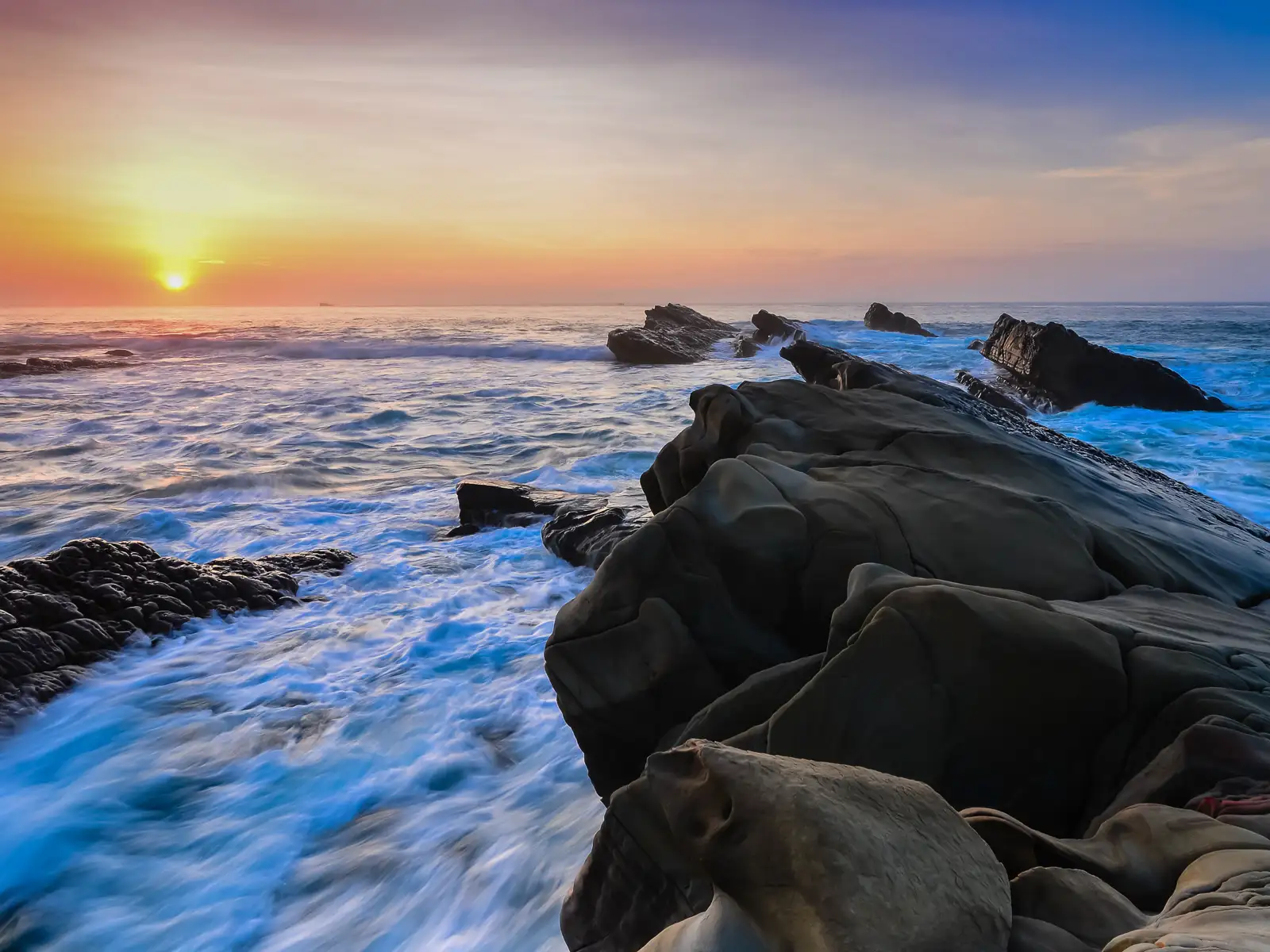
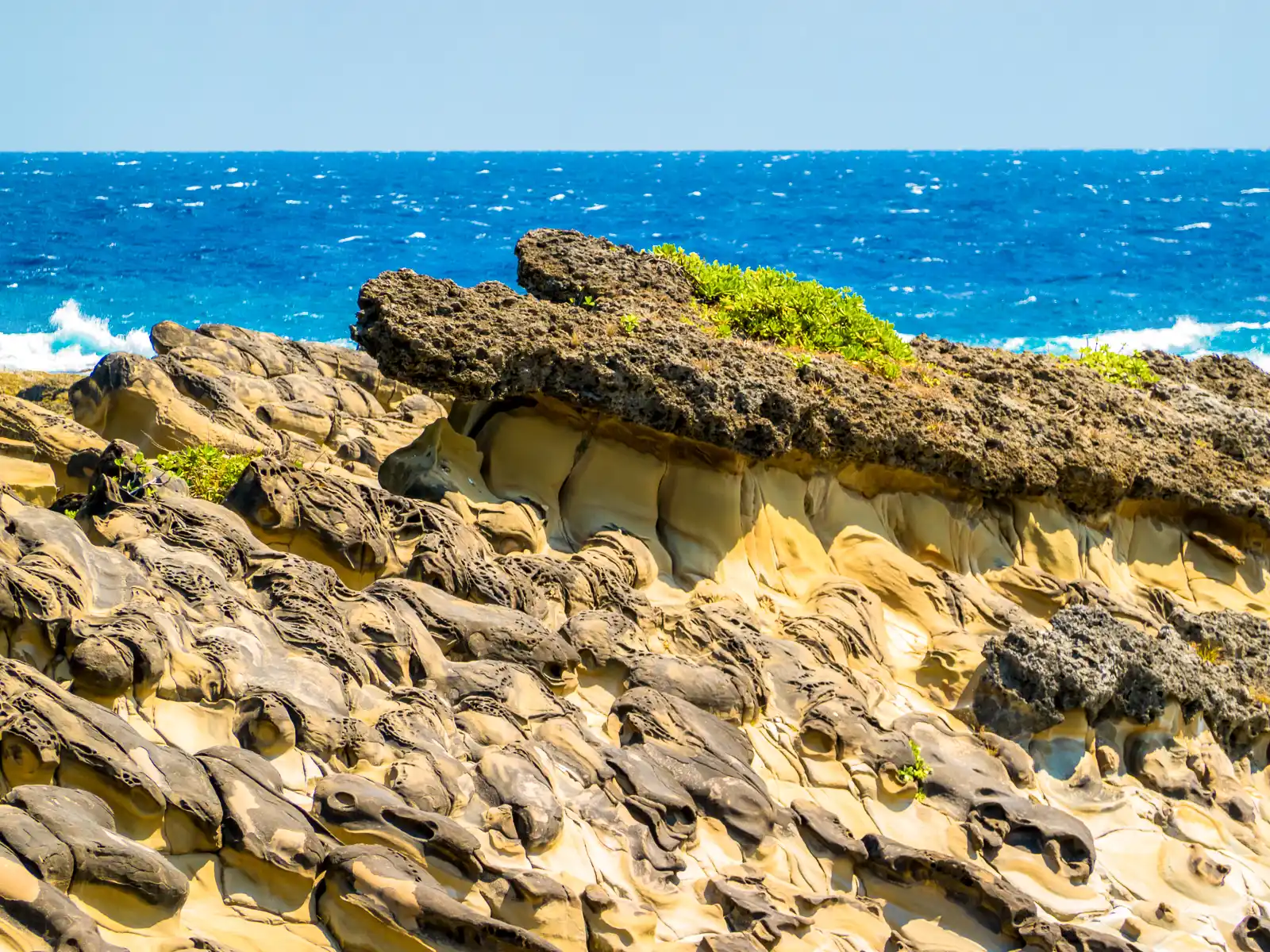

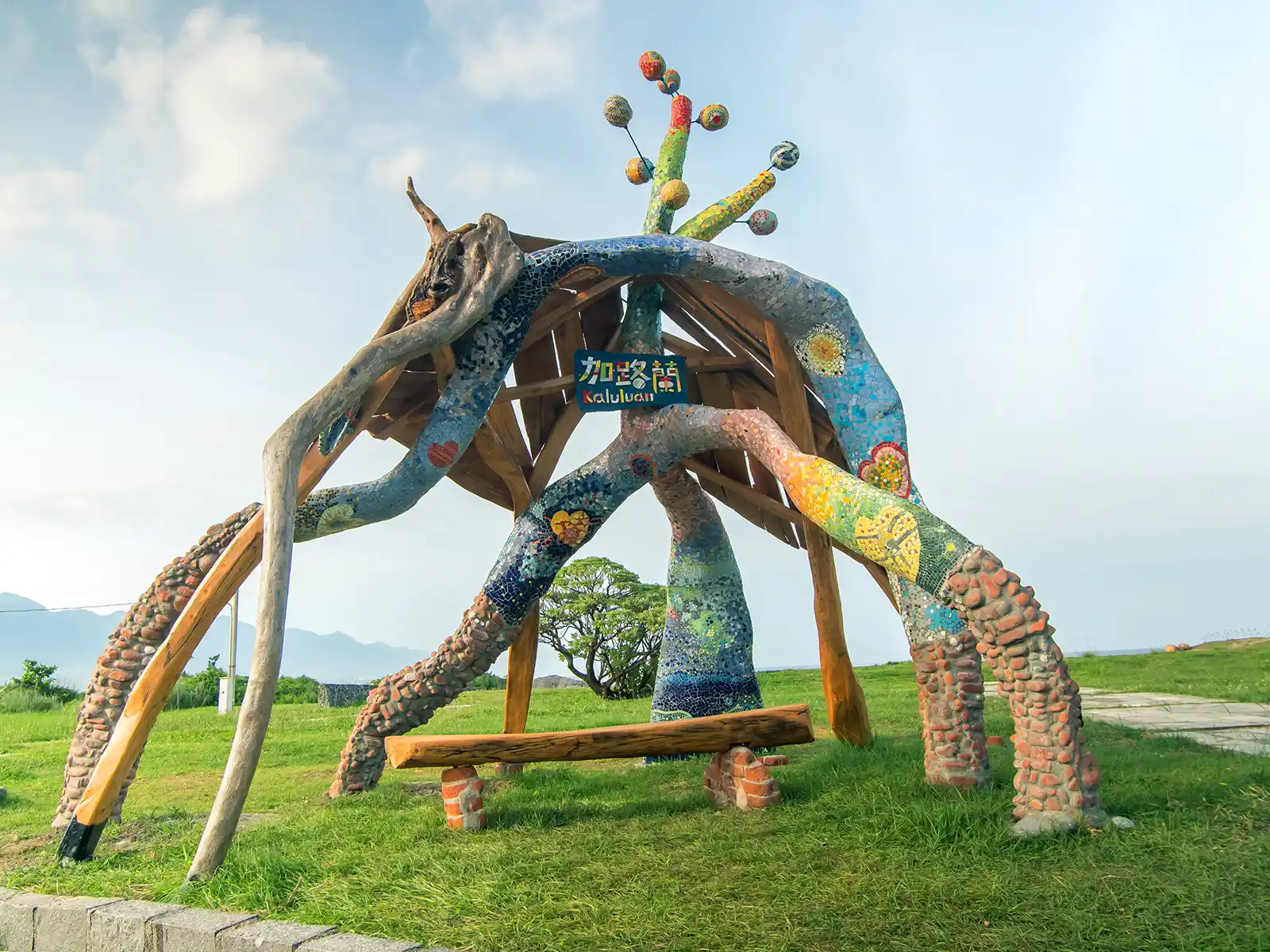
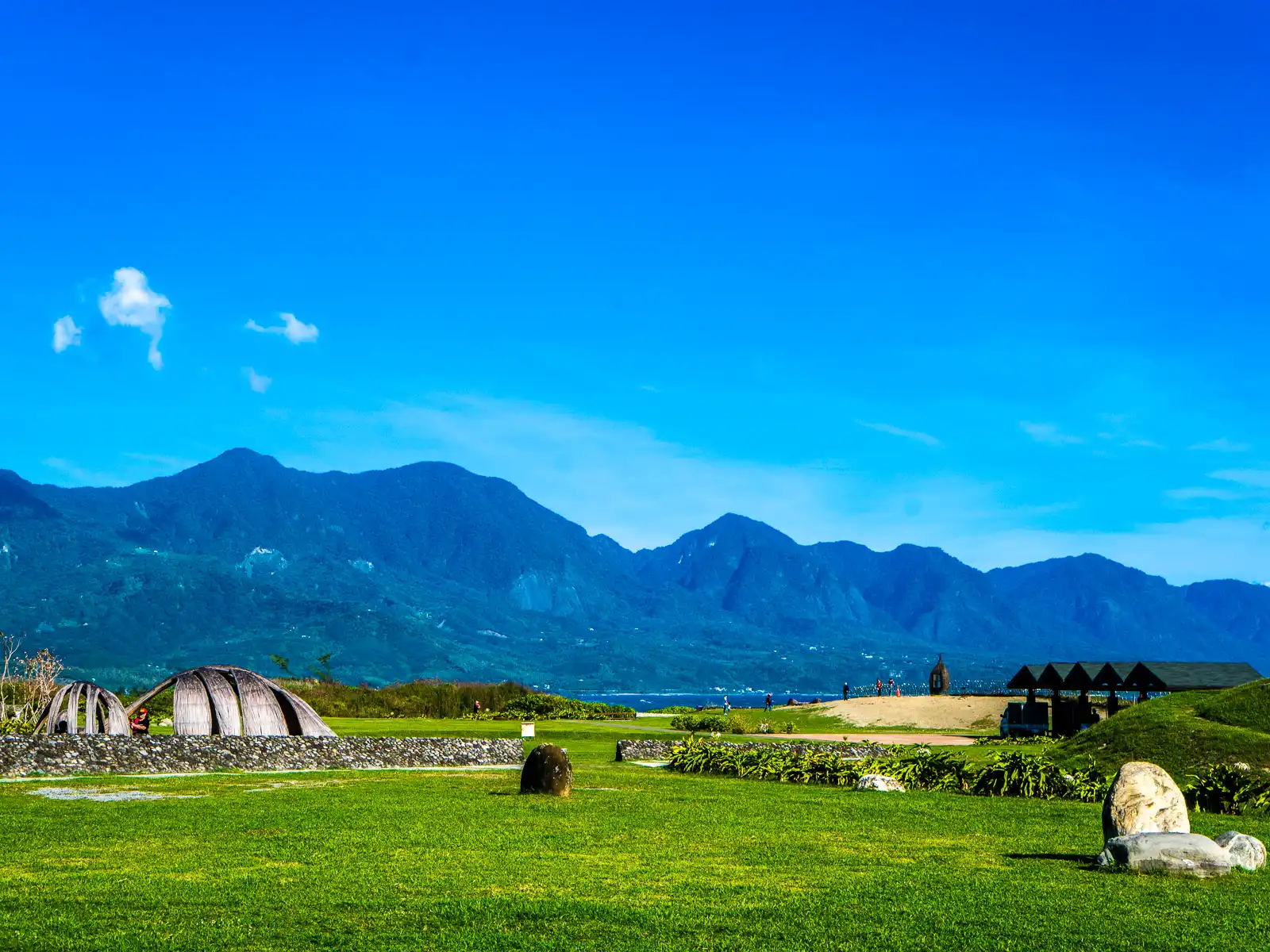
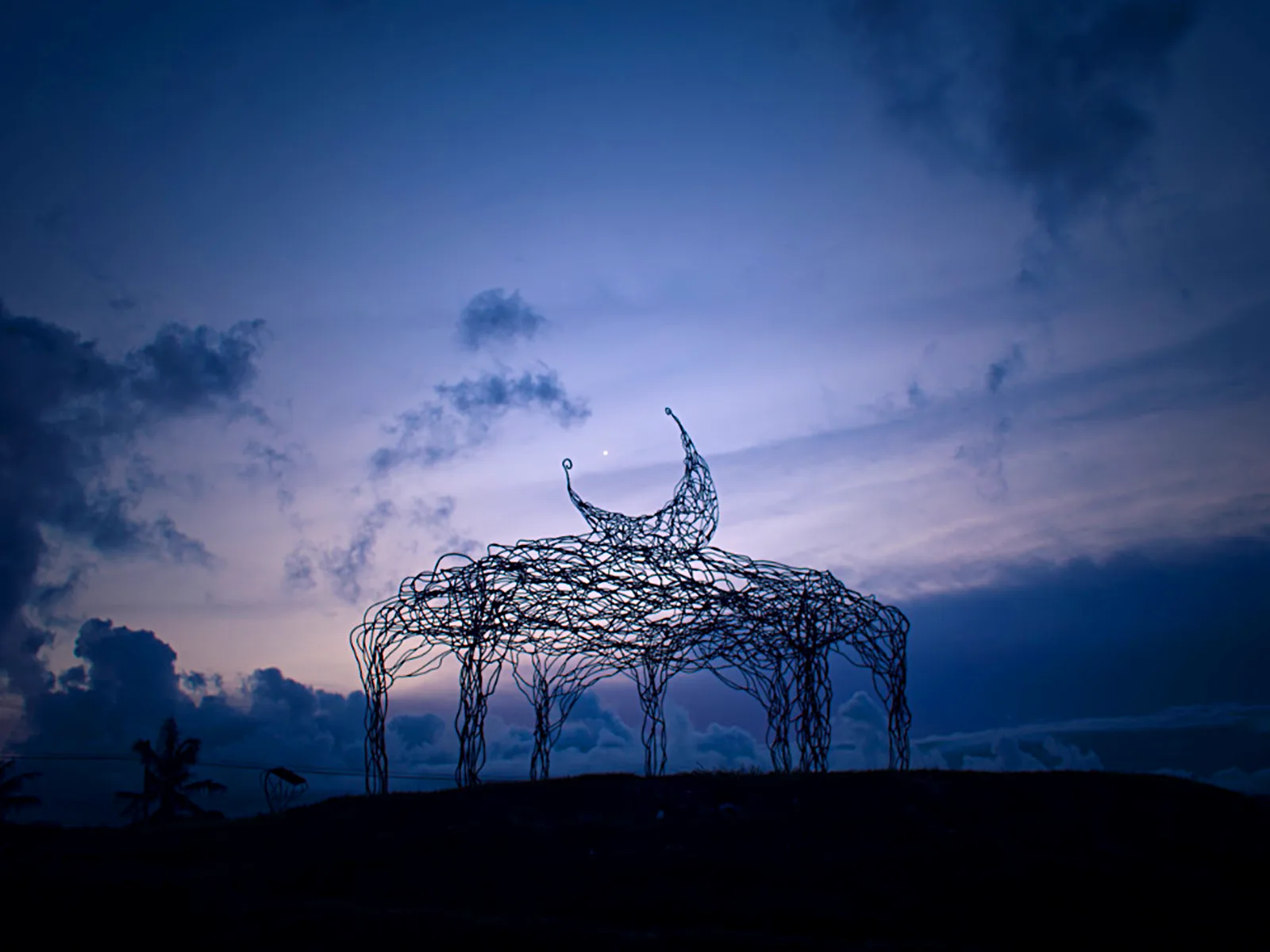
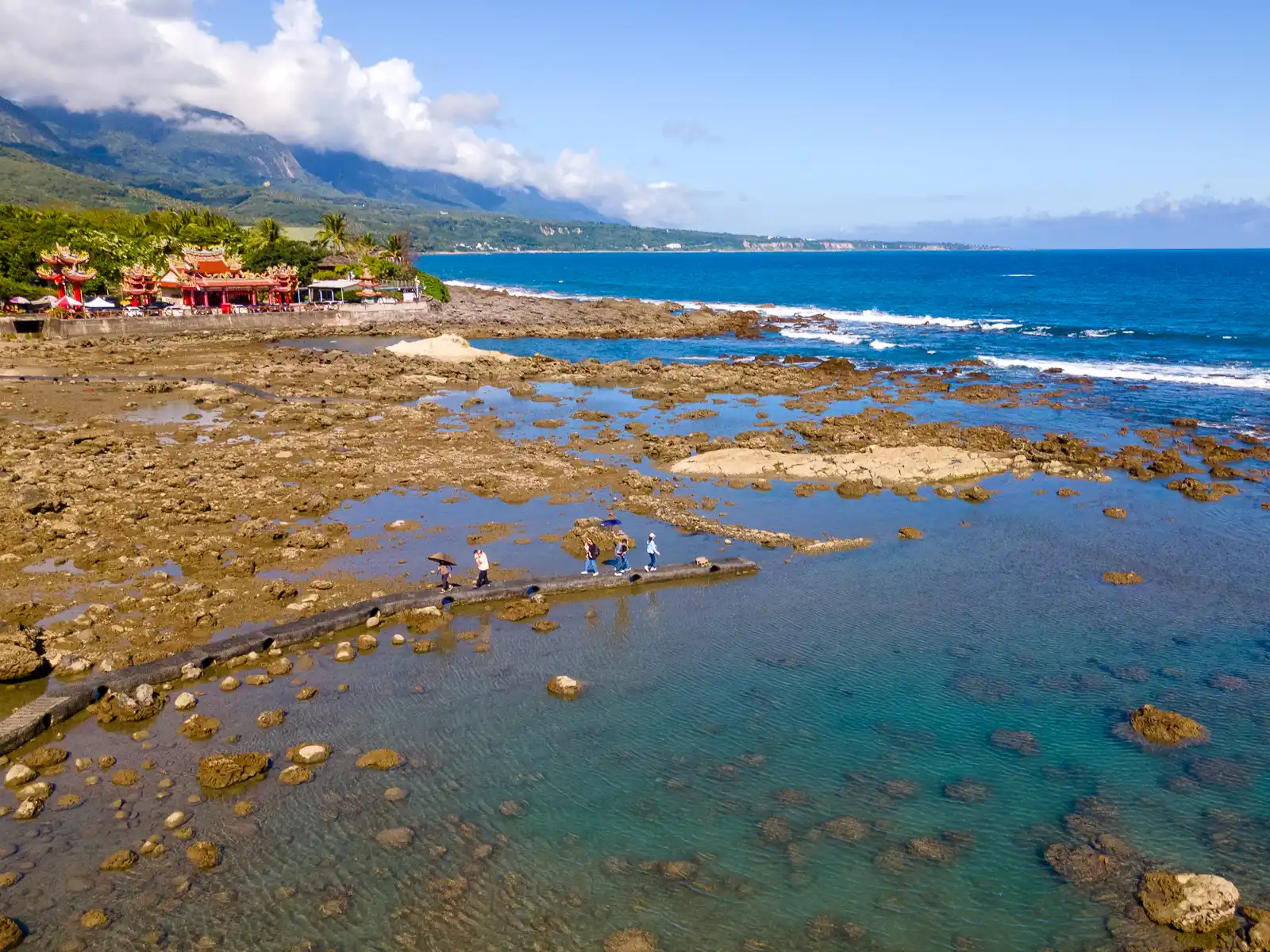
Xiaoyeliu, also known as “Fugang Geopark”, is a section of coastline that, like Yehliu in New Taipei City, features interesting rock formations made of weathered sandstone.
A short family-friendly trail system leads visitors down to the coast to witness this eroded landscape up close. Attractions here include mushroom-shaped rocks, hive-shaped rocks, and tofu-shaped rocks which are spread throughout what appear to be successive waves of raised sandstone. A rich ecosystem of mudskippers, hermit crabs, and other amphibians can also be found in and around the pathway here.
Jialulan Recreation Area, located less than a kilometer away, is an elevated seaside lookout adorned with several driftwood art installations. This rest area offers unobstructed views of the eastern coastline and is also a great spot for just taking a break and enjoying the soothing sounds of the sea.
At the Fushan Fish Reserve, also located nearby, several short paths extend into the biologically diverse intertidal zone. This eco-friendly educational stop is great for kids and anyone interested in observing local ocean life. A rare oceanside temple can be found just by the parking lot.
Sanxiantai
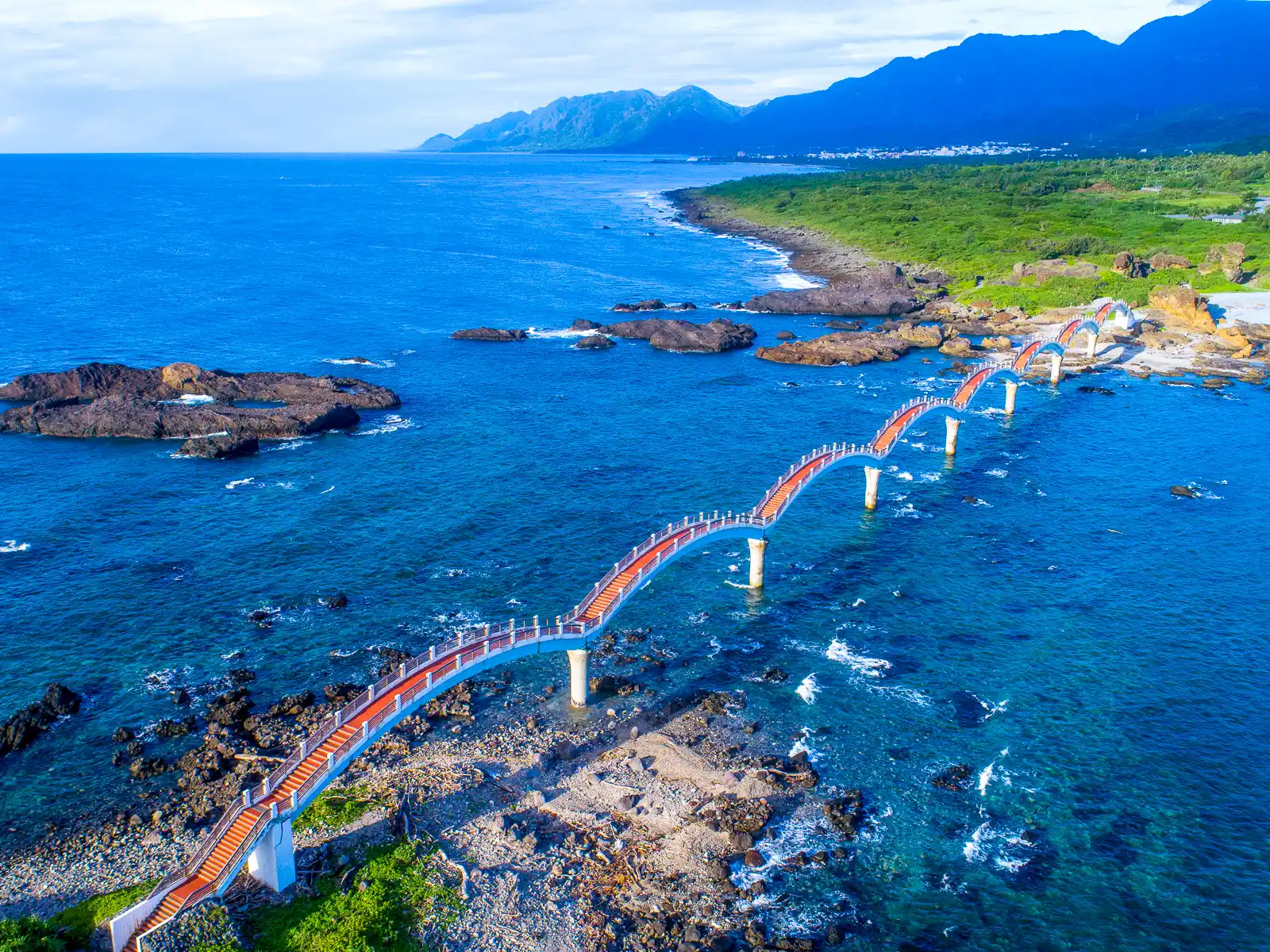
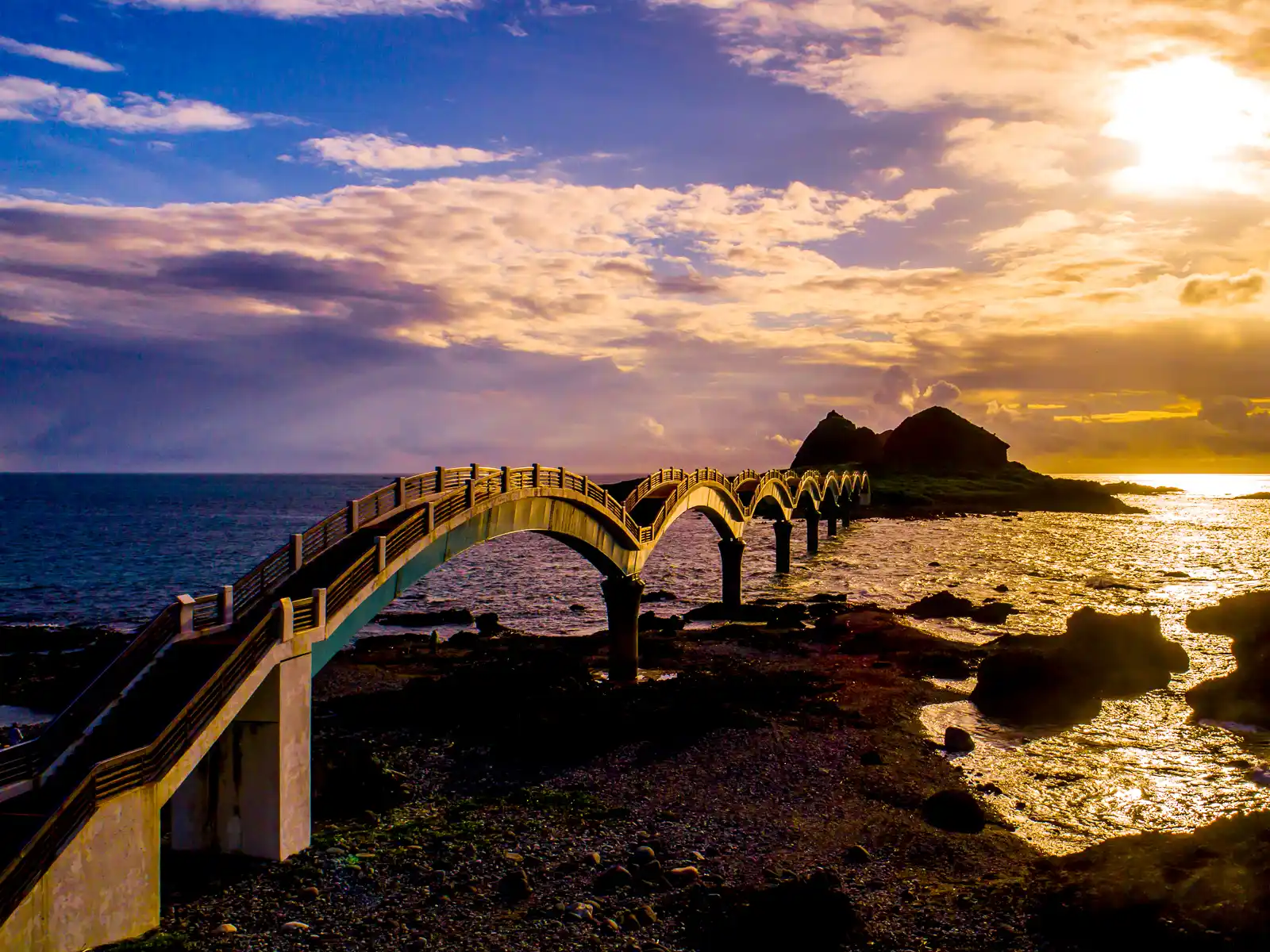
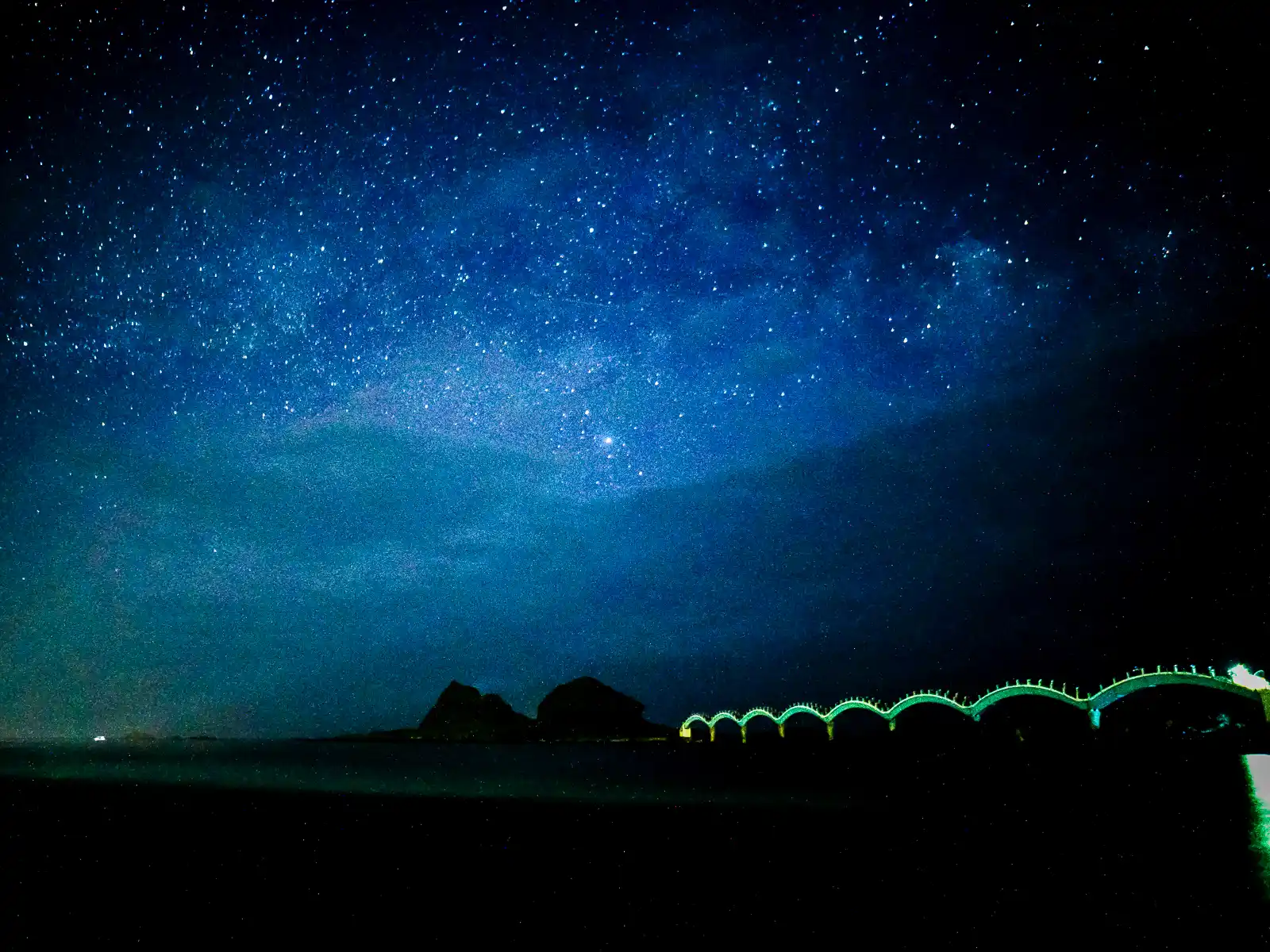
Once a prominent headland extending into the ocean, the island of Sanxiantai has since been separated from the mainland by the relentless forces of coastal erosion. The island offers several trails for visitors to explore, and it’s possible to climb to the lighthouse for a panoramic view of the eastern coastline and the nearby Amis (an indigenous tribe) village, Pisirian.
The Sanxiantai Arch Bridge, a photogenic and colorful eight arch bridge which connects the island to the mainland, is one of the main attractions here. Its imaginative design has become a magnet for photographers seeking the perfect sunrise shot.
Surrounded by coral, Sanxiantai also boasts a thriving marine ecosystem, making its neighboring beaches a treasure trove of marine life. Head over the bridge to explore the island’s short trail system and get an up-close view of its coastal rock formations and sea caves.
Green Island
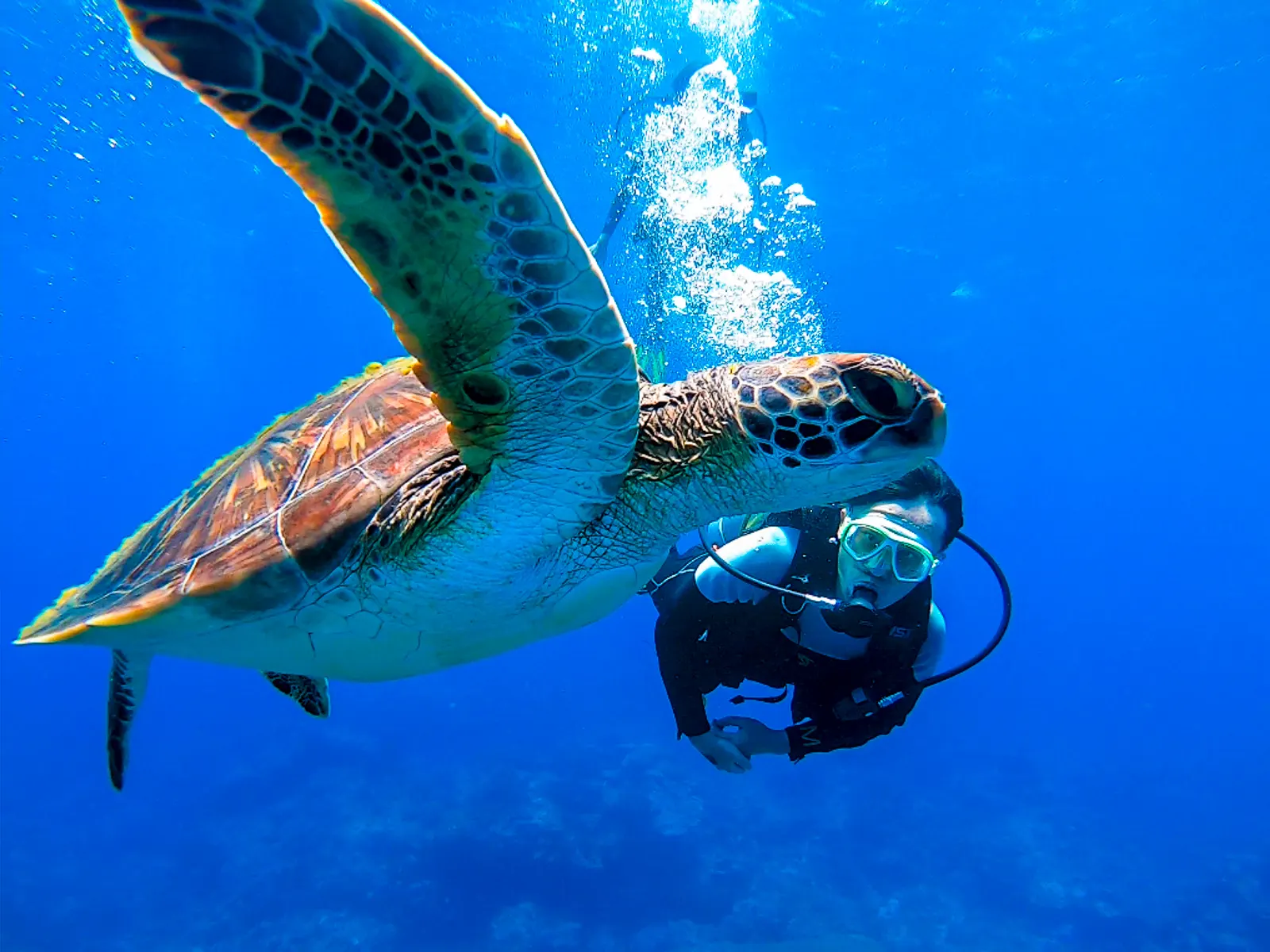
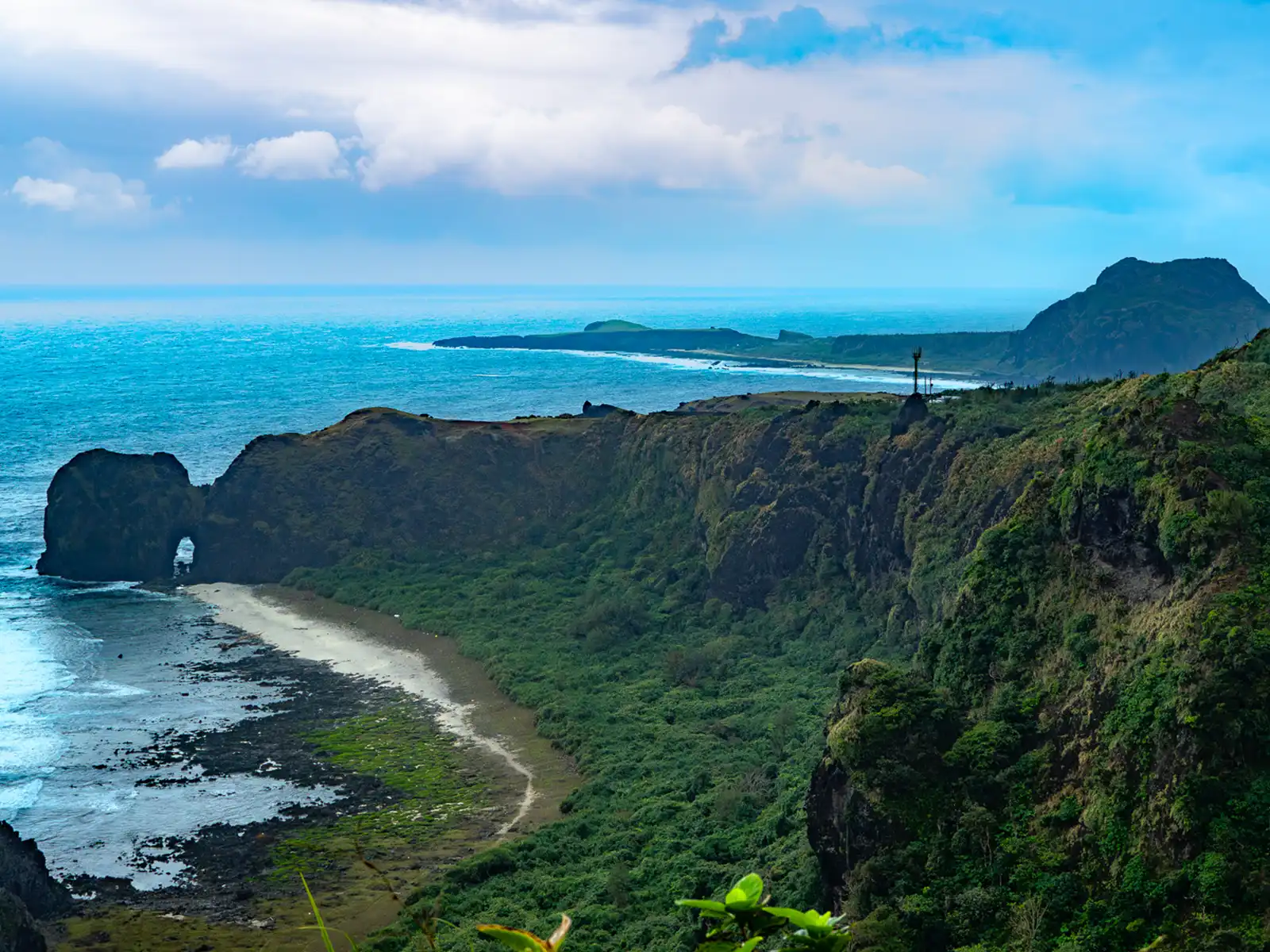
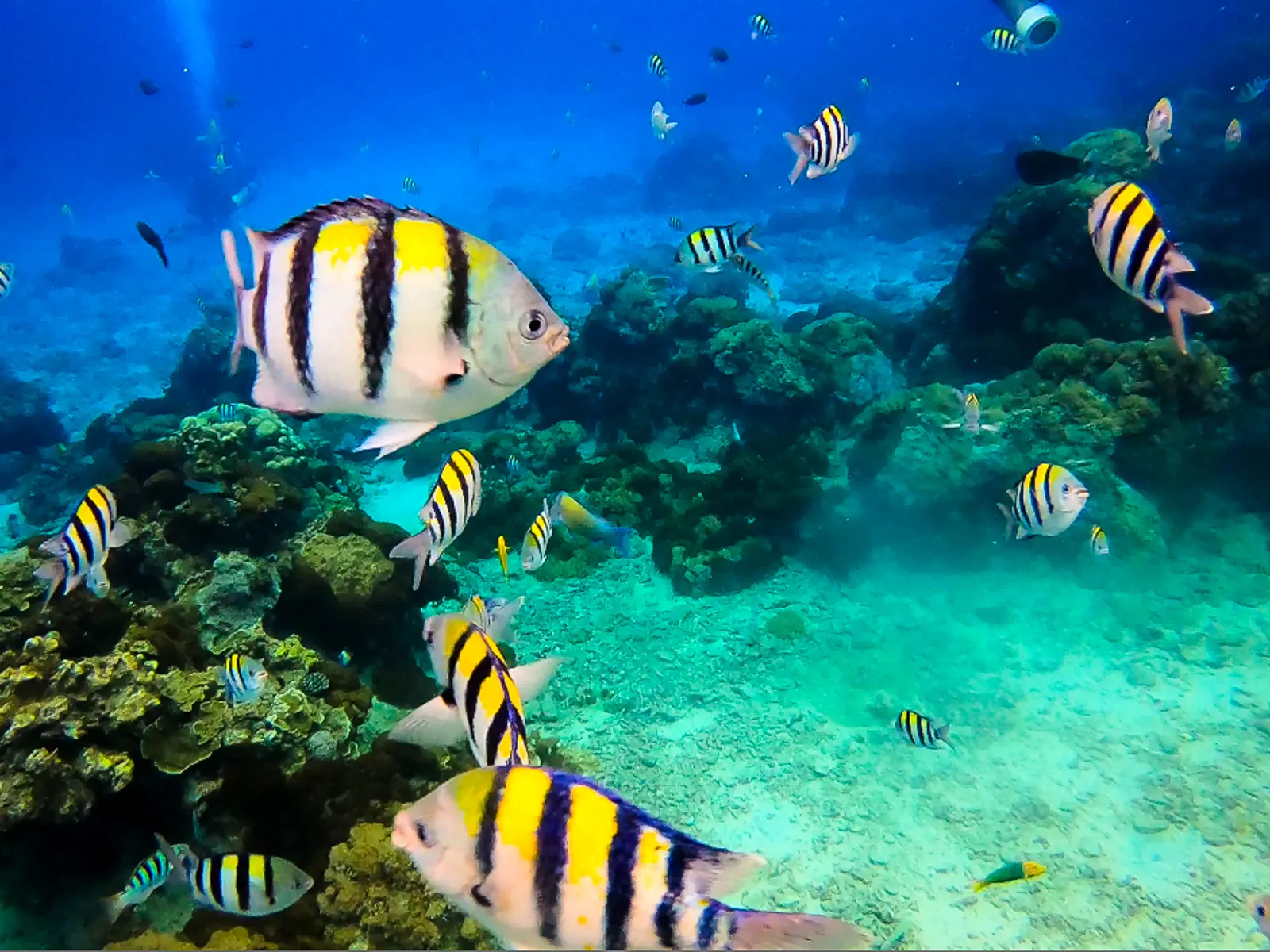
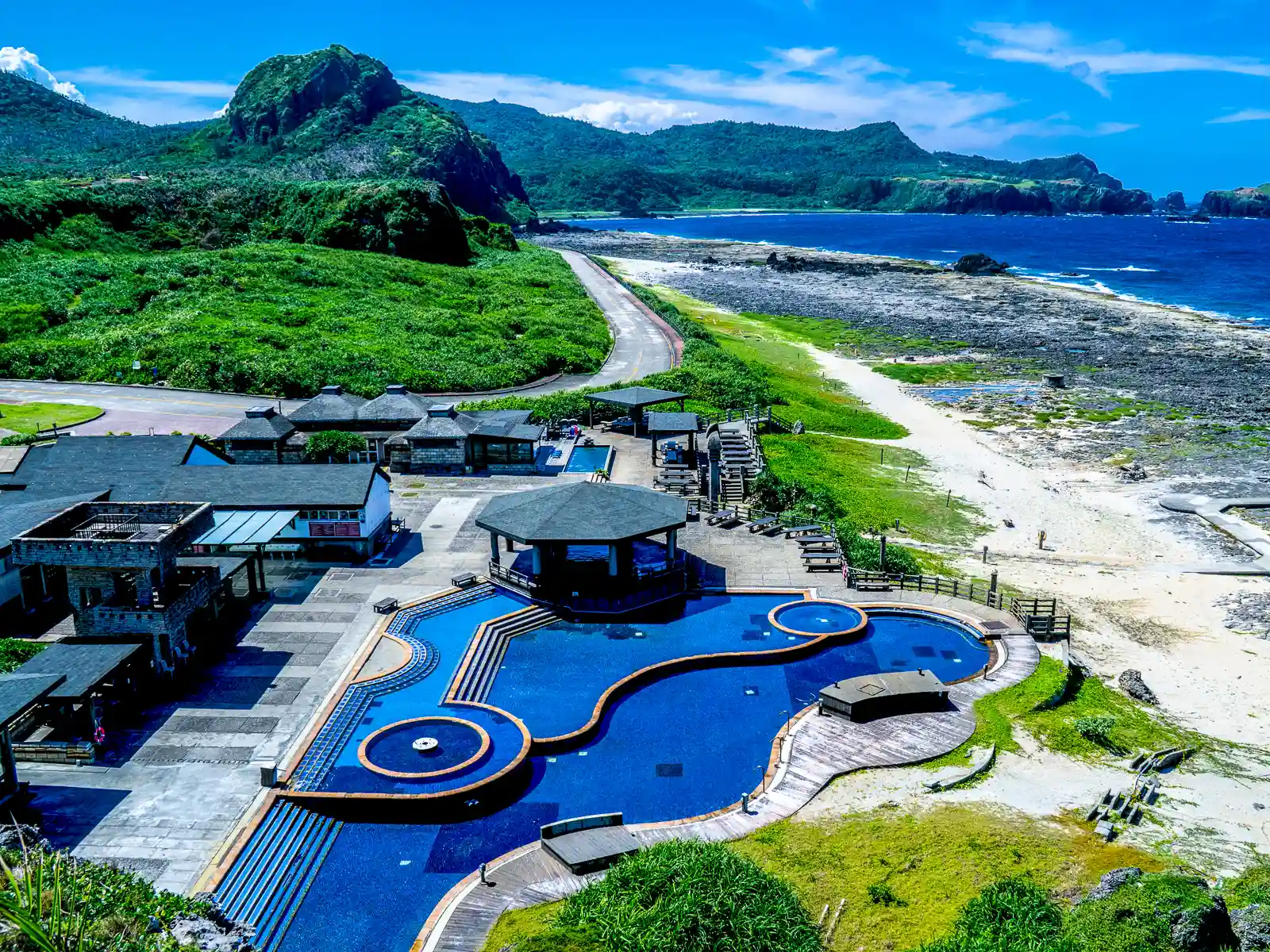
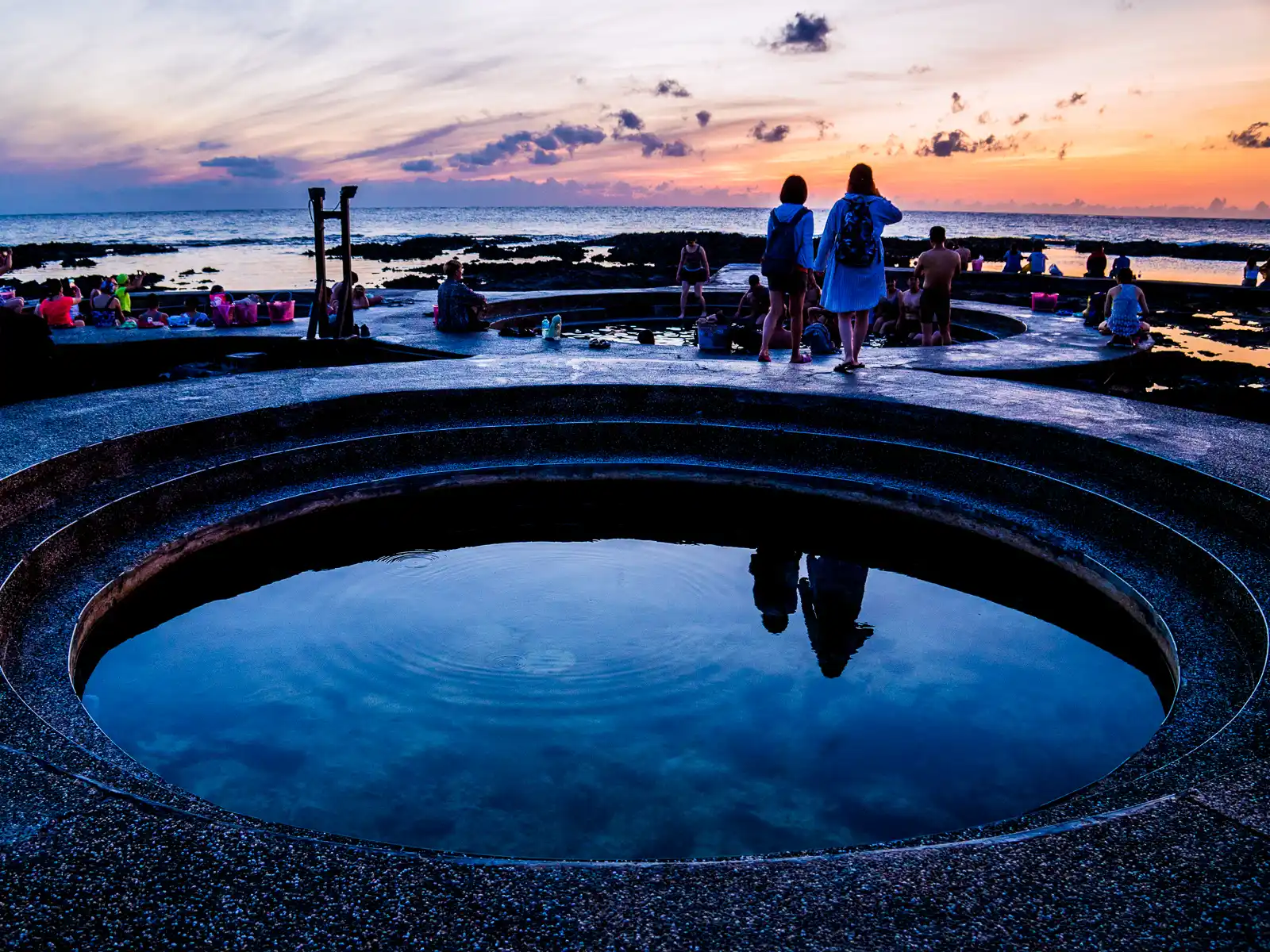
Green Island, a small volcanic island located off the east coast of Taiwan, is renowned for its stunning natural beauty, crystal-clear waters, and rich biodiversity. The island is widely recognized as being one of Taiwan’s premier diving spots, and is also famous for its unique saltwater hot springs and a relaxing “off-the-grid” experience.
The waters around Green Island boast impressive visibility, averaging between 25 to 30 meters when the weather is good. Diving is accessible year-round, and the island’s waters are adorned with beautiful coral. The marine life here is abundant and diverse, featuring various fish species and soft-bodied creatures.
In the winter months, Zhaori Hot Spring becomes one of the island’s top attractions. As a rare saltwater hot spring, it offers visitors the opportunity to enjoy a relaxing soak while listening to the soothing sounds of the waves crashing and taking in the panoramic ocean views.
Green Island White Terror Memorial Park
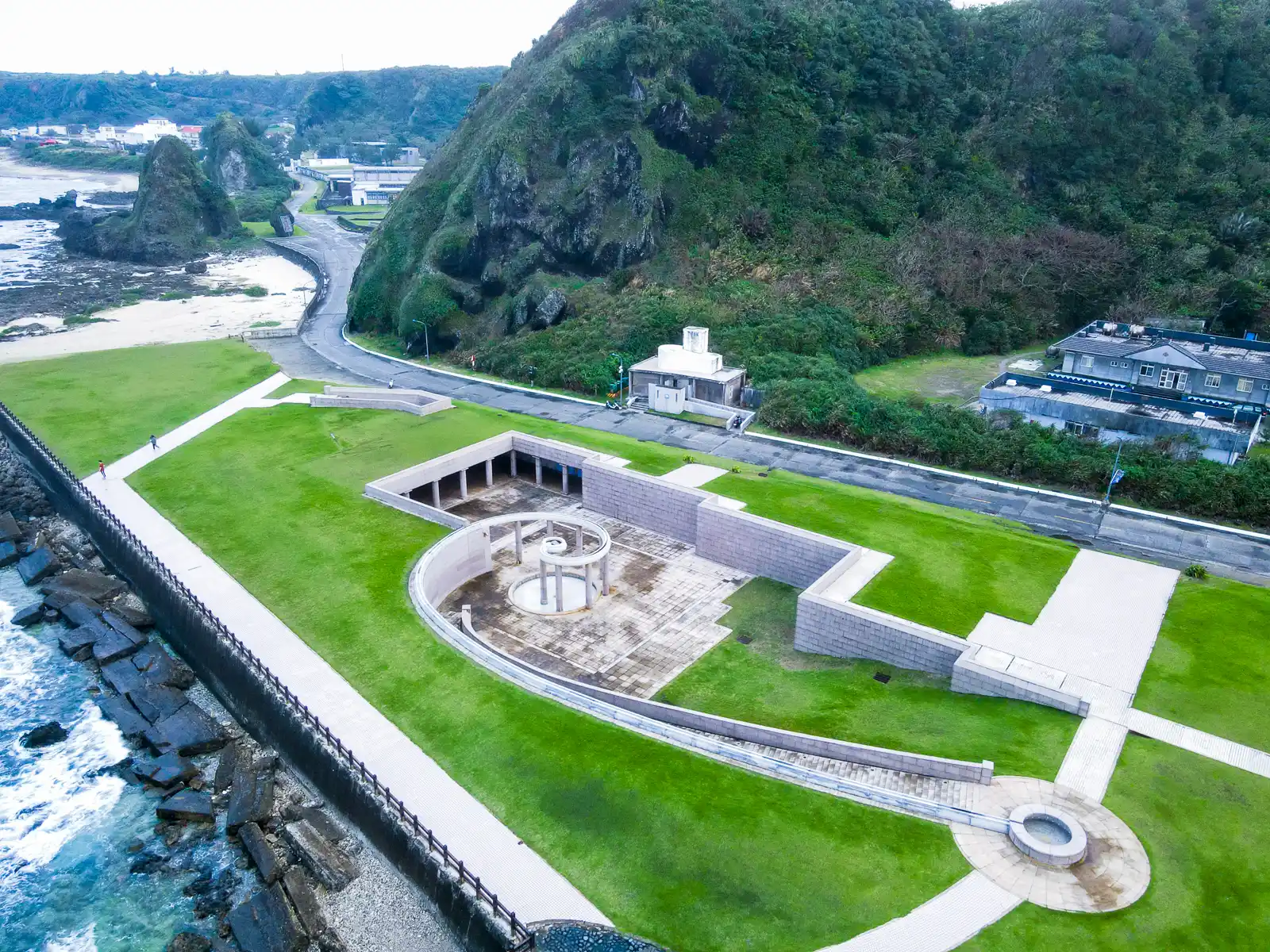

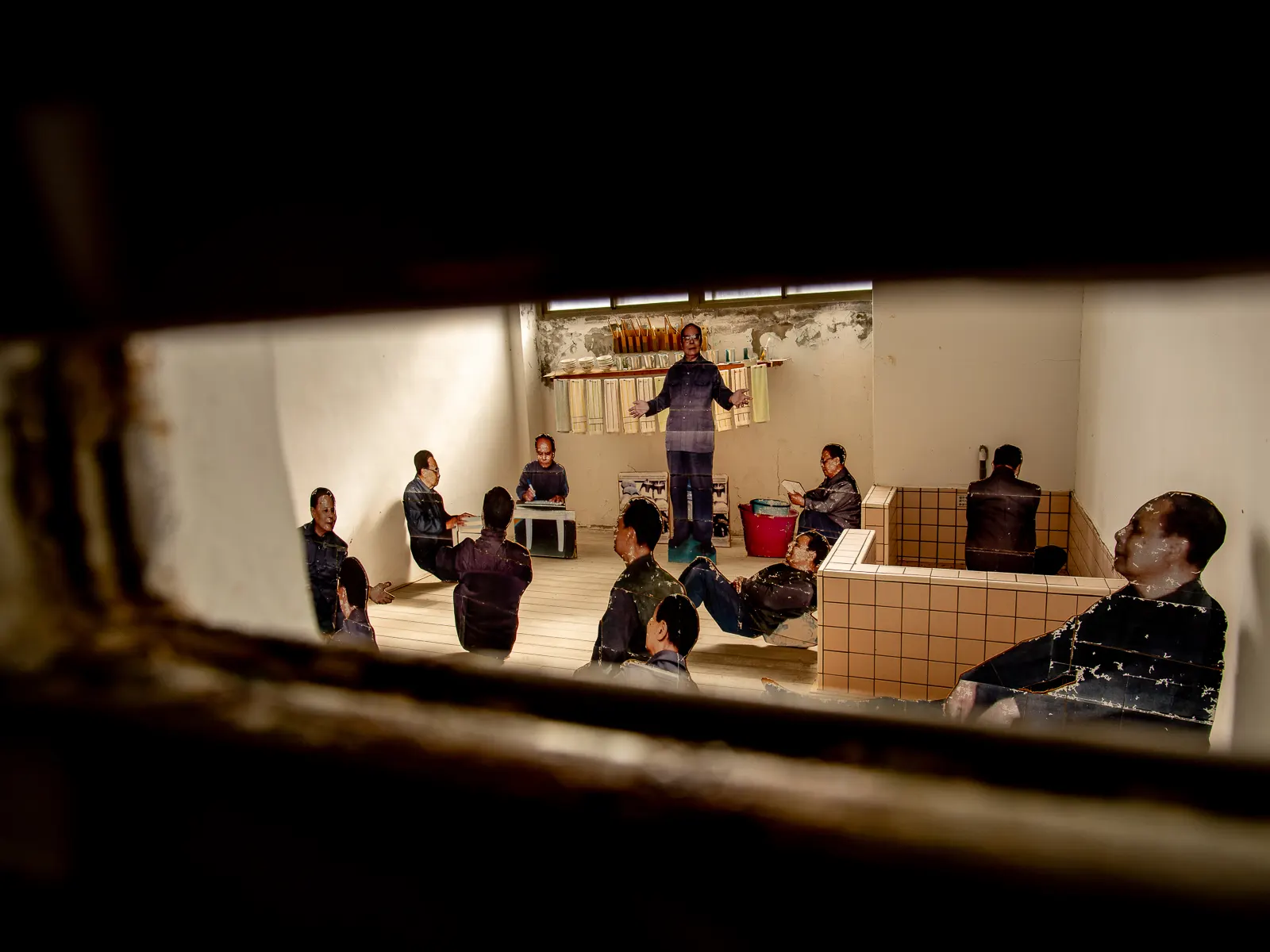
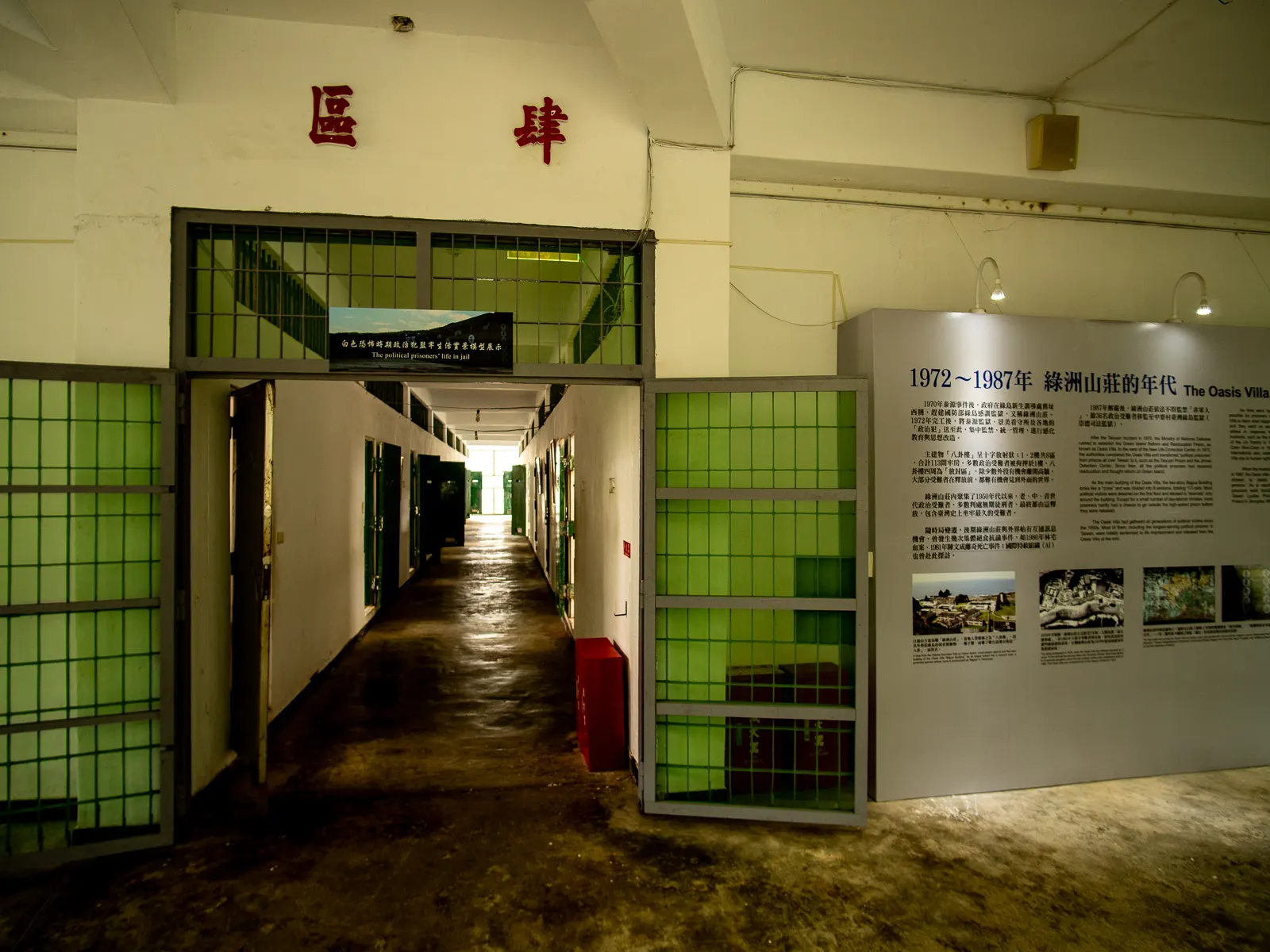
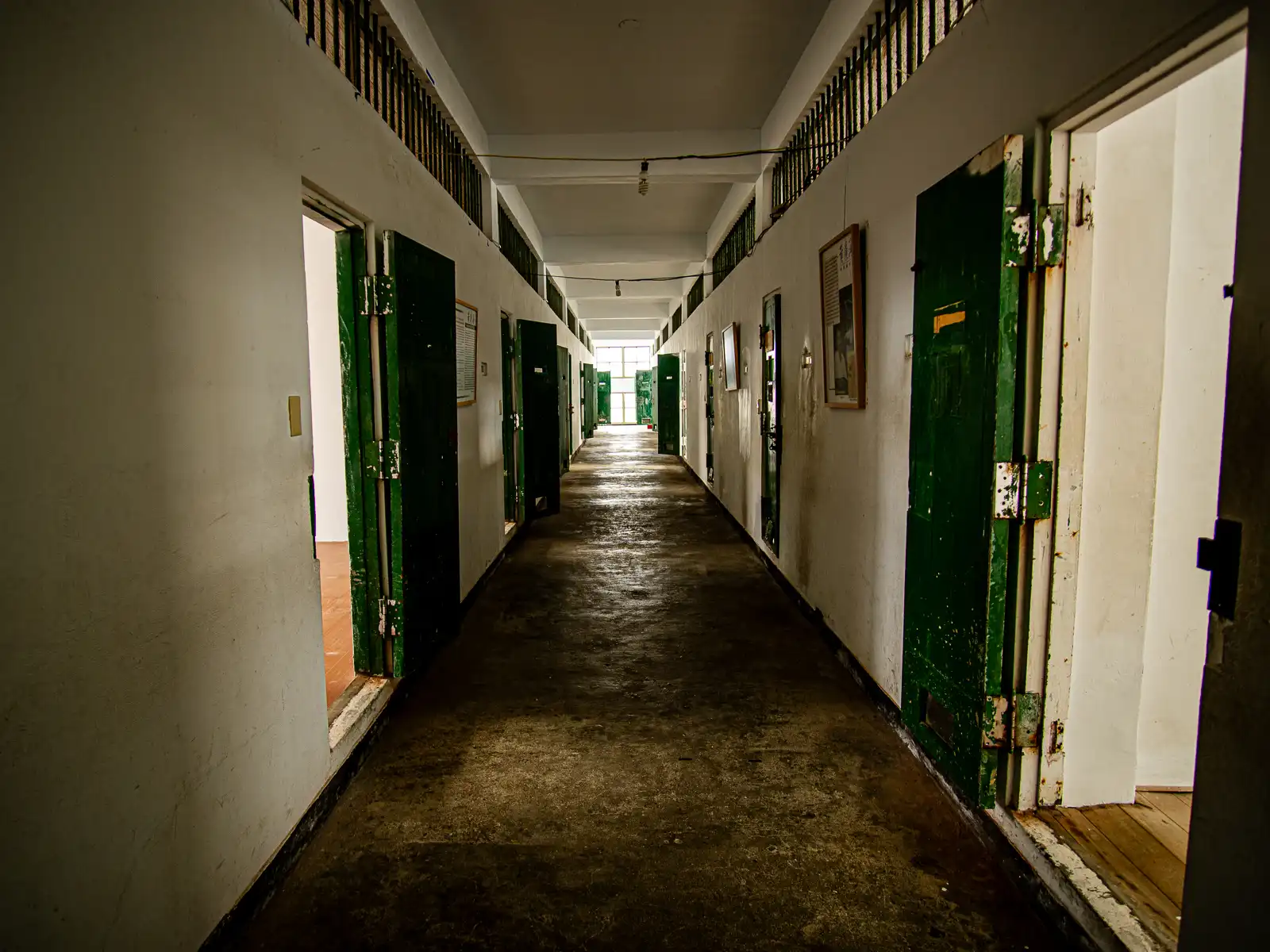
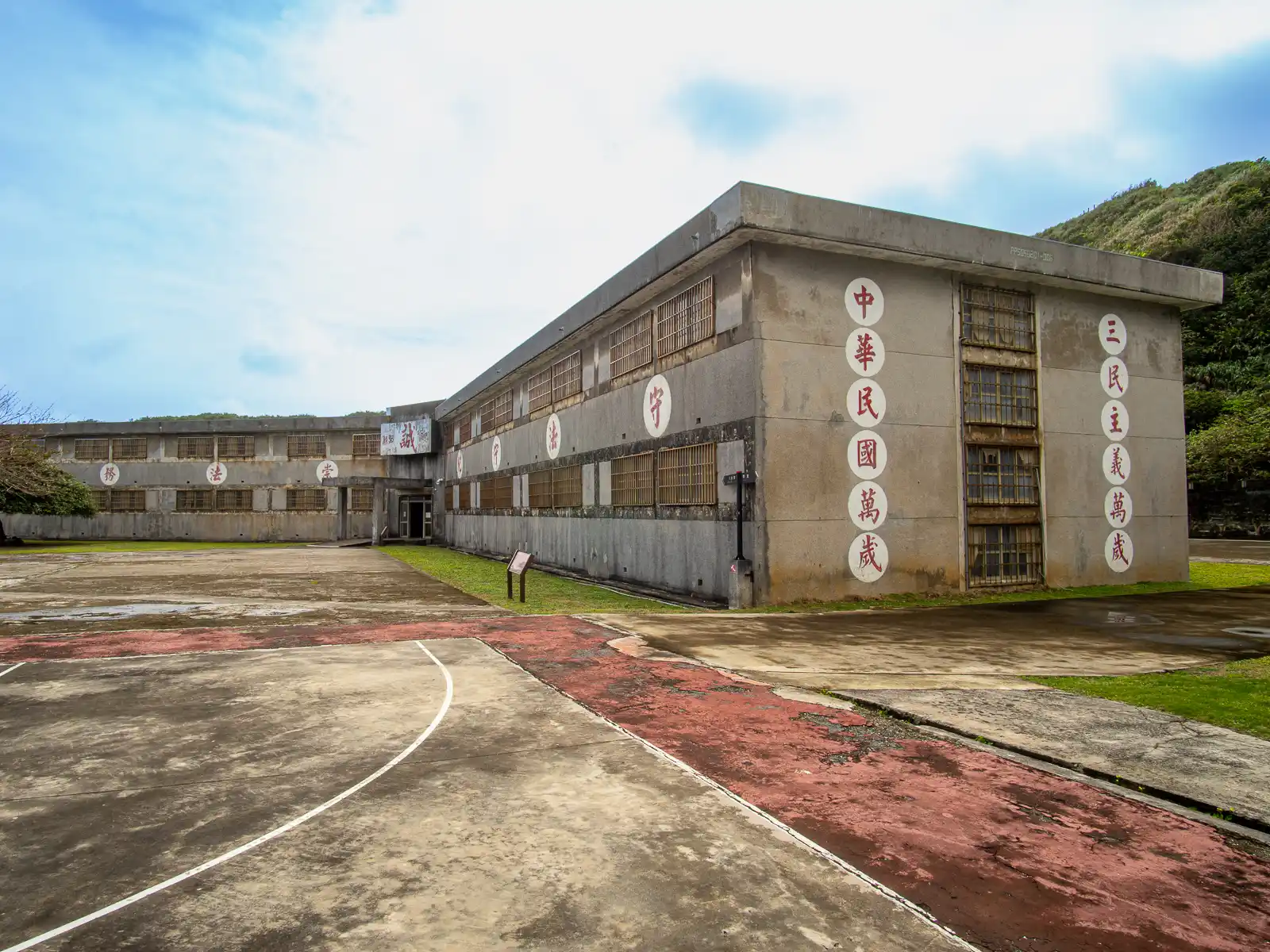
The Green Island White Terror Memorial Park is a “negative tourism” museum that commemorates the victims of Taiwan’s dark White Terror period. The honest and reflective nature of this site may be of interest to history buffs and those who are curious about Taiwan’s history as a burgeoning democracy.
Home to a historic prison where political prisoners, dissidents, and intellectuals were once detained, the area has now been reinvented as a park that documents the story of Taiwan’s transformation into a democracy, while acknowledging the mistakes that were made by the authoritarian government of its past.
One of the locations within the park, a hexagonal closed prison referred to as the Oasis Villa, is particularly striking. With high walls and four wings comprising 52 cells extending from its center, it was once filled with political prisoners. Today, the interior serves as an exhibition hall, showcasing historical films and engrossing displays that shed light on a darker chapter of Taiwan’s history.

